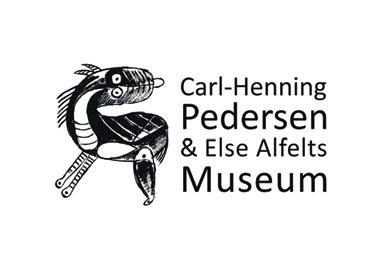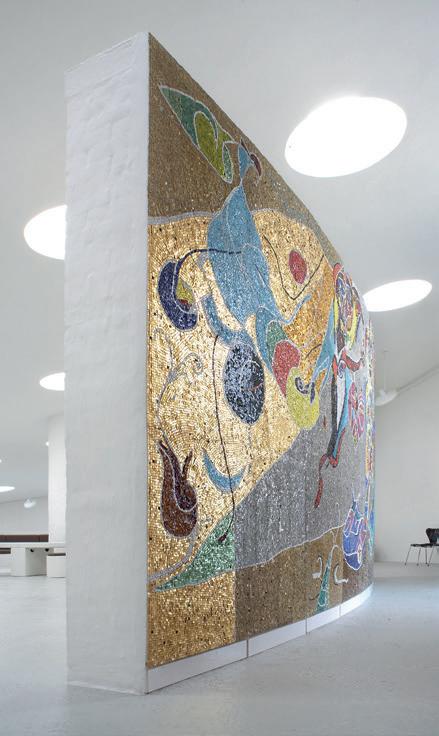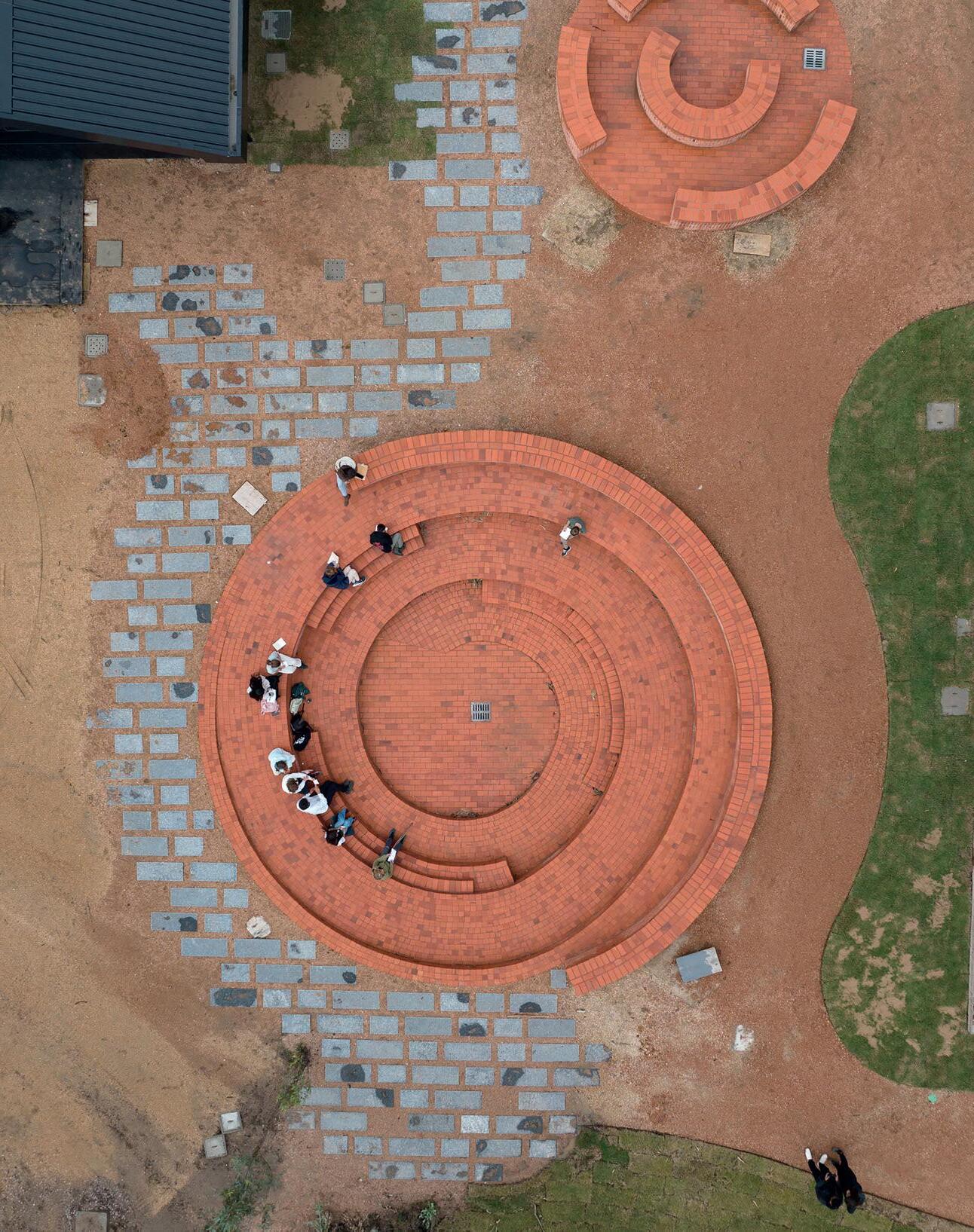

SCAN MAGAZINE
B O R N O F S T O R M S .
C R A F T E D F O R S K I N .
From the windswept coast of the Nordic Sea comes something rare
Wild bladderwrack torn free by storms, gathered by hand, and transformed into cutting-edge skincare actives.
- H A R V
S
These northern seaweed extracts soothe, hydrate and visibly strengthen the skin
Naturally rich in fucoidan, alginates and antioxidants with proven benefits for skin barrier support and a calming, neurocosmetic effect.
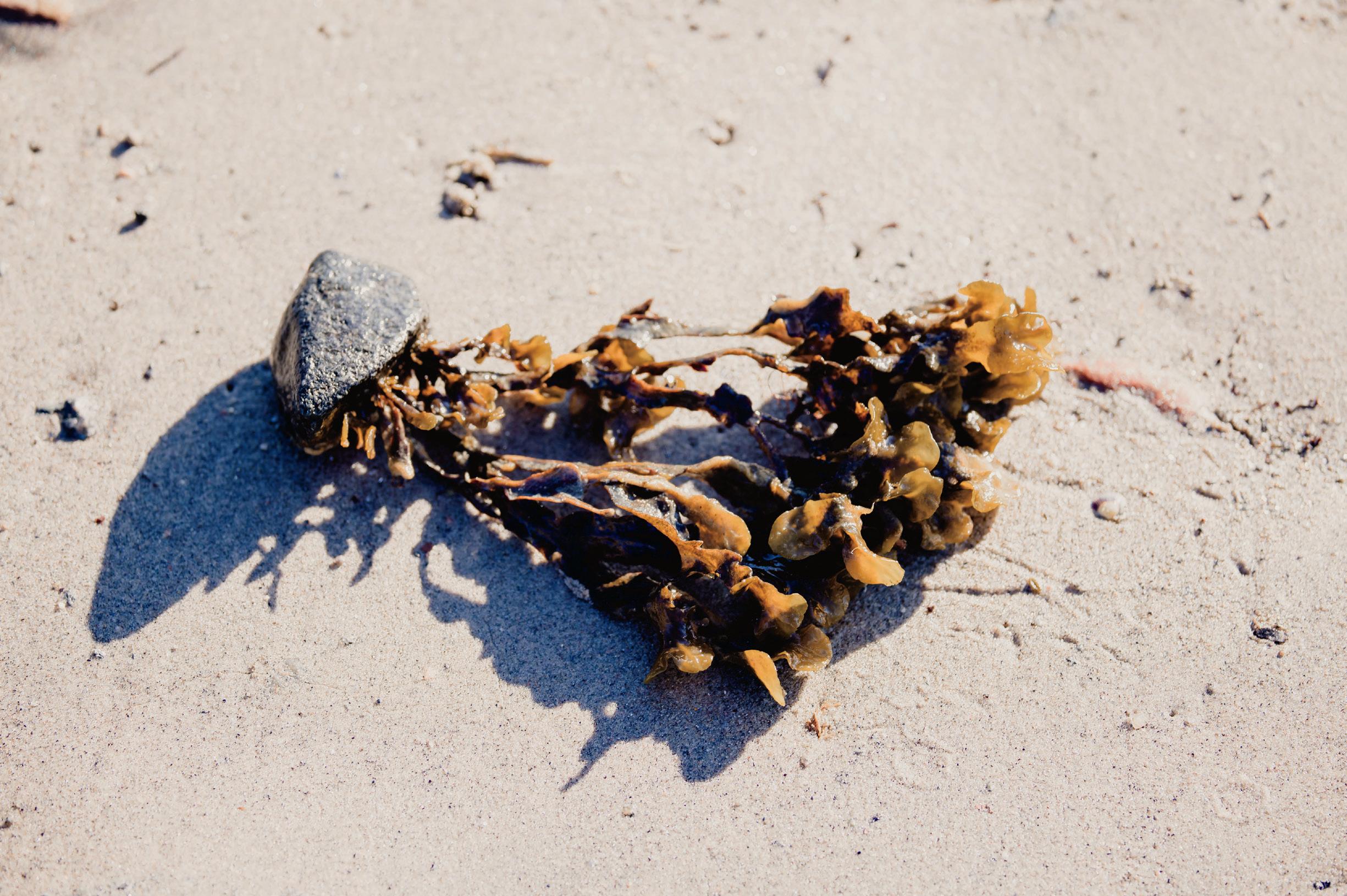

Editor’s Note
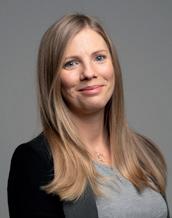
Dear Reader,
Sunny days, crisp air, and wind in your hair; autumn is officially upon us, and with it follows a true treat - our annual celebration of Nordic architecture. With an eye-opening selection of architects, materials, and projects, we could not be more excited.
We open the theme with a look ahead to World Architecture Festival in Miami, speaking with programme director Paul Finch about the ideas that shape the built environment. Further in, we explore a range of Scandinavian studios, projects and innovations: from stunning mountain-side hideaways to city landmarks, green bricks and solar-powered façades, all united by Scandinavia’s trademark functionality and human-centred approach.
A human-centred approach is also crucial to the interviewee of this month’s special feature. Two decades after founding the Oslo Center for Peace and Human Rights, Norway’s former prime minister Kjell Magne Bondevik reflects on spreading democratic values and inter-religious tolerance across the globe.
Meanwhile, in our lifestyle and food pages, we explore another quintessentially Scandinavian quality – namely that of life-savouring. From a comforting apple pie to a beer festival that outshines the rest, and a visit to the award-winning Copenhagen Distillery, hopefully, you will feel inspired to taste life the Scandinavian way.
Finally, we explore some of Bergen’s unique attractions - from its historic quarters to its living heritage, fresh seafood, and sauna traditions.
As always, we also present a host of exciting places to visit, stay, and eat, as well as a range of unique Scandinavian designs and international favourites. We hope you enjoy reading this issue as much as we enjoyed making it.

Signe Hansen, Editor
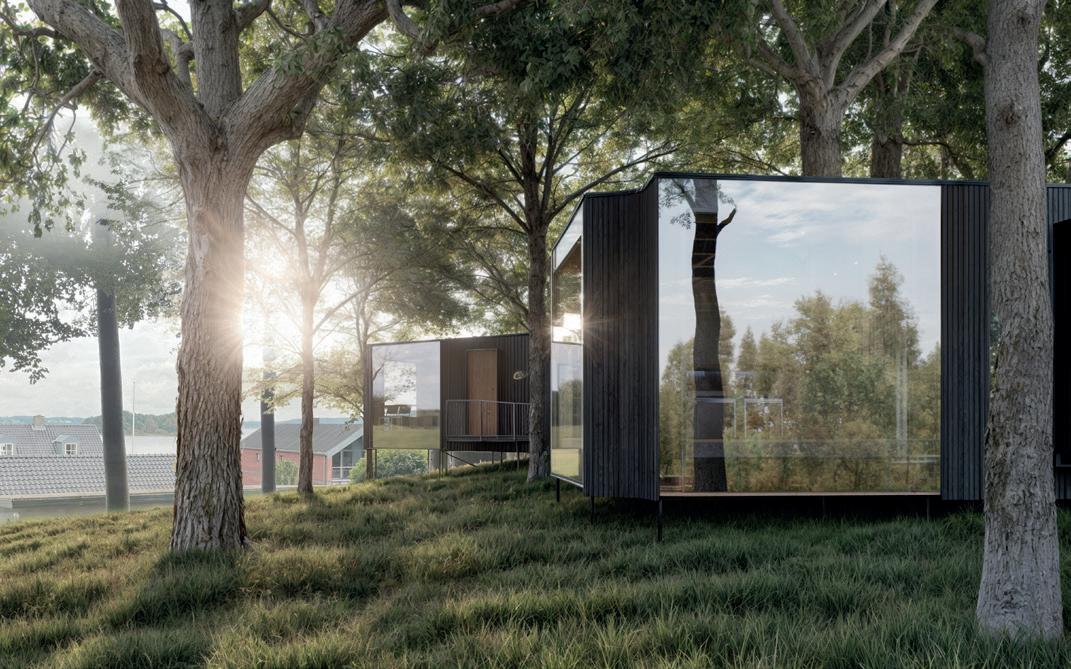
In this issue
SPECIAL FEATURE
6 Kjell Magne Bondevik on peace and understanding
Norway’s former prime minister Kjell Magne Bondevik founded the Oslo Center for Peace and Human Rights two decades ago. Scan Magazine catches up with Bondevik on his mission to spread democratic values and inter-religious tolerance worldwide.
DESIGN
10 Autumn colours and sustainable furniture
On our Design pages, we take a look at fashionable garments that will get you through the colder seasons. We also cover sustainable furniture, the Nordic way – bringing beauty and good karma into your home.
LIFESTYLE AND FOOD
20 Comforting apple pie and outstanding beer festival
Our food columnist Sofia Nordgren bakes a comforting apple pie with sweet apples and fragrant spices, and dedicated beer expert Malin Norman shares why a certain beer festival outperforms the rest.
SPECIAL THEME
26 Nordic architecture and interior design special
We open our annual architecture theme with World Architecture Festival, which takes place in Miami in November. This year’s theme is centred around hearts and minds. Scan Magazine catches up with WAF’s programme director, Paul Finch, for a glimpse of the upcoming event.
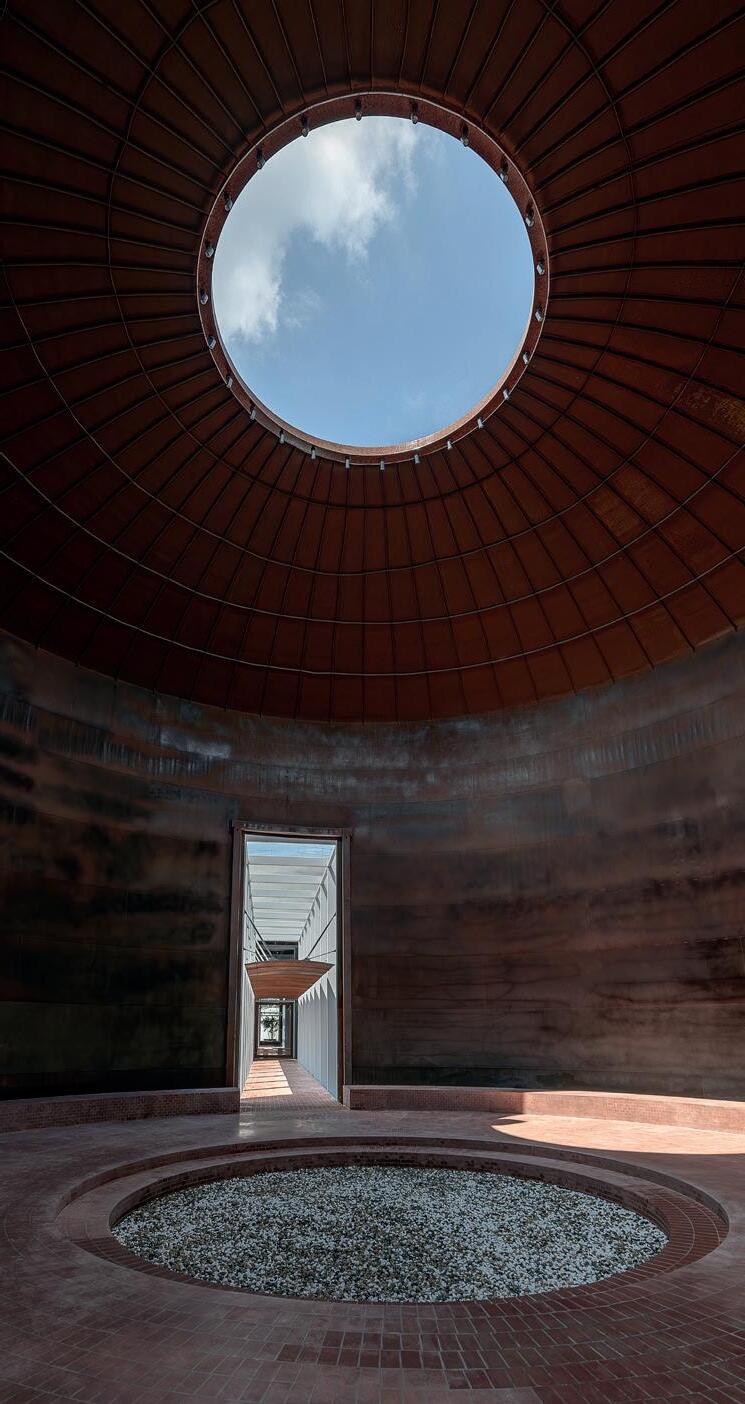
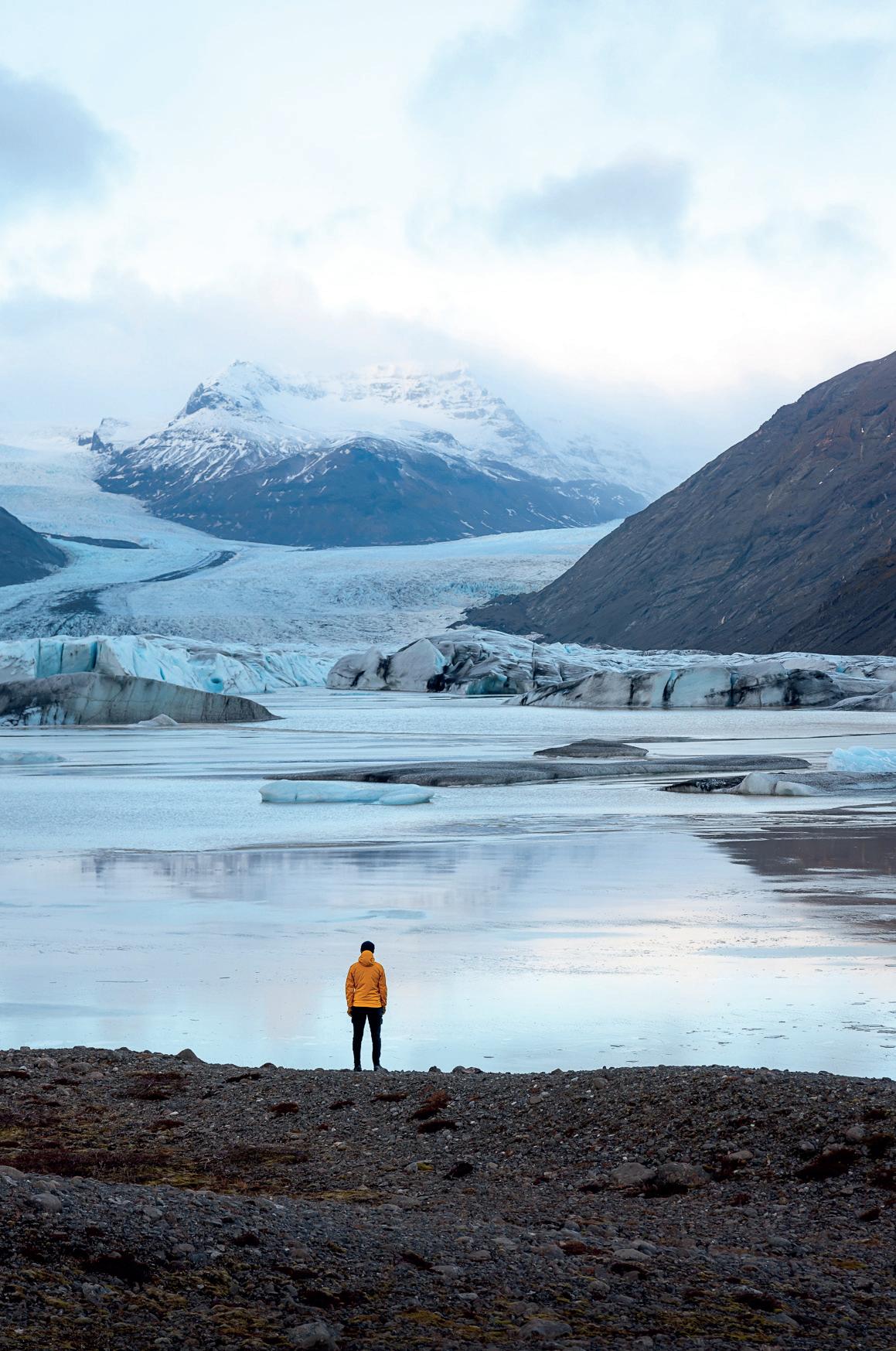
Inside the theme, we speak to a host of talented Scandinavian architects and explore projects across the globe – from mountainside holiday homes to city landmarks, green bricks and solarpowered facades.
SPECIAL THEME
56 T he best of Bergen
In this special theme, we step into medieval Bergen with Bryggens Museum. We also go on a culinary journey through the city’s history with Bryggen Tracteursted, whilst Fjellskål tempts with a delicious seafood odyssey, and Fryd welcomes visitors to a unique sauna experience.
CULTURE
84 T he best new events, film and music in Scandinavia
In this month’s Culture section, music columnist Karl Batterbee selects new Nordic pop to push play on, film enthusiast Anders Lorenzen explores the Nordic countries’ leadership in sustainability, and illustrator Gabi Froden reflects on the pros and cons of the Scandi footbrake.
BEST OF THE MONTH
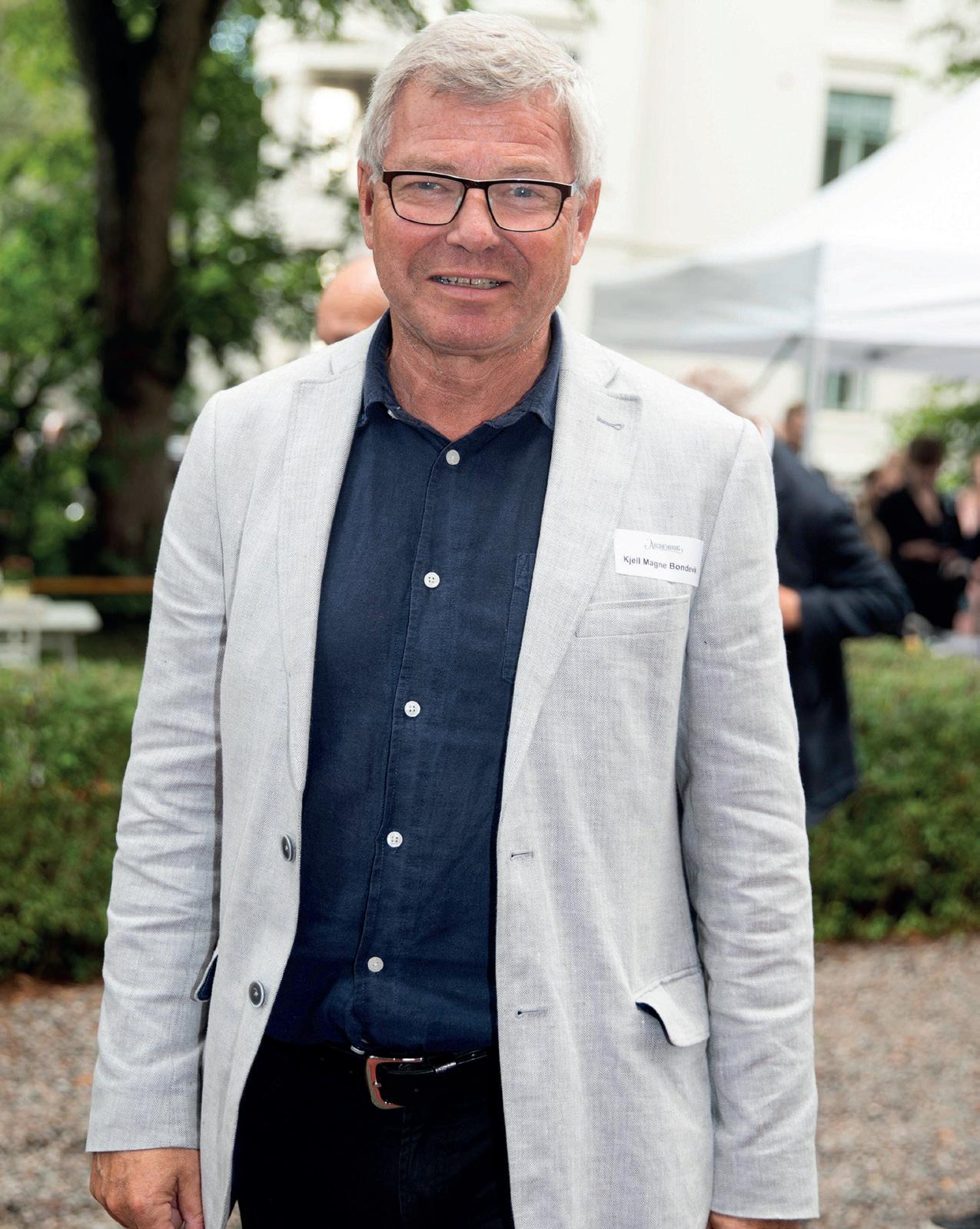
Norwegian former prime minister Kjell Magne Bondevik (1997-2000 and 2001-2005).
Photo: Berit Roald / NTB
Kjell Magne Bondevik –the former prime minister committed to peace and understanding
You have plenty of possibilities as a former Scandinavian prime minister. You could pursue the paths of Jens Stoltenberg and Anders Fogh Rasmussen, who served as NATO Secretary-General. Or perhaps, like Helle Thorning-Schmidt and Gro Harlem Brundtland, aim for top jobs in other organisations. Or maybe, like Carl Bildt, Thorbjørn Jagland and Lars Løkke Rasmussen, you will wait around, and, in time, be made foreign minister.
By Xander Brett
Kjell Magne Bondevik, who was Norway’s prime minister from 1997 to 2000, and again from 2001 to 2005, took none of those paths. Instead, he founded the Oslo Center for Peace and Human Rights. Two decades later, it continues its mission to spread democratic values and inter-religious tolerance worldwide.
“I could have gone abroad, either as an ambassador or as the leader of an international organisation, but my wife and I chose to stay in Norway,” says Bondevik. “Our grandchildren were growing up and we wanted to watch them develop. Instead of sitting at the top of a large organisation, I established a small, flexible centre. It was unusual for a former Norwegian politician, not least a prime minister, to start a foundation, but a colleague and I managed it.”
Diplomacy demands compromise –something Bondevik was well placed to broker at the Oslo Center, having led coalition governments in both of his terms
as prime minister. The first featured his Christian Democratic Party and ministers from the Centre and Liberal parties. His second, after a few months of Labour rule, saw the Liberals return, this time joined by the Conservatives.
“In some countries, there’s an idea that the winner takes it all. If a certain party wins an election, they can shut out all opposition,” he explains. “Democracy, however, isn’t only about winning or losing elections, but about how you treat minorities, whether they’re ethnic, religious or political. Dialogue is equally important. We’ve two ears and only one mouth, so perhaps it’s a good idea to listen more than you speak. You don’t have to agree with the person you’re talking to, but to find compromise and create lasting solutions, you need to understand them.”
A life in politics
Born in 1947, Bondevik grew up in Molde, a small city on Norway’s west coast. Thanks to family involvement, he re-
ceived an early introduction to life in the Christian Democrats. After making waves in its youth wing, he took up a seat in the Storting, Norway’s parliament. Soon after, he accepted a stream of portfolios in the governments of Lars Korvald, Jan P Syse and Kåre Willoch. The Christian Democrats elevated Bondevik to the position of party leader in 1983.
Though his tenure as head of government might be best remembered for opposition to the 2003 invasion of Iraq – Norway refused to join President Bush’s ‘coalition of the willing’ – Bondevik’s premierships also coincided with the start of Vladamir Putin’s leadership in Russia.
“I saw Putin several times,” he says. “I felt that our first meetings were rather promising. He said that he was committed to democracy in Russia, and that he wanted to cooperate with the West. Of course, however, he has become more authoritarian. He and Recep Tayyip Erdoğan, Benjamin Netanyahu and Victor Orbán were all colleagues of mine 20 years ago. When you’ve been in power that long, you can start to believe that you’re the only person capable of ruling your country.”
Bondevik is honest when it comes to the dangers of expansionism. Presently, they seem posed not only by Putin, but also by
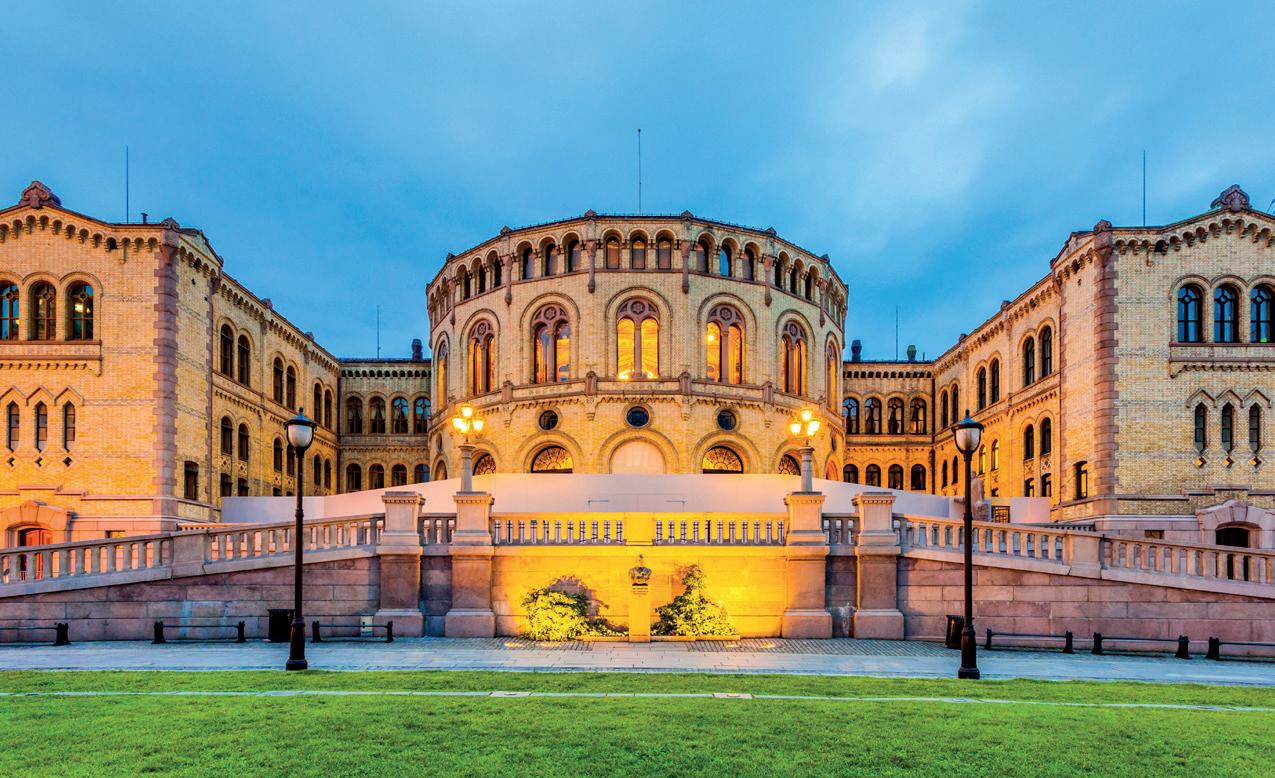
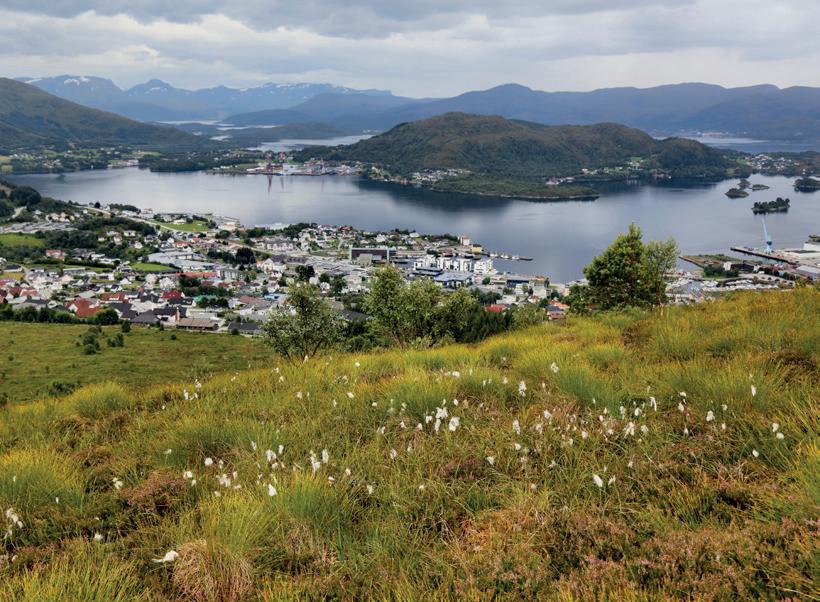
the American president, who has mooted the idea of obtaining Greenland, Canada and the Panama Canal.
“Trump’s rhetoric is a concern to Norway,” he confirms. “What we’re really afraid of is not only that he’ll reduce support for Ukraine, but also that he’ll reduce US military presence in Europe as a whole. We must convince him to stand behind Ukraine, to ensure that ceasefires and peace agreements are fair. Europe, meanwhile, must stand united. If Trump withdraws support for Ukraine, I hope Europe can step in with replacements.”
The importance of a healthy mind
On a domestic front, Bondevik is proud to have shone a light on mental health provision, a topic close to his heart. He shocked his nation when he stepped aside for a few weeks during his first premiership, revealing that he was experiencing a bout of depression.
Kjell Magne Bondevik first took his seat in the Storting on 1 October 1973. Photo: dreamstime.com
When Bondevik first took his seat in the Norwegian parliament, he represented Møre og Romsdal. Photo: dreamstime.com
“It was big news, but I had to be honest about the diagnosis, and I hoped that by doing so I could dispel some of the stigma that exists around mental health,” he admits. “Looking back, I think I had depressive episodes earlier, though they weren’t as deep. When my psychiatrist analysed me, we found several reasons behind my struggles. One, possibly, was genetic. Another was that I might have been saying ‘yes’ to too many appointments in my first year as prime minister. The main reason, though, was that I’d lost three very close friends, and I didn’t take time to work through my grief.”
Time after the top job
After so long out of office, Bondevik is accustomed to life without the trappings of state. He admits, however, that readjusting to a civilian routine proved difficult at first.
“It was a shock to have been prime minister in the first place,” he laughs. “In 1997, it was only in the last ten days or so of campaigning that I thought taking power could be a possibility. When I left office for a second time, about eight years later, I was prepared for a more normal life. That said, I’d had bodyguards for years, and a car that took me from place
to place. Suddenly I had to start driving myself again. Actually, I had a few small accidents as a result of that!”
Bondevik is on good terms with his successors, not least the aforementioned Stoltenberg, who made an unexpected return to Norwegian politics earlier this year. Through Club de Madrid (a forum for former world leaders), he also keeps in touch with fellow former world leaders. And while the former prime minister does not aspire to interfere in the work of his successors, he remains steadfast in his dedication to peace and understanding.
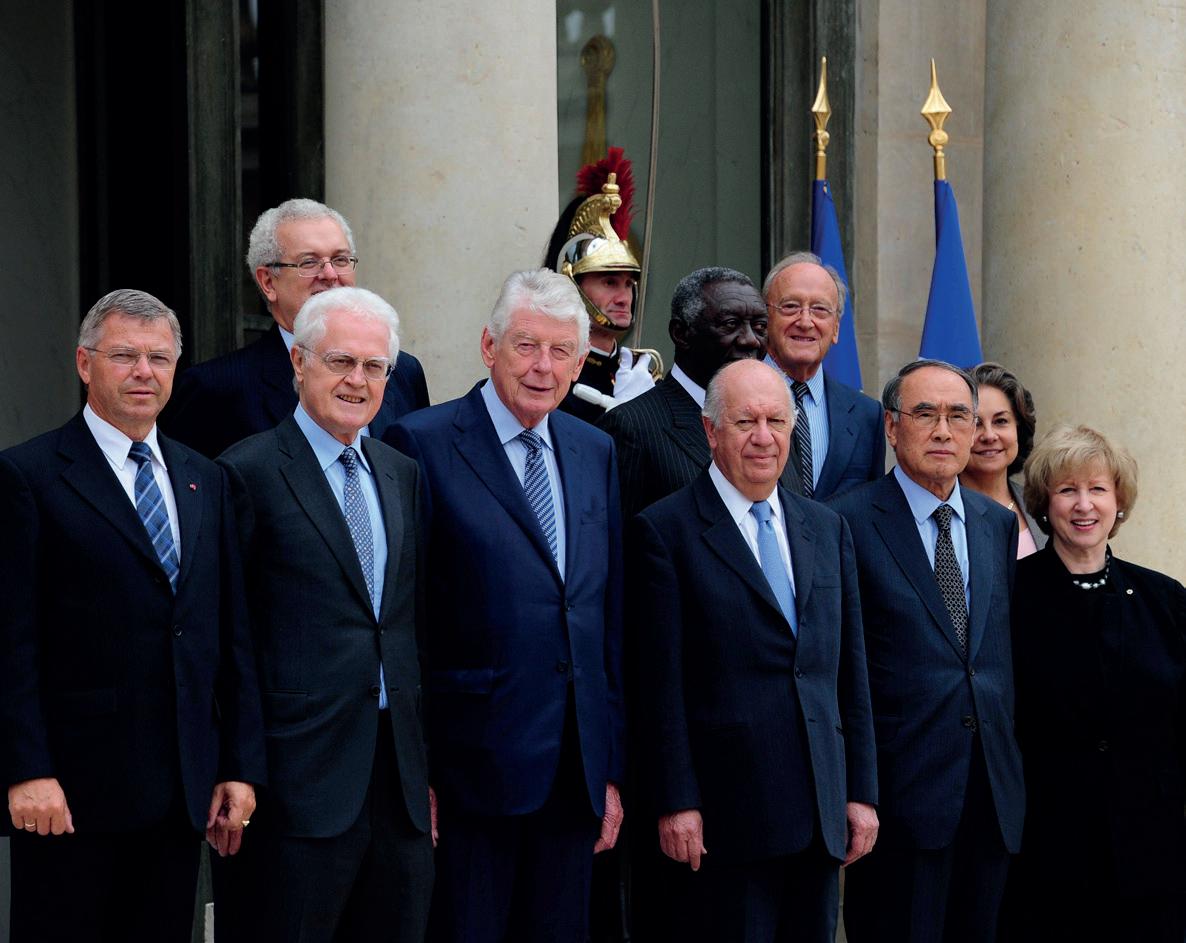
Members of the Club of Madrid, a forum of former world leaders, to the left Kjell Magne Bondevik.
Photo: Mousse/ABACAPRESS.COM
Fashion Diary
October brings autumn in full colour – but also a significant drizzle of drab, rainy days. As the season slowly turns, prepare to layer up and invest in good-quality wool pieces that will get you through the colder seasons.
By Celina Tran | Press photos
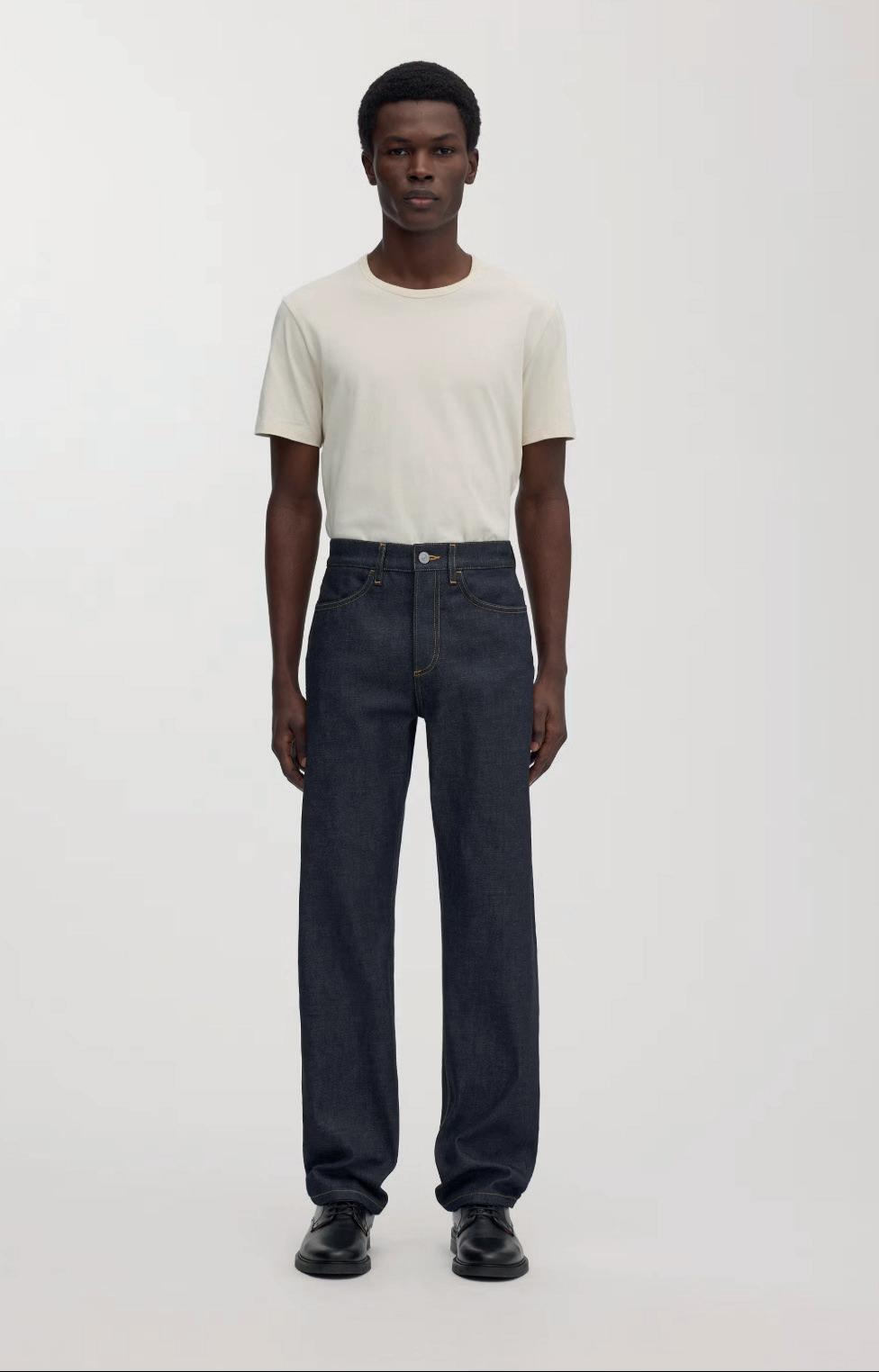
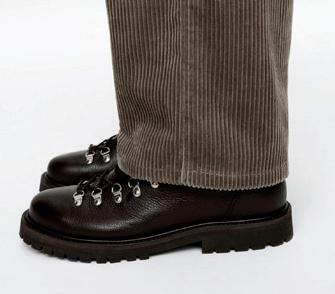
Asket’s Loose Jeans are cut from heritage Japanese raw denim, where the cotton fibres are ring spun for a naturally uneven surface, and for wear and tear. Regardless of the season, you’ll always need a good pair of jeans, and these will get you through all of them!
The Loose Jeans, EUR 160 www.asket.com
Made from chrome-treated, pebbled leather, the shoes from Arket are great in metropolitan and rural settings. They might be called hiking shoes, but these cool, working-style boots go well with a range of outfits. Try them with a pair of corduroys or jeans, a trench coat or denim jacket – anything goes!
Leather hiking shoes, EUR 229 www.arket.com
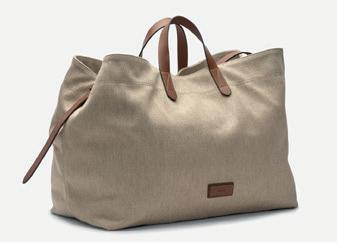
Summer might have passed, but that’s no reason to put away the travel totes and weekend bags. Why not sling this spacious Mismo bag over your shoulder when you’re slipping away on weekend trips to the cabin? Or if you can’t get away, bring it as you move about the metropolis – and never worry about buying extra plastic bags for groceries or unintentional shopping! It comes with an adjustable belt strap, handles, and different organisational spaces for compartmentalising all your belongings.
M/S Haven in Grand Herringbone, DKK 3,400 www.mismo.dk
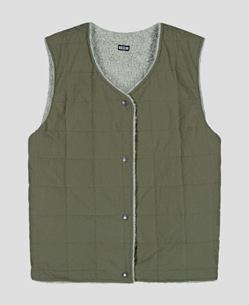
While there is a cool change in the air, it’s not quite frosty enough to bring out the winter coat yet. October is the perfect season for layering, and this unisex Mio reversible vest from RCollection is a great place to start. One side is quilted while the other bears a soft, woollen teddy texture, so you can choose depending on the occasion or your destination.
Mio reversible vest, EUR 189 www.r-collection.com

Handknit by Myssy grannies in Pöytyä Finland, this 100 per cent wool cardigan is light and comfortable. Wrap it around yourself as an extra layer when it’s a little bit nippy outside, and its fluffy fabric will make you feel like you’re being hugged by a cute, little sheep – perfect for the early autumn breeze.
Vuokko Kuohu cardigan, EUR 389 www.myssyfarmi.fi
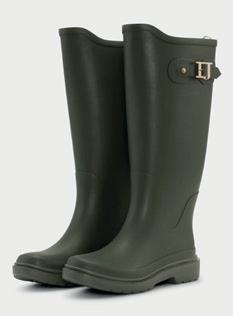
Ilse Jacobsen grew up by the coastal town of Hornbæk, where she watched locals take on the ever-changing weather. Against the crashing waves and crisp air, her brand was born with the aim to blend practicality with fashion. Indeed, these high wellingtons are not only perfect to protect your feet from the lashing rain, they also look incredible. The golden metal buckle detail and monochrome look add a sense of elegance that rainwear often lacks. Whether you choose to pair with a fun, colourful raincoat or a sleeker trench, these boots will be the envy of the town.
Long rainboots in Army Army, EUR 80 www.ilsejacobsen.com
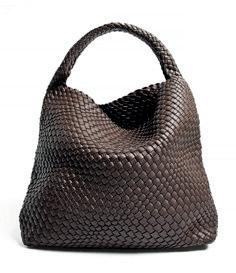
Woven in a criss-cross pattern, this brown tote is the perfect size to carry your books, laptop, and anything else you might need for day-to-day errands. In a beautiful, neutral brown, it matches the shades of the season, while staying on theme with Scandinavian minimalism.
Soft woven tote, EUR 55.95 www.na-kd.com
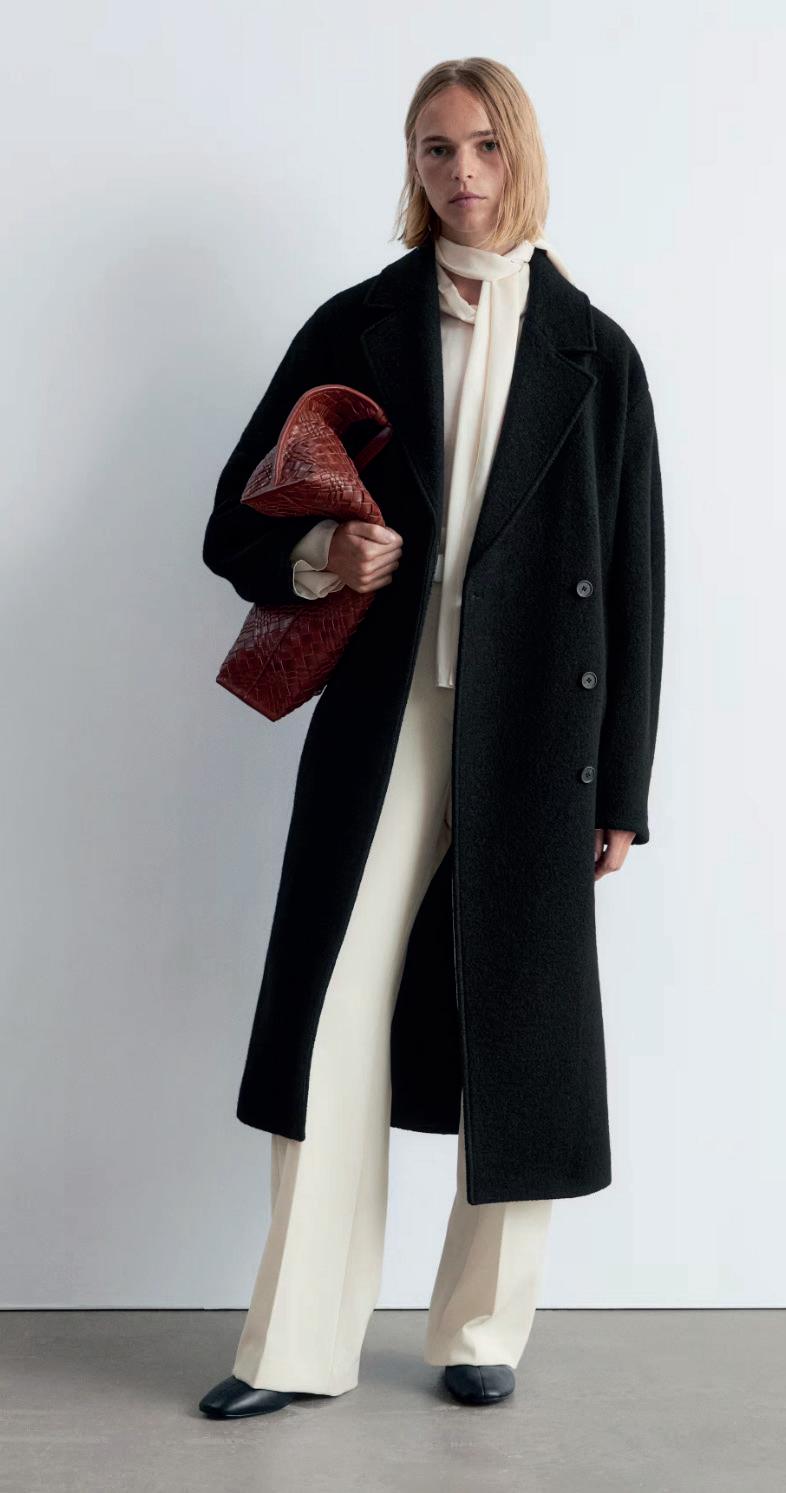
Autumn sees the much-welcomed return of long coats! This beautiful black piece from & Other Stories will make you look elegant and keep you warm. Featuring an overlapping lapel, three button closes, and a belt, it’s a staple piece for any capsule wardrobe, and will be perfect whether going to work or out for dinner. Voluminous belted wool coat, EUR 249 www.stories.com
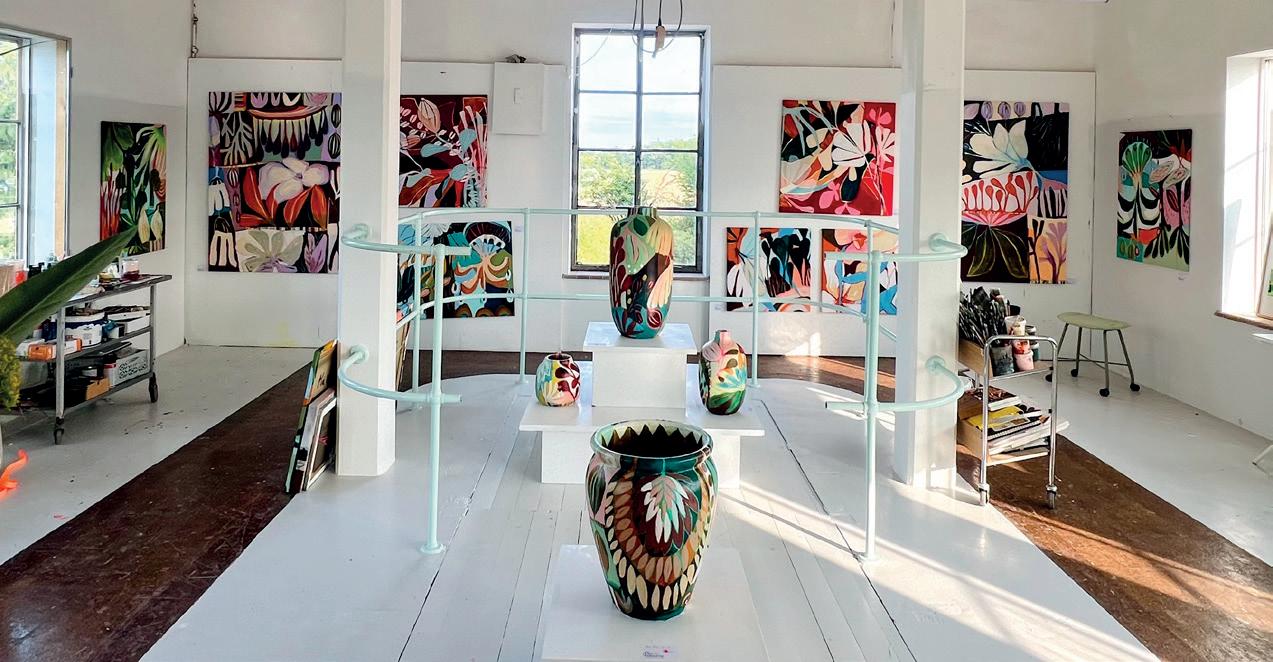
Artist Mia Willaume –painting hope into being
The art of Danish Mia Willaume is as much about process as outcome. With intuition as her guide, she works playfully in colour, texture and form, transforming and layering fragments until something new emerges. Her canvases pulse with energy – sometimes tender, sometimes raw – inviting viewers into a space full of life between chaos and harmony. In her current works, viewers are invited into a luminous language of hope, inspired by everything that grows and pulses outside of our control.
By Signe Hansen | Photos: Mia Willaume
“Art, for me, contributes to a kind of spiritual strengthening at a time when the world is calling for balance, presence and meaning,” explains Willaume. “My works hold both sensuousness and the cerebral – perhaps, at times, something spiritual. I find that my customers want and need to connect right now; when someone chooses my art, it’s often because they feel it gives them a sense of energy, hope, and a connection to something larger.”
For two decades, Willaume has lived from her art. Her canvases have travelled from the studio into homes across Denmark and abroad, and onto the walls
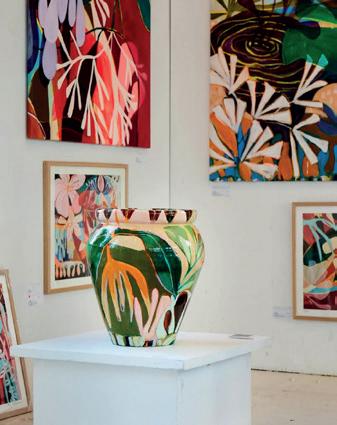
of galleries in Sweden, Denmark, and Spain. Recent years have widened the circle with a representation by Davis Gallery Contemporary Art in Copenhagen, a spring residency at Burren College of Art on Ireland’s west coast, and a growing network with collaborations across the world.
A breakdown in glitter
Born into a household where music and making were everyday acts, Willaume first trained and worked as an art teacher before committing fully to her own art. One New Year’s Eve, surrounded by glitter and guests, she broke down. “I suddenly knew I couldn’t continue like that. The next morning, I went to the bank to borrow money, to set up my first studio in my garage. I decided that this was going to be my life’s work,” she recalls.
The timing was precarious – just before the financial crisis – but she weathered it, reinventing herself several times and
Mia Willaume’s new studio, Powerhouse – which serves as a workspace, showroom, and venue for events and workshops – is housed in a converted 100-year-old transformer house.
building a career without formal Art Academy credentials. “I don’t have an education from the Art Academy, but you don’t stop being an artist because you’re not formally trained,” she notes. “You are what you do.”
Instead, Willaume has refined her skills through various recognised art schools and teachers, and her paintings have long found their way into private homes. Families have told her how their children have invented stories around them, how a painting transformed the mood of a room, or even how a buyer once had to turn a canvas to the wall until she was ready to face its message. “If you’ve put yourself into a work, then it carries energy,” Willaume says.
Good news as artistic material in her work, Willaume thrives on the tension between control and spontaneity. “I love working in layers, where the controlled and the unexpected meet and new stories appear in colour, form and material,” she says.
In recent years, Willaume has anchored her practice in what she calls good news. At a time when headlines often depress, she was struck by reports that parts of the Great Barrier Reef were recovering. “That kind of story is the news channel I want to be as an artist,” she explains. “It gives me energy – the colours, the hope, the sense of being connected to something bigger.”
On canvas, this translates into large, layered works where optimism and fragility coexist. She deliberately incorporates mistakes, to resist making the images too
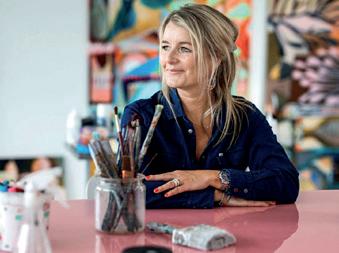
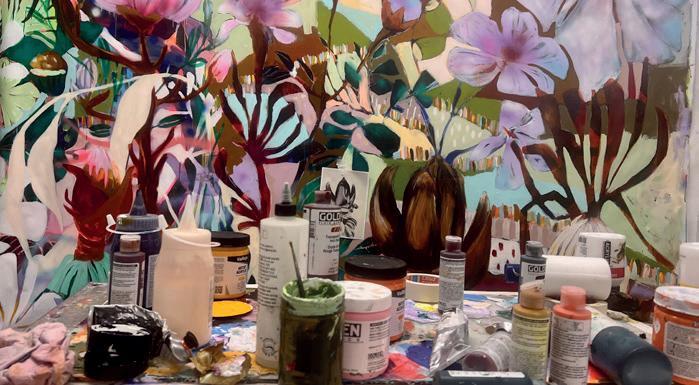
sweet, often holding back the light with raw brushstrokes or unresolved tensions in form. “I never compromise on authenticity. It’s about being true to the core of who I am.”
The insane Dane abroad
Travel has been another key driver of Willaume’s evolution. Residencies in Spain and, most recently, at Burren College of Art in Ireland have given her fresh perspectives. She recalls unfurling a ten-metre canvas abroad: “I was called the insane Dane – coming from one of the world’s smallest countries and then rolling out ten metres of colour and figures. It was wild, inspired by nature, and fantastic,” she laughs. Such experiences reinforce her belief that shifting places –and meeting new people – shifts the work itself. “You plant yourself in new soil, and something new grows,” she says.
She also channels, and renews, her energy through art workshops and large-scale projects for schoolchildren and adults.
In bloom at Davis Gallery Contemporary Art
October marks Willaume’s debut exhibition at Davis Gallery Contemporary Art in Copenhagen, where she is now represented. Titled In Bloom with Beings, the show brings together large-scale works created over the past year. “They are pompous, intuitive, full of flowers and organic beings,” she says. “I’ve gone all in, combining beauty with raw, rough strokes and unexpected materials.”
www.miawillaume.dk
Facebook: MIA WILLAUME Instagram: @Mia_Willaume
Exhibition: In Bloom with Beings
Venue: Davis Gallery Contemporary Art, 69 Bredgade, Copenhagen
Opening: 24 October 2025
Duration: One month
Featuring: New paintings and largescale works created 2024–25.
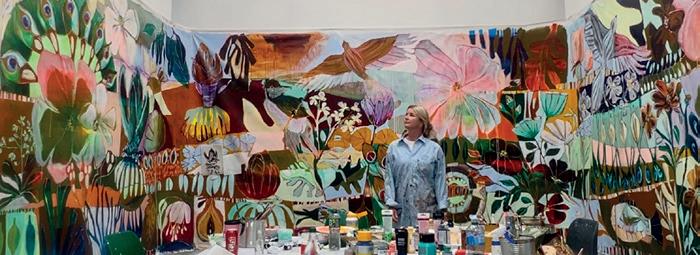
A work in progress – one of the paintings to be exhibited at Davis Gallery Contemporary Art.
Left: Mia Willaume is a member of BKF (Danish Visual Artists Association) and KKS (Association of Female Artists in Denmark). Photo: Kim Ignatius. Right: During a study trip to Burren College of Art on Ireland’s west coast, Mia Willaume created a 10-meter-long canvas exploding with life.
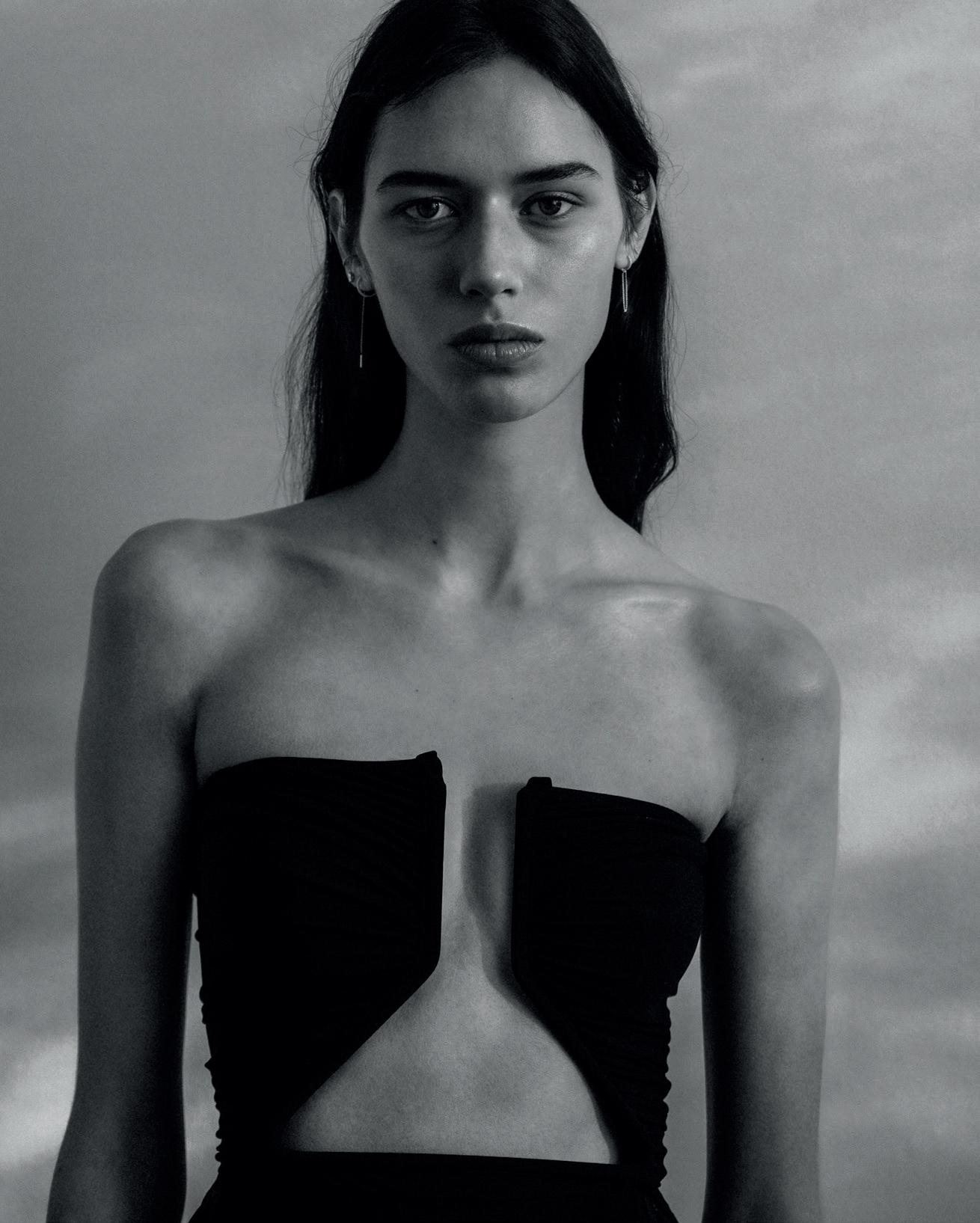
Jewelry with a unique blend of sustainability and self-expression - celebrating life’s milestones with creations that are both timeless and daring.
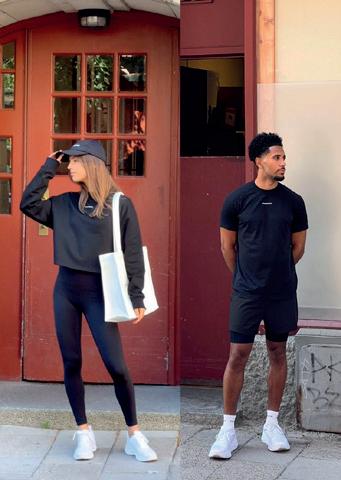

Minimal. Technical. Timeless.
Ultimately, Gymathlete sets out to answer a simple question: how can performance and elegance exist as one? The result is a Stockholm-based label quietly distinguishing itself for refined activewear – sleek silhouettes, technical stretch, and details that whisper rather than shout.
By Malin Norman | Photos: Gymathlete
Not just gym wear, but pieces designed to move seamlessly from high-intensity sessions to the rhythm of everyday life. Think sculpted leggings that hold their form, sports bras that balance support with softness, and outer layers tailored with the restraint you would expect from Scandinavian minimalism. Clean silhouettes, muted tones, minimal branding.
“As co-founders, we don’t see ‘athlete’ as a title reserved for the elite — it’s a mindset,” say Mahdi Sadegh. “Show up, test your limits, take the next step. Take the leap: start, adjust, do the work. And the clothing should never get in your way; it should give you the confidence to keep going.”
Where vogue fashion meets athletic discipline, Gymathlete delivers quiet confidence. Every garment is intentional — functional yet effortless, understated yet empowering. Buttery fabrics, low-profile seams and four-way stretch
reduce distractions; moisture management and quick recovery keep you moving. Quiet performance that does not slip, chafe, or shout. They just work.
This season marks a new chapter for the brand, introducing extended sizes, new tones, and added layers designed for colder training days, alongside a capsule collection that will extend the wardrobe beyond the studio. The range spans highrise leggings, supportive soft-stretch bras, tees and sweatshirts that transition from office to café to gym, plus shorts, socks and a tote for daily essentials.
Launched across the Nordics and EU — with a focus on Sweden, Norway, Denmark, Finland, Germany and the Netherlands — Gymathlete is building not just a collection, but a community. Collaborating with creators and storytellers, the brand prioritises authenticity over volume and long-term connections over fleeting hype.
Gymathlete is also committed to shaping a more sustainable future for activewear. The brand partners with two global organisations: one removing ocean plastic daily to protect marine ecosystems, and another planting trees in vulnerable regions, creating both climate benefits and fair jobs.
www.gymathlete.se
Facebook: Gymathlete
Instagram: @gymathleteofficial
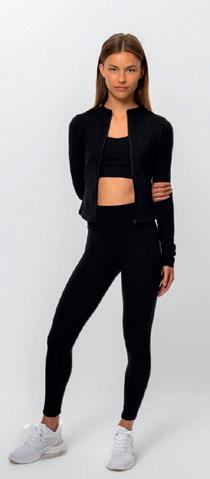

An iconic, environmentally conscious bottle
With a vision for a practical, environmentally friendly and aesthetically pleasing bottle, NAAL launched its Nordic-designed reusable range in 2022. The result is a bottle that offers both style and a simple way to help the planet.
By Molly McPharlin | Photos: Cassandra Hansen Schmidt

Founded on the playground in Norway by two mothers who wondered why they always remembered sunglasses or jewellery but never a reusable water bottle, Marin Otto and Tone Eid wanted to create an unforgettable one. “We were often out together with our children and bought bottled
water or drank from single-use bottles we had re-filled,” says Eid. “Later, we learned that disposable bottles aren’t made for reuse and can release microplastics. We decided to create a bottle that becomes an accessory – something you remember to bring along and enjoy using.”
NAAL’s bottles are minimalist with a modern twist. Classic materials are used, such as extra-durable glass and leather sleeves to contain the bottle. “Glass preserves the purest taste, is dishwasher safe and manages both cold and hot drinks,” says Otto. Leather sleeves cover the bottle in colours such as cognac, grey, and black, giving it an exclusive feel. And the 350ml size fits almost any bag, making it easy to fill anywhere.
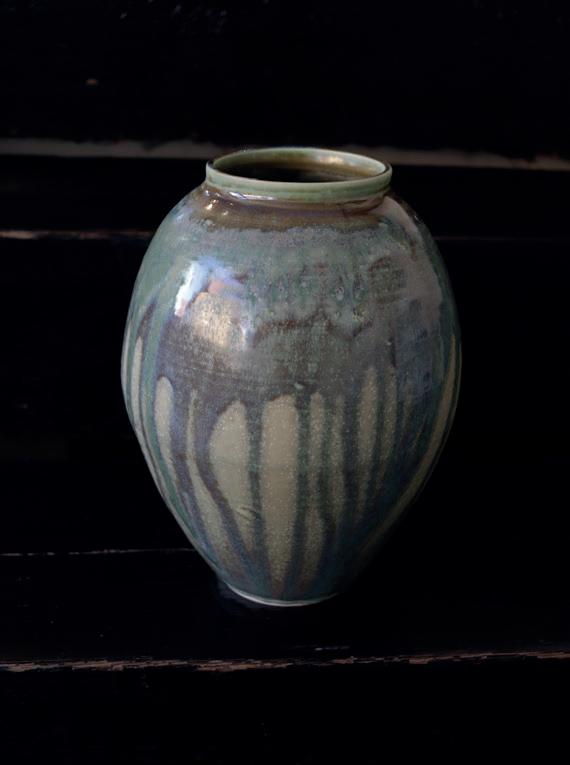
www.cosytimesceramics.dk
Instagram: @cosytimesceramics.kerteminde
NAAL also customises bottles on request: names on sleeves or branded bottles for companies. This option has proven highly popular. Eid adds: “They make a great gift during the holidays. The idea of fewer but better products has big appeal. We think our timing is right.”
www.naalnorge.no
Facebook: Naalnorge
Instagram: @naalnorge
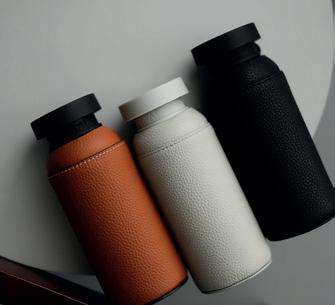

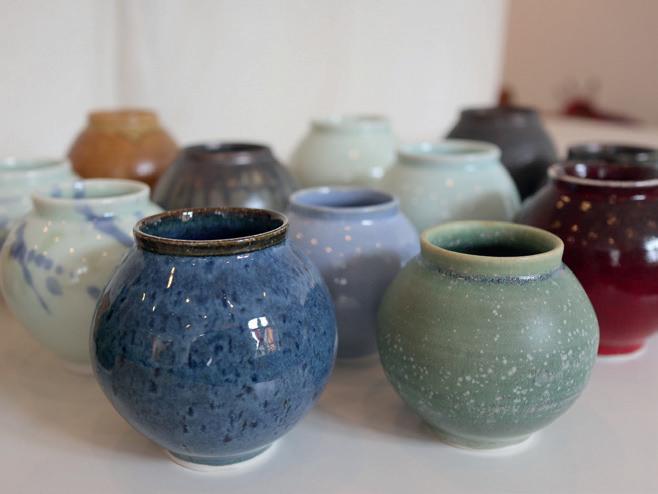
The bottles have warm neutral-coloured leather sleeves for protection.
NAAL’s collection of Nordic design bottles.

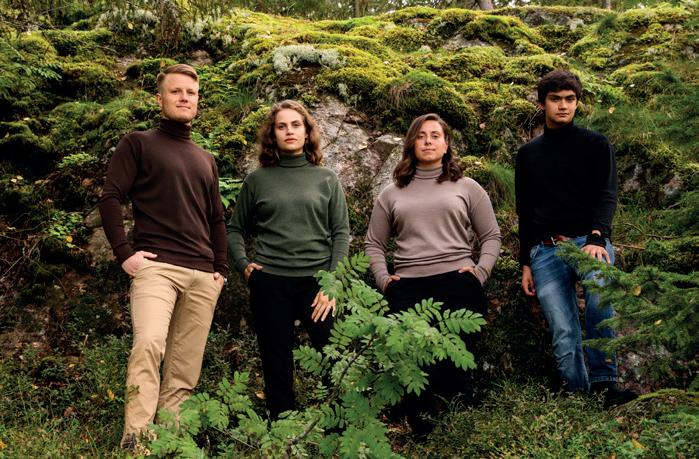
Comfortable, dependable Finnish design
BEEA Design’s mission is to provide comfortable, high-quality clothing and accessories for everyday life that stand the test of time and use.
By Ndéla Faye | Photos: Katja Tokola Photography @Katjatokolaphotography
For small family business BEEA Design –based in Kokkola, Central Ostrobothnia in Finland – quality and responsibility go hand in hand. Part of that ethos is rethinking what timeless clothing means in the modern age. The mulesing-free merino wool garments are designed, cut, sewn and finished locally. “I design all the patterns myself, and we cut and finish the products here in our small sewing shop. The sewing work itself is subcontracted within the Central Ostrobothnia region, as keeping production in Finland is important to us,” says owner Salla Linna.
BEEA Design is built on the belief that clothing should provide solutions rather than complications. The brand focuses on creating comfortable, dependable pieces that customers can turn to for both everyday wear and special occasions.
Comfort and quality for everyday use
This personal approach is evident in BEEA’s signature designs. Take the Ninjako: a 100 per cent merino wool piece that cleverly combines a hat, scarf and snood in one. Available for adults and
children, it is a simple yet ingenious solution to staying warm.
Customer needs and feedback guide BEEA’s product development. Recently, for instance, the company introduced three different trouser leg lengths, to ensure a perfect fit for all body types. The autumn-winter collection features unisex polos in a variety of colours, alongside a relaxed merino wool shirt and a midlength cardigan – pieces that balance comfort with understated elegance.
In spring, the focus shifts to the Coolmax range, which includes light and versatile t-shirts, capris, leggings and shorts, as well as BEEA’s best-selling stretchy college pieces: soft cotton-blend bottoms and relaxed tops designed for daily wear.
While BEEA has built a loyal customer base in Finland through its online shop, the brand is now expanding its reach. With shipping available across Europe, international customers can also experience the best of Finnish design. “It’s important that our ethics remain at the heart
of everything we do,” Linna says. “We ensure this by employing local people, keeping production transparent, and creating garments that don’t need replacing after just one or two seasons.”
At a time when fast fashion dominates, BEEA stands out by slowing things down. The company’s philosophy is simple: make clothes you want to keep. “When you invest in something that lasts, you save money, time and natural resources. That’s what BEEA is about: thoughtful design, made with care,” Linna concludes.
www.beea.fi
Facebook: BEEA Design Instagram: @beeadesign
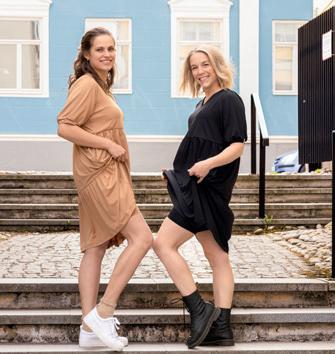
We Love This: Sustainable furniture, the Nordic way
As you will see when exploring this issue’s architecture special, sustainability is much more than a buzzword in the Nordic world of architecture and design. It is a dominant source of inspiration – as always, Scandinavian designers have taken necessity and turned it into art. Below, you will find a selection of amazing examples of how form following footprint can become the centrepiece of your home, bringing both beauty and good karma.
By Signe Hansen | Press photos
Soft-edged and quietly architectural, Lily is OEO Stu dio’s take on a modern classic with a purpose. The ta ble is made in Danish design company Mater’s circular Matek®, an innovative composite that blends recycled plastic with fibre-based waste streams such as e-waste and spent coffee grounds. In fact, one Lily Lounge Table locks away 4.2 kg of discarded materials, turning today’s leftovers into tomorrow’s heirloom. Available in several Matek® blends and sizes.
Price: from DKK 4,500 materdesign.com
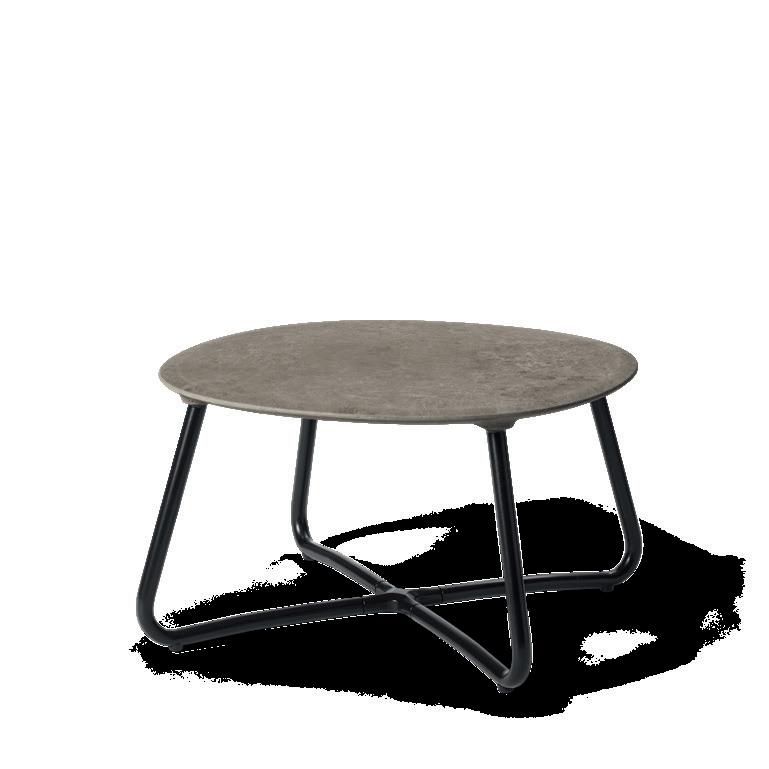
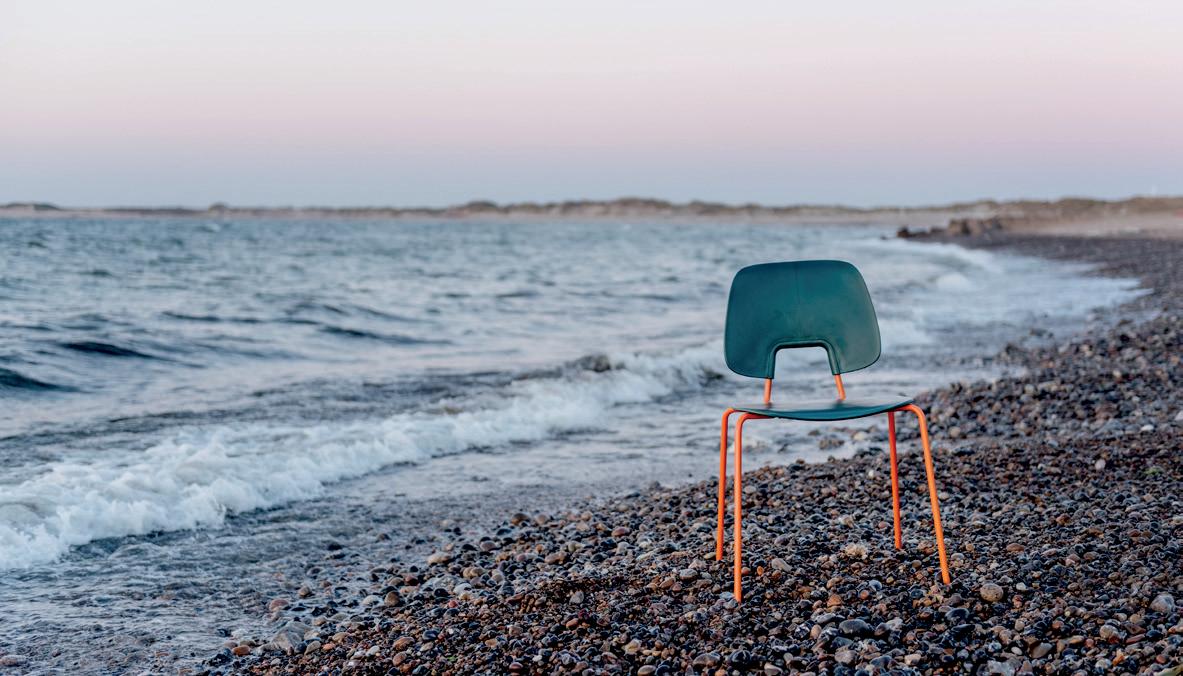
R.U.M. Original – Wehlers
With its shell moulded from discarded fishing nets, R.U.M. is a truly circular chair. The fishing nets are recovered from Danish and Faroese waters and hand-sorted in Denmark for quality and traceability. Beautiful and sturdy in its explicit minimalism, the chair is built for real life, and is as at home around a busy family table as in a study or a child’s room. Designed by C.F. Møller Design – part of C.F. Møller Arkitekter – it is the epitome of Danish design: innovative, elegant, practical, and, of course, sustainable.
Price: from DKK 2,731 www.wehlers.com
Lily Lounge Table – Mater
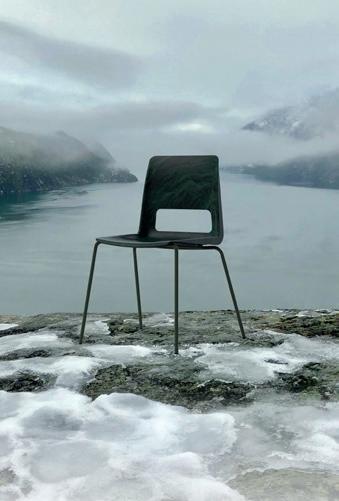
S-1500 Chair — Snøhetta x NCP
In a collaboration between Snøhetta and furniture manufacturer Nordic Comfort Products (NCP) industrial waste is reimagined with Nordic clarity. The S-1500 chair transforms plastic from the local fish farming industry in Northern Norway into a sculpted shell, mounted on a clean steel frame made from recycled steel. Graphically crisp in kitchens, studios and cafés, the chair is the perfect conversation starter to tune in on the possibilities of waste in new forms and shapes.
Price (four chairs): DKK 9,200 www.ncp.no
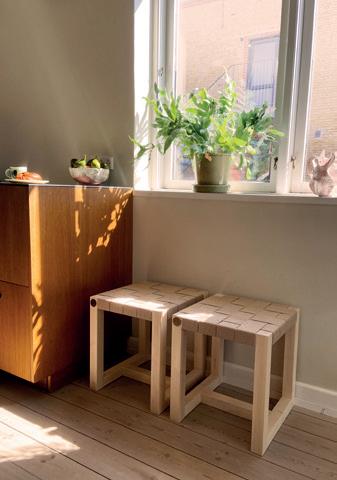
A modest silhouette with quiet character. Ella’s honest, recycled timber and hand-worked seat give it a gentle tactility. A perfectly low-key piece that does the small things beautifully – reused wood, a hand-woven touch, and the kind of everyday utility that makes your home feel calmer.
Price: DKK 1,499 www.wecyclefurniture.dk
Ecofurn – EcoChair
Even in the midst of autumn, it is hard not to fall in love with the rustic EcoChair from Finland. Made of solid wood and hemp rope only, the chair from EcoFurn® is a perfect example of how natural materials can make for a distinct design. The chair is completely without plastic or metal parts, which not only makes it sustainable but also flexible and comfortable. Available in a range of colours, the chair’s rustic yet minimalistic design feels like a deep breath, inviting a relaxed and laidback pause.
Price: from EUR 149 www.ecofurn.eu
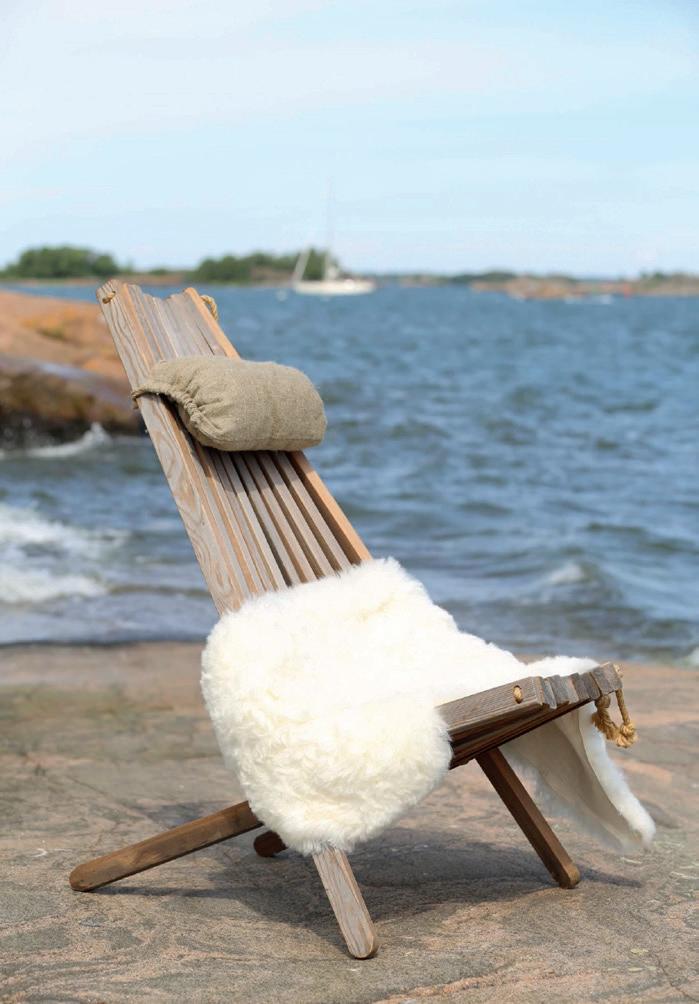
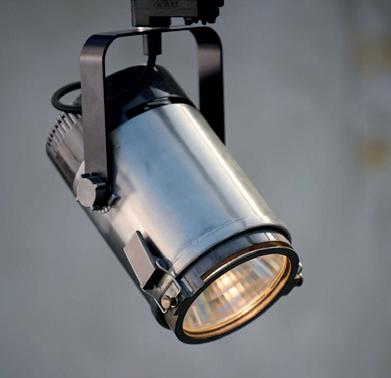
Light of Fashion – Fischer Lighting
Once a fashion shop-floor spotlight, now a cool, raw light with a new lease of life. Crisp lines, efficient new LED tech and a focused beam make the Light of Fashion ideal for art, shelving and intimate corners. It is upcycling that brings a touch of drama to everyday spaces, with sustainability baked into its second act.
Price: upon request www.fischer-lighting.com
Ella Skammel – Wecycle Furniture
Doing it right, in the beer world
The three-day Belgian Beer Weekend, which took place in September, is one of the best beer festivals I’ve ever been to. This year’s edition was a massive success, with more than 71,000 visitors. It outperforms most – here’s why.
According to the Belgian Brewers Federation, the 25th edition of the Belgian Beer Weekend welcomed more than 71,000 visitors over three days, beating last year’s festival with around 8,000 people. At this record-breaking edition, three out of four visitors came from abroad, confirming its international appeal.
What makes this festival so great, you might wonder? A few things stand out. First and foremost, the location is nothing but fabulous. Bang in the middle of Brussels, the Grand-Place is as convenient as it gets. The square, which is a UNESCO World Heritage Site, is stunningly beautiful, lined by guildhalls, such as the House of Belgian Brewers, and the castle-like Town Hall.
In such a magical setting, the festival is a proper celebration of Belgian beer culture. Starting with the inauguration and the appearance of the beer knights in their robes, then the pre-event with knights, brewers and politicians getting the first
pours of the beers (I was lucky to be there too!), followed by the opening to the public with bands playing and regular countdowns for communal cheers – the atmosphere is unbeatable.
The beer is outstanding too, of course, with more than 50 breweries serving around 500 beers. Here’s a revelation: at this festival, the beer is served in the breweries’ own branded glassware. Shock horror, Scandinavian authorities would be aghast at the danger of using real glassware. Imagine what could happen! Well, as far as I could see, nothing happened. During the weekend, I didn’t see any broken glass – only happy festivalgoers.
And last but not least, the people are amazing. The breweries have their own staff serving beers: knowledgeable, friendly, and above all proud and happy to be there. Over the three days, I met brewers and knights, beer judges, writers and guides, and people from all over the world
By Malin Norman
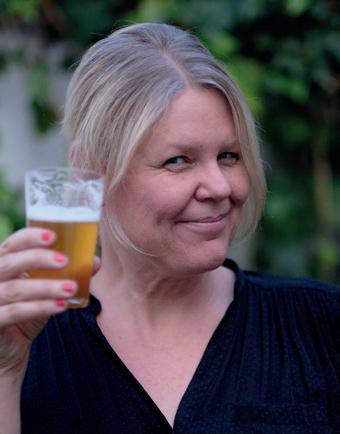
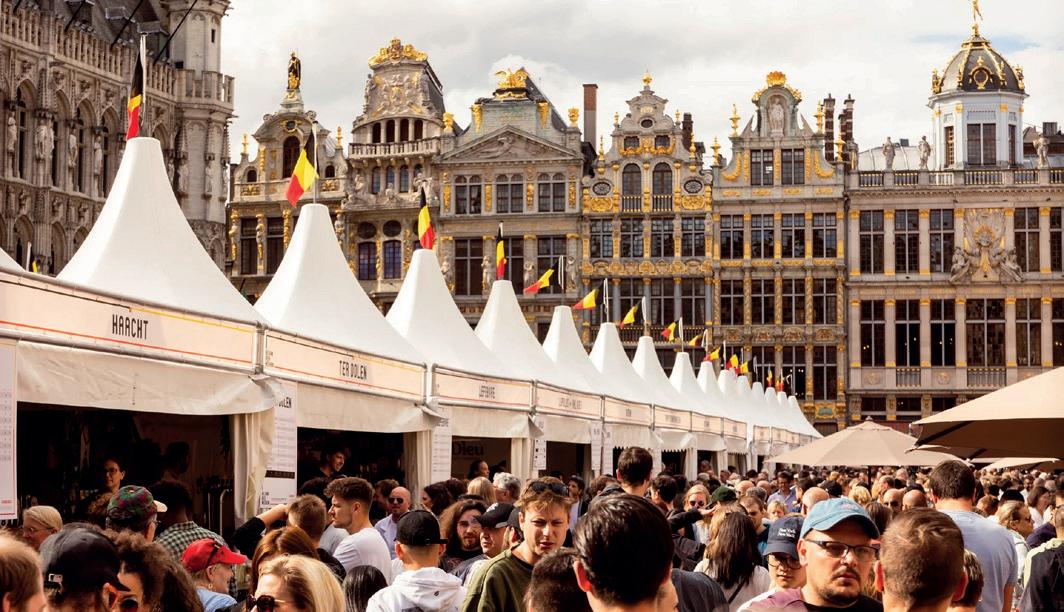
Malin Norman is a Certified Cicerone®, a certified beer sommelier, a BJCP certified beer judge, and a member of the British Guild of Beer Writers.
Photo: Belgian Beer Weekend
who just love beer. Oh, and did I mention that entrance to the festival is free?
This, my friends, is how to do it right.
Apple pie
By Sofia Nordgren
It’s apple season – and that means apple pie season. There’s something truly comforting about the smell of an apple pie baking in the oven. The scent of cinnamon and warm apples fills the kitchen and instantly creates a cosy atmosphere.
The ingredients might be simple, but combined they create something extraordinary. Together, the crisp crust, sweet apples and fragrant spices bring comfort and joy in every spoonful. Whether you’re baking for a family gathering or just to treat yourself, this recipe does the trick. It’s delicious on its own, but even better with a big scoop of vanilla ice cream, or a dollop of whipped cream, if you prefer.
INGREDIENTS:
CRUST
270 g all-purpose flour
2 tbsp caster sugar
pinch of salt
1/2 tsp ground cinnamon
200 g butter or margarine
3-5 tbsp ice cold water
Plant milk for brushing
1 tbsp caster sugar, to sprinkle
INSTRUCTIONS:
FILLING
1 kg apples
25 g butter or margarine
90 g caster sugar
2 tsp ground cinnamon pinch of salt
1 tbsp lemon juice
1 tbsp corn starch
1. In a baking bowl, combine flour, sugar and salt.
2. Dice the margarine and add to the dry ingredients.
3. Work the dough until combined and crumbly.
4. Add one tbsp of cold water at a time, until the dough comes together.
5. Shape the dough into a disc, wrap in plastic and let it rest in the fridge for at least one hour. Leaving it overnight is absolutely fine too.
6. Let the dough rest for a little while on the countertop before you start baking with it.
FILLING
1. Peel the apples, remove the seeds and cut in thin slices.
2. In a large pan, melt the margarine. Add apples, sugar, cinnamon, salt and lemon juice. Stir together.
3. Bring to a boil and let simmer for 3-5 minutes, or until the apples begin to soften.
4. Sprinkle with corn starch, stir together and let simmer for another couple of minutes, or until the filling begins to thicken.
5. Let cool completely.
ASSEMBLY
1. Preheat the oven to 200°C.
2. Divide the dough into two parts, one a little bigger than the other.
3. On a floured surface, roll out the bigger half of the dough to a flat circle, about 3 mm thick.
4. Transfer the dough to a pie tin. Place in the fridge while preparing the other half of the dough.
5. Roll out the rest of the dough to a 3-4 mm thick circle. Cut in 2 cm wide strips.
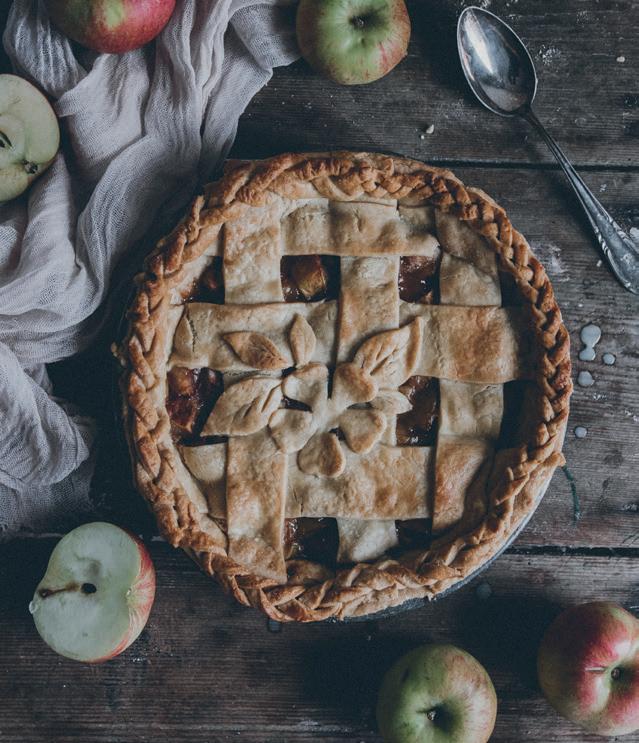
6. Take out the pie tin from the fridge and fill it with the cold apple filling.
7. Braid the crust into a lattice weaving. This is easier than it might seem.
8. Place 6 strips vertically on top of the pie. Fold every other strip all the way back and place one of the unused strips across (horizontally). Unfold the strips back so they cover the horizontal strip.
9. Now, fold the other vertical strip back and place another unused strip horizontally in top. Unfold the strips so that they cover the second horizontal strip. Hopefully you now begin to see a braided pattern.
10. Repeat with the rest of the strips until the crust is done.
11. Cut off any excess dough that lays over the edges, then pinch the crust with the bottom pie crust.
12. Brush the pie crust with plant milk and sprinkle some sugar on top.
13. Bake the pie in the lower part of the oven for about 20 minutes, then lower the heat to 175°C and bake for another 45 minutes.
14. Let cool before serving with ice cream or whipped cream.

Winner of the best Regional Cookbook at the Guild of Food Writers Awards 2022, Sofia Nordgren lives with her family in a small town in Sweden, working as a photographer, content creator and plant-based cookbook author. Cooking and baking have always been a hobby of hers and on top of that, she has a passion for nature, gardening and slow, seasonal
living. Foggy mornings, cinnamon buns, and playing with her kids are among her favourite things in life. Sofia Nordgren also runs the successful blog, The Nordic Kitchen
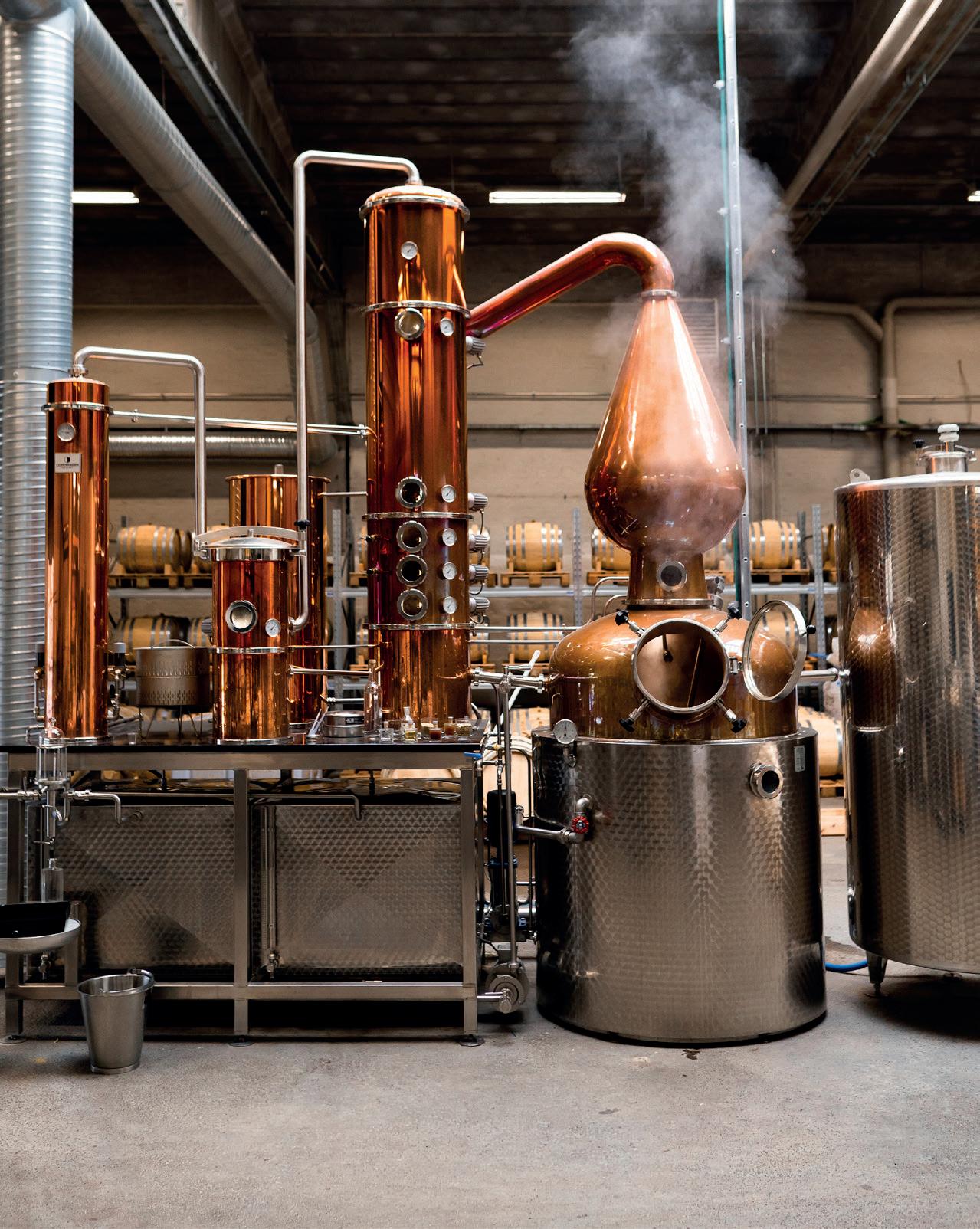
A new canon –the scientific artistry of Copenhagen Distillery
Having just claimed a major international whisky award, Copenhagen Distillery has solidified its position as not merely a disruptor, but as a visionary atelier. Scan Magazine talks to two of the minds behind a brand that is curating a new chapter in whisky, distilling the very essence of its Nordic origin into a glass: minimalistic, innovative, and sustainably profound.
By Signe Hansen
When speaking to master distiller Lasse Öznek, you encounter a man of intense focus – a scholar of chemistry whose passion is matched by his precision. “We possess a deep reverence for whisky’s history,” he begins, “but our canvas is a Danish one – our approach is to build upon the foundation of science, not solely on inherited convention.”
Talking to Scan Magazine, Öznek is joined by head of communications and education Sune Urth, in an office above the distillery’s large, minimalistic event space. The minimalism has been at the core of the distillery since day one. “It’s all about cutting to the bone,” explains Urth. “The mantra less is more is ingrained in how we work with everything. It permeates the entire design of the interior of the house – we don’t hide anything, because our methods are not based on some sort of secret recipe – it’s based on science, and even if people see exactly what we do, they can’t replicate it.”
If it sounds self-assured, it is not without reason; on 1 October 2025, the distillery proved its point by winning a Master Award at one of the world’s most prestigious competitions, The Luxury Masters.
A love for bacteria
Ask Öznek what makes Copenhagen Distillery stand out, and he barely pauses. “Whisky has been around for hundreds of years, but Denmark has no real whisky tradition,” he says. “So why copy someone else’s masterpiece? We wanted to define what Danish whisky could be –
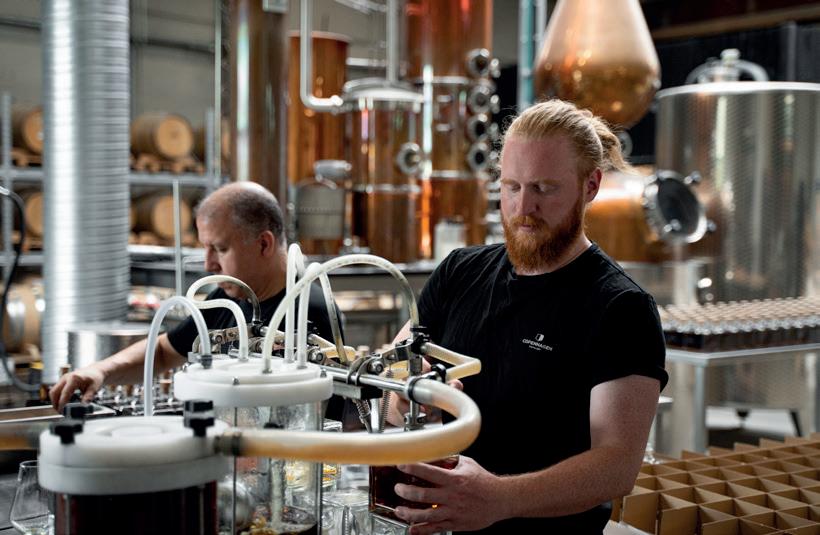
bottle, method, flavour and look – making everything our own.”
The science begins in the grain. Copenhagen Distillery works exclusively with local, organic barley and the micro-organisms that come with it. “Danish barley carries heat-tolerant lactic acid bacteria that survive malting,” explains Öznek. “Most places try to kill or wash everything away; we deliberately keep them in play, because they are part of our flavour.”
The team mashes gently to protect those micro-biomes, refuses to lauter, and, unlike other whisky distilleries, ferments the whole porridge of grain and liquid.
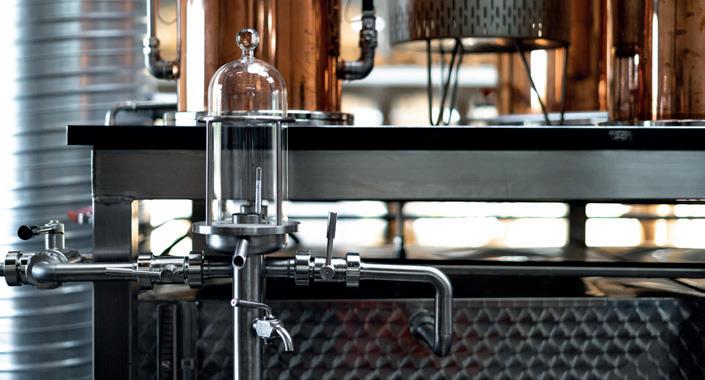
“It looks wrong if you’re used to clarity,” Öznek grins. “But clarity is not a flavour.” Fermentations run not for the usual 72 hours but seven to ten days, long enough for yeast and bacteria to weave layered esters and acids into the wash. “We don’t do trial and error – everything is scientifically sound,” he says. “Our goal is to express a sense of place – a Danishness. The whisky profiles from Scotland and Kentucky are masterpieces in their own right, but ours is a different expression, born of Nordic microclimate and a scientific ethos. We aren’t here to replicate, we seek to redefine.”
Rethinking the machine
Continuing their meticulous approach, the distillation process is a study in intentional deviation. Rather than the traditional multipass pot still routine, Copenhagen Distillery employs a single, exacting distillation on a contemporary Müller hybrid still. This is not for speed, but for unparalleled control, allowing them to sculpt the spirit’s character with the precision of a master craftsman. The result is a New Make Spirit clean enough to sip, yet loaded with character. “Journalists sometimes tell us to bottle it as is,” he laughs, but of course they don’t. To be considered whisky, the spirit must age in wood.
Copenhagen Distillery employs a single, exacting distillation on a contemporary Müller hybrid.
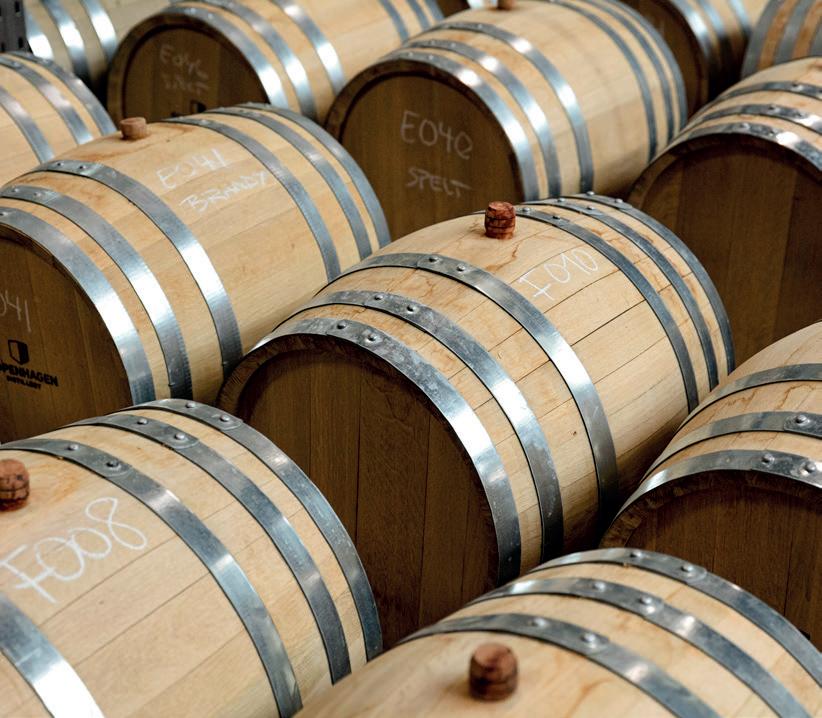
Wood, in this case, means virgin Hungarian oak in bespoke casks coopered from tight-grained 150-year-old trees grown high on cool slopes and air-dried before being toasted, not charred, to the distillery’s specification. Toasting – essentially a slow bake – caramelises sugars and opens a different register of aromas to charring: think coffee, dark sugars, stone fruit and warm spice, without the blanket of charcoal.
Purposeful maturation
The next step is storage and ageing. Where Scotch warehouses lean on chilly constancy, Copenhagen Distillery embraces movement. The team harnesses residual process heat and a purpose-built warm warehouse outside the city to drive temperature cycles. “Temperature changes are like agitation – everything moves,” says Öznek. “Diffusion happens faster when you add energy. It is basic chemistry, like making tea; you know it’s going to be faster if you use hot water and move the bag.”
This philosophy prioritises purposeful maturation over prolonged ageing. While they honour the three-year legal benchmark, their focus is not on using time to eliminate inherent flaws – a process often central to traditional methods. “Our spirit is crafted for purity from its inception,”
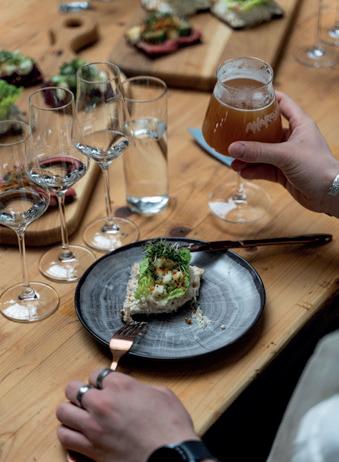
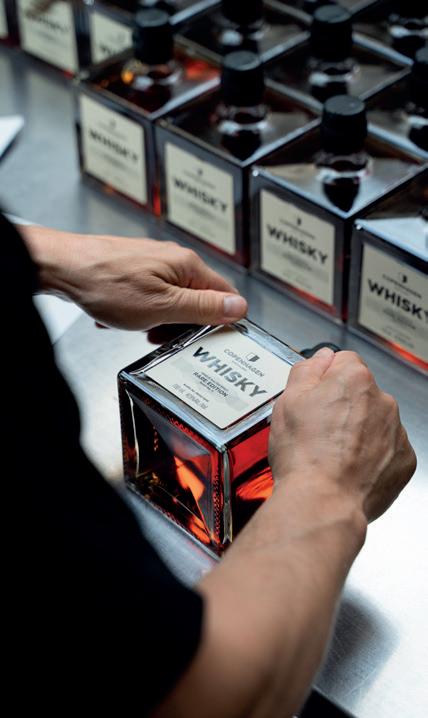
Öznek explains. “Rather than dedicating years to correction, we invest that time in a more enriching pursuit: the deliberate and graceful layering of complexity.”
Occasionally, the team matures spirit in casks previously used for gin and aquavit, not for novelty but for nuance, and of course, both the casks and the gin and aquavit are made distinctly to achieve the optimum result. “To make gin-cask whisky the way we do, we can’t buy offthe-shelf. That demands good gin, so we make both the aquavit and gin ourselves and have actually won awards for them as well,” says Urth. “In 2020, before we launched the whiskies, people knew us as a gin distillery even though that was never the plan.”
Green by design
Important to Öznek is to stress that everything is done by design, nothing has come by coincidence. Sustainability, too, is built into the process. All the barley is organic; cooling water is captured
All casks are bespoke, made from virgin Hungarian oak from 150-year-old trees.
Everything, including labels, is made in Denmark or Europe.
The Aquavit and Smørrebrød tasting is one of many tastings and workshops available at Copenhagen Distillery.
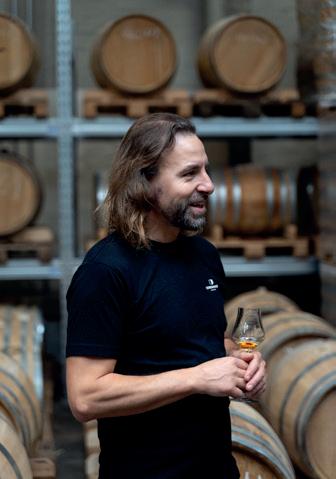
and reused in the next mash; steam does the cleaning rather than harsh chemicals; electricity is from wind and solar; and spent grain leaves as feed for nearby farms. Even citrus peels from the bar are looped back into gin production. “We run the bar under a simple idea: don’t get wasted,” says Urth, smiling.
Visit the distillery
The bar, open from Thursday to Saturday, is just one of the many places people can experience the work of Copenhagen Distillery. The large event space also hosts gin-making workshops, tours, concerts, and, of course, whisky tastings, attracting a vibrant mix of locals, tourists and whisky nerds. “Many of our younger visitors often start the night with the gin-making or cocktail class, then stay
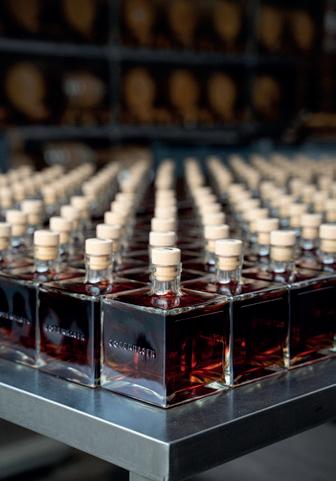
for drinks and music before heading out to town,” explains Urth.
During November and December, visitors also have the chance to try out the distillery’s quintessentially Danish Aquavit and Smørrebrød (open ryebread sandwiches) tastings every Friday and Saturday.
Recognition follows rebellion
This meticulous approach has garnered respect from the global spirits community. Last year, a collaboration with Harvey Nichols – a Scandinavian whisky matured in aquavit-seasoned casks –impressed even the top of the league. “Suddenly, spirits magazines were calling it one of the most innovative products of the year,” says Urth.
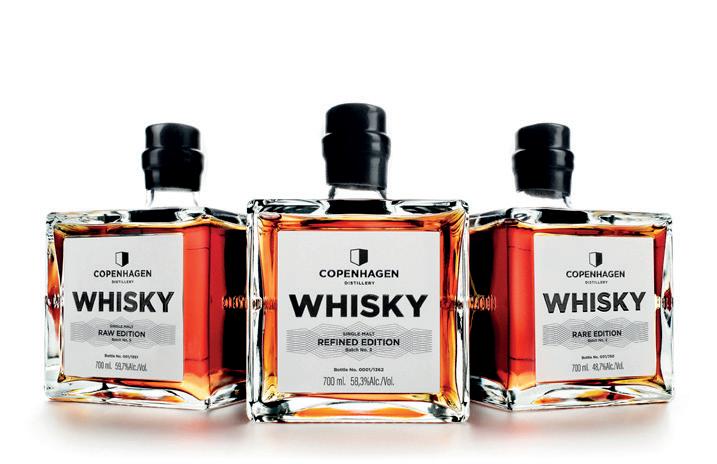
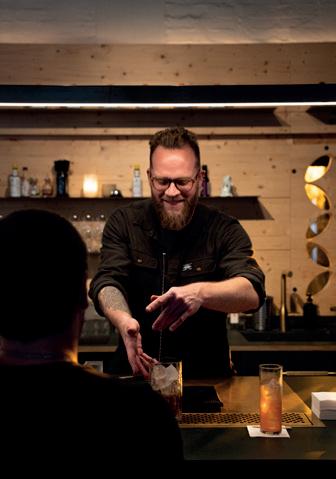
In the end, Copenhagen Distillery’s achievement is about authorship. It is about applying a Nordic lens – minimalist, scientific, and deeply connected to the environment – to the art of whisky. They are not discarding the old rule books, but composing a new and compelling volume for the curator’s library.
For the discerning collector, Copenhagen Distillery offers more than a spirit; it offers a narrative. Each bottle is a testament to place, a document of scientific artistry, and an opportunity to be among the first to cultivate a taste for what is undoubtedly a future classic. To experience this liquid art is to understand the future of whisky curation.
www.copenhagendistillery.com
Facebook: Copenhagen Distillery
Instagram: @copenhagendistillery
TikTok: @copenhagendistillery
The range – RAW, REFINED and RARE
RAW is organic single malt in virgin, toasted (non-charred) Hungarian oak: ripe fruit, honeyed grain, coconut and white pepper.
REFINED layers cold-smoked malt and seasoned casks for Danish-bitters and rye-bread echoes.
RARE is the playground: ancient grains, unexpected casks, experimental ferments – the bottled “what if?”
With a background in science, master distiller Lasse Öznek leaves nothing to chance.
Head of communications and education, Sune Urth, behind the bar.
NORDICARCHITECTURE SpecialTheme:
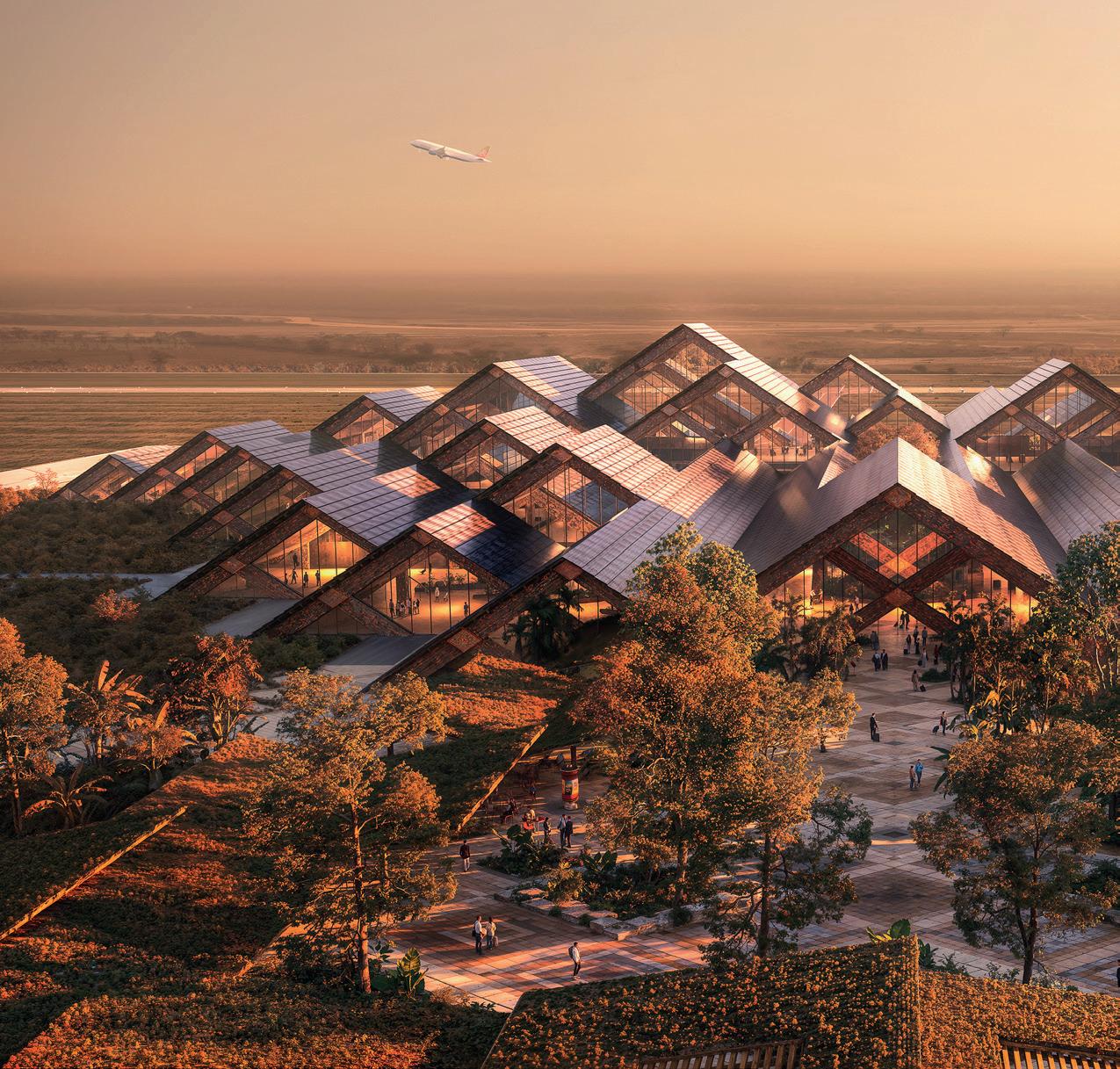
WAF 2025: exploring hearts and minds in architecture
World Architecture Festival is a celebration of the world’s best architecture, landscape and interior projects. This year’s edition takes place in Miami, 12-14 November, with a theme centred around hearts and minds. Scan Magazine catches up with WAF’s programme director, Paul Finch, for a glimpse of the upcoming event.
By Malin Norman
The annual World Architecture Festival (WAF) is where the architecture community meets to celebrate, learn, exchange and be inspired. Every year, WAF hosts the world’s largest live-judged architecture awards programme, complemented by keynote talks, an exhibition, and various fringe events including architecture tours, networking opportunities, and workshops.
T his year, WAF will take place in the US for the first time, reflecting the festival’s long-term commitment to make the awards programme truly global, and also recognising the huge influence that North American architecture has on the world. WAF 2025 will be hosted at the newly renovated Miami Beach Convention Center, 12-14 November. Located in the heart of South Beach and close to the
Art Deco Historic District, it seems the perfect place for architects and designers to come together to compete, network and celebrate.
“We are delighted to be staging WAF in the US, for the first time, and also thrilled that so many architects from the US have entered the awards. We have also seen an increase in entries from Central and South
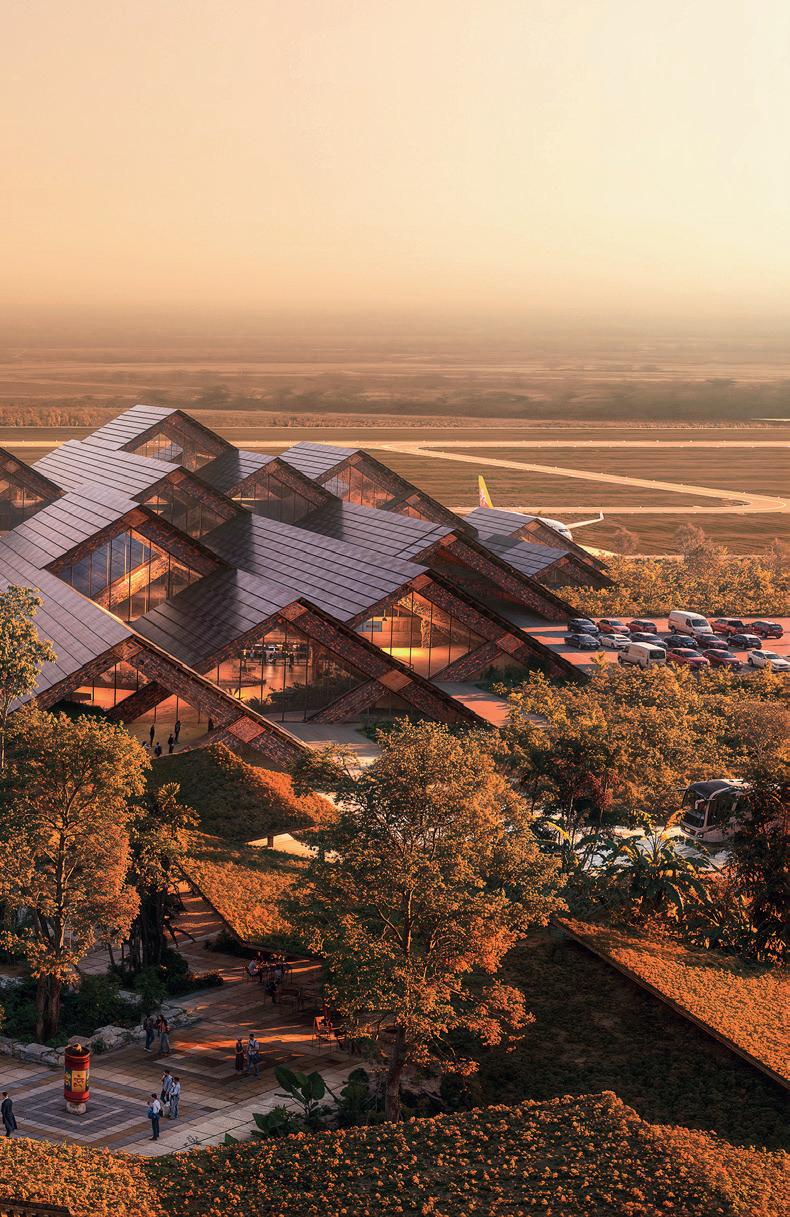
America this year,” says Paul Finch, programme director. “The overall quality of the shortlist is as good as it has ever been, and we look forward to seeing over 460 presentations in Miami Beach this November.”
Emotional charge in architecture
The theme for the main stage conference is ‘Hearts and Minds’ – contrasting the
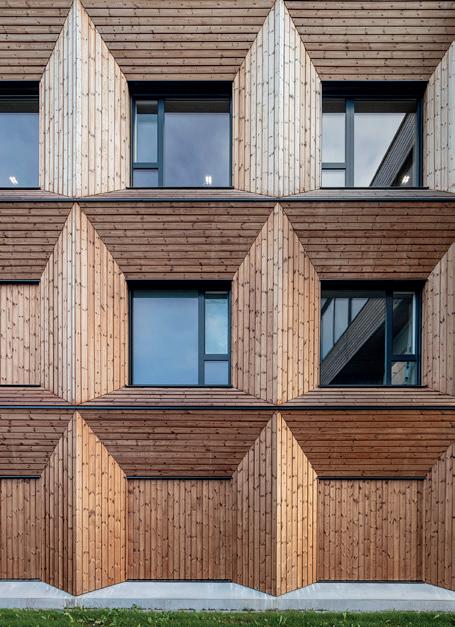
scientific and the more empathetic part of architecture – to be discussed more in detail at the opening talk by Finch. “Architecture and design are products of the mind: site and programme analysis, the thought required in respect of materials, specifications, construction technology, cost and planning and other regulatory processes,” the director says. “But these inevitable requirements are supple-
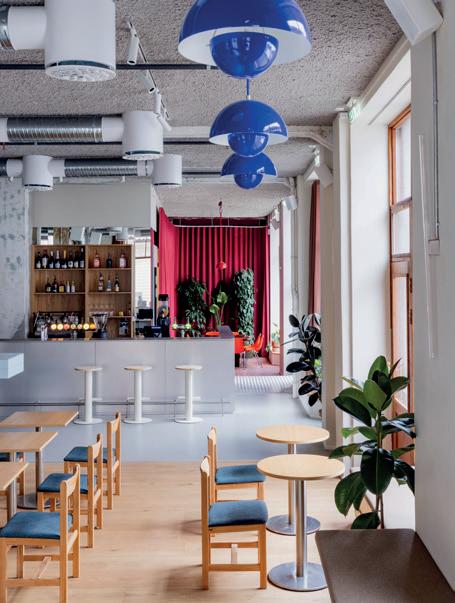
Set to open in 2029, Gelephu International Airport by BIG - Bjarke Ingels Group has been shortlisted in the category WAF Future Projects – Infrastructure. The terminal’s diagrid structure is built from locally and sustainably sourced timber, adorned with traditional Bhutanese wood carvings. Rendering by BIG
Shortlisted in the category WAF Completed Buildings – Production, Energy and Logistics, RISE Bioeconomy Arena by Sweco Architects stands as a wooden geometric gem of innovation and sustainable design. The low-climate-impact structure, located in Örnsköldsvik in Sweden, is built almost entirely in wood. Photo: Tim Meier, Sweco
Architecture studio LOCAL has transformed a historic building in Bergen, Norway, into a vibrant cultural house with mini-golf, food, and performing arts. The project is shortlisted in WAF Interiors – Bars and Restaurants. Photo: Ben Speck
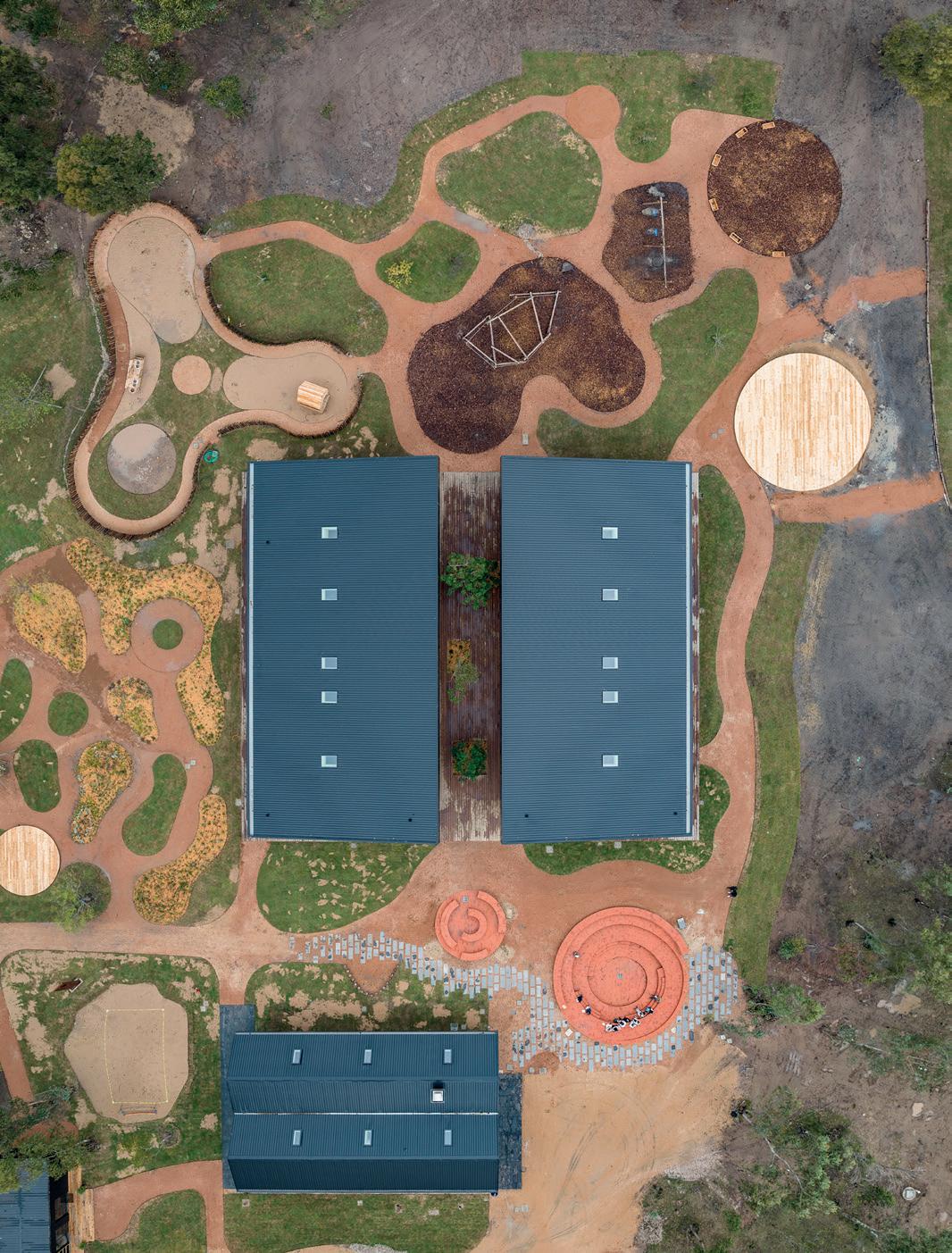
The Garzón School by Rosan Bosch Studio is one of the entries in WAF Completed Buildings – School. Located in Punte del Este, Uruguay, the vast and untamed environment is intertwined with the school’s identity, and learning seamlessly happens indoor and outdoor. Photo: Eleazar Cuadros
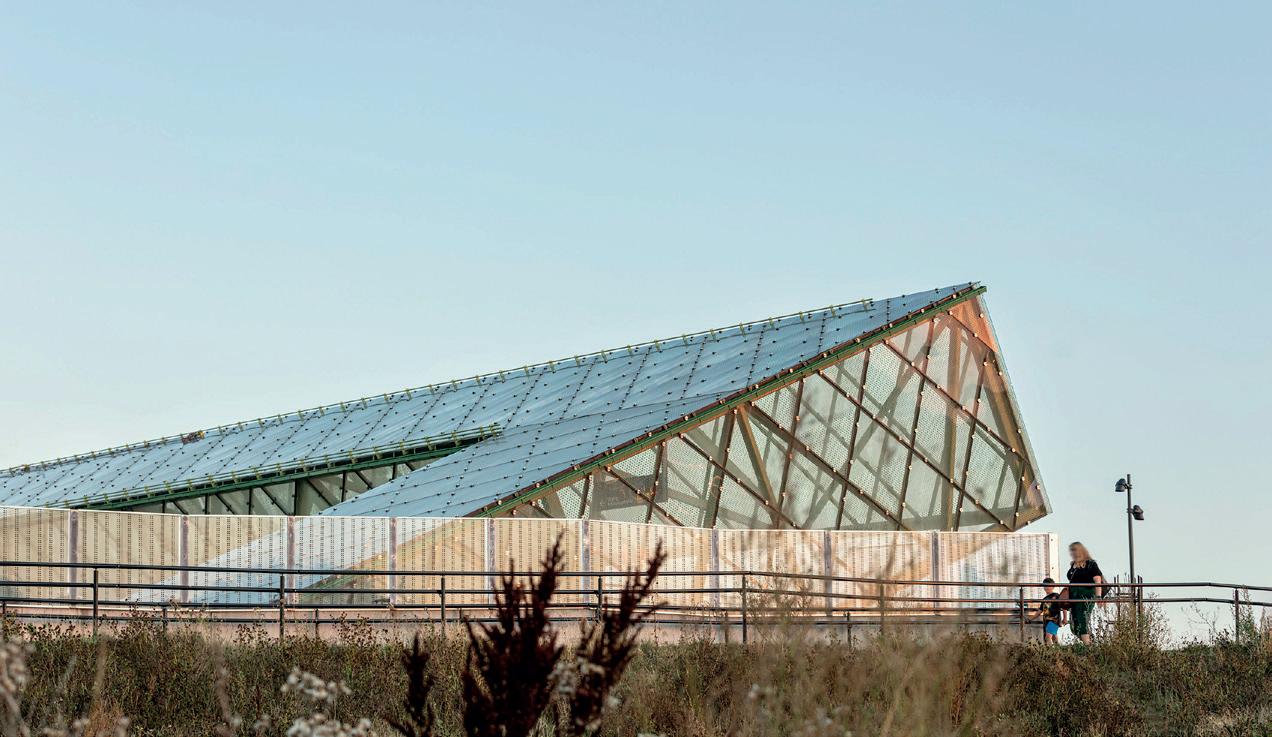
mented by the desire to satisfy clients, users and the public by appealing to the senses and the emotions.”
A broad range of architects and designers have been invited to reflect on this relationship between hearts and minds, in relation to their own work and work by others they admire. Two speakers will dive deeper into Miami’s architecture. First out, Bernardo Fort-Brescia, founding principal at Arquitectonica, will explore how Miami has evolved in the last 50 years by successfully addressing architecture, resilience, design, planning, diversity, and community. And Dawn Gunter, managing director of Gensler’s Miami office, will elaborate on user experience and the future of the Miami office space.
Also speaking on the first day is Wong Chiu Man, co-founder and managing director of WOW Architects | Warner Wong Design. Chiu Man is at the forefront of regenerative and sustainable design practices in creating highly immersive built environments that integrates architecture, landscape and interior design with an ecological emphasis.
The programme also includes, for instance, Fernando Menis, architect at Fernando Menis SLU, who is known for contextual architecture, circular materiality, and free geometry structures. Viviana Muscettola, director at Zaha Hadid Archi-
tects, will talk about meaningful beauty in architecture, whilst Beatrice Galilee, executive director at The World Around, a New York-based platform dedicated to visionary global design and architecture, will elaborate on radical repair.
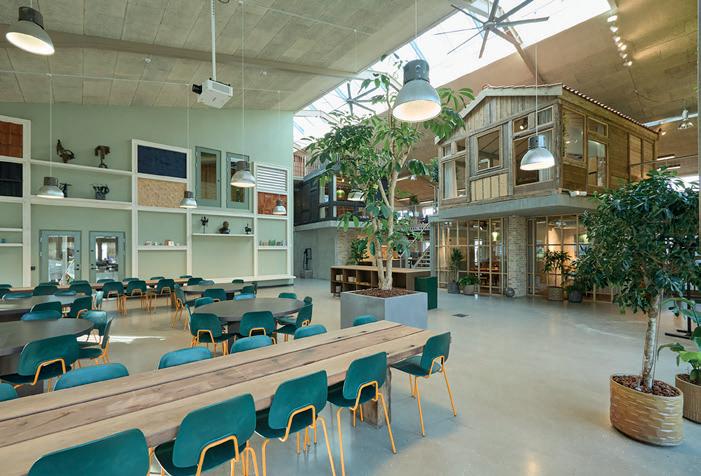
Hjärup Station by Sweco Architects has been nominated in the category WAF Completed Buildings – Transport. The project in Hjärup, Sweden, redefines how transportation infrastructure can serve as a catalyst for smalltown cohesion and identity.Photo: Tim Meier, Sweco
Tscherning HQ by 3XN GXN is a radical way of designing an office interior, negotiating between people and materials. The project is located in Hedehusene, Denmark, and has been shortlisted in WAF Interiors – Workplace (Large).Photo: Claus Peuckert
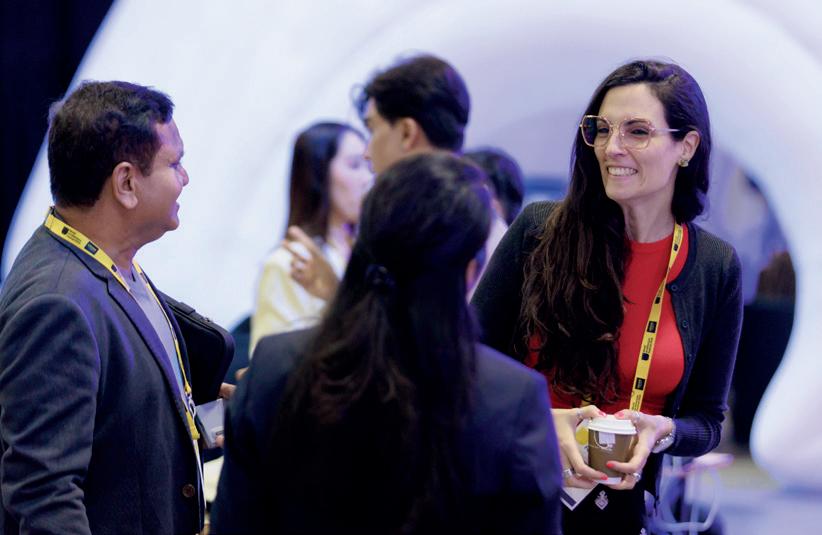
T he speaker programme at WAF 2025 is set to end on a high note. Australian architect Richard Francis-Jones, design director at fjcstudio, will close the final day with his talk titled “The Insecurities of the Architect.” Francis-Jones has won numerous awards, including WAF’s World Building of the Year Award on two separate occasions – the only architect to have achieved this.
Groundbreaking global achievements
WAF is the only architectural awards programme where all finalists present their projects live to a panel of judges and an audience of peers at the festival. The 2025 shortlist features over 460 projects across 43 categories, ranging from best creative reuse, housing and education, to best hotel, sports and culture.
The shortlist celebrates the most groundbreaking architectural and design achievements, with project entries from the world’s leading practices, including Bjarke Ingels Group, Foster + Partners, Studio Gang, Grimshaw, Nikken Sekkei, Mario Cucinella Architects, and Perkins&Will, competing alongside innovative work from exciting emerging practices.
Plenty more will happen at WAF 2025. The Festival Hall Stage will host presentations from the WAFX Winners, highlighting future projects that use cutting-edge design to tackle major global issues, including health, climate change, technology, ethics, and values. Visitors will also find technical sessions and showcases on this stage.
The WAF Special Prizes will be awarded to projects demonstrating excellence in a particular area, for instance, best use of colour and best use of timber. Each of the finalists will present live at the festival, with winners being announced at the Gala Dinner.
New this year is 40 Under 40 North America, a collaboration between WAF and The Architect’s Newspaper. It highlights 40 outstanding young architects from the United States, Canada, and Mexico, who will be featured in a dedicated exhibition where their work will be seen by some of the world’s most influential architects.
www.worldarchitecturefestival.com Facebook: ArchitectureFestival Instagram: @worldarchfest Twitter: @worldarchfest
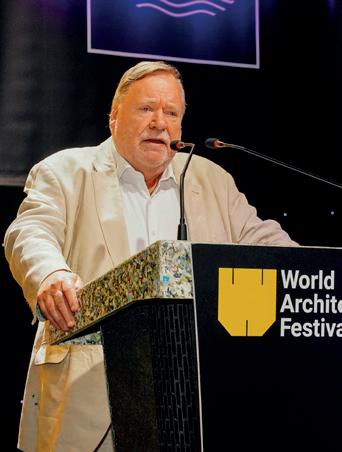
Beach Convention Center, in the heart of South Beach and the iconic Art Deco District, 12-14 November.
Scandinavian firms shortlisted for awards at this year’s festival:
Tscherning HQ by 3XN GXN (Denmark), in WAF Interiors – Workplace (Large)
Bergen Camping by LOCAL (Norway), in WAF Interiors – Bars and Restaurants
RISE Bioeconomy Arena by Sweco Architects (Sweden), in WAF Completed Buildings – Production, Energy and Logistics
Hjärup Station by Sweco Architects (Sweden), in WAF Completed Buildings – Transport
BS Klim Op Zandbergen by Rosan Bosch Studio (Denmark), in WAF Interiors – Education
The Garzón School by Rosan Bosch Studio (Denmark), in WAF Completed Buildings – School
Gelephu International Airport by BIGBjarke Ingels Group (Denmark), in WAF Future Projects – Infrastructure
SAP Garden by 3XN GXN (Denmark), in WAF Completed Buildings – Sport
WAF 2025 will be hosted at Miami
Last year’s edition of World Architecture Festival took place in Marina Bay Sands in Singapore, with 1800+ architects, designers, clients, suppliers and press coming together to compete, be inspired and celebrate.
Photo: World Architecture Festival
Paul Finch, WAF programme director. Photo: World Architecture Festival
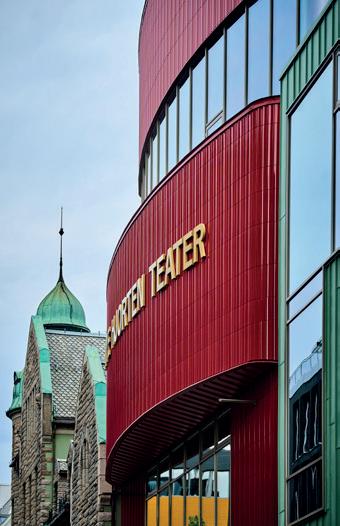
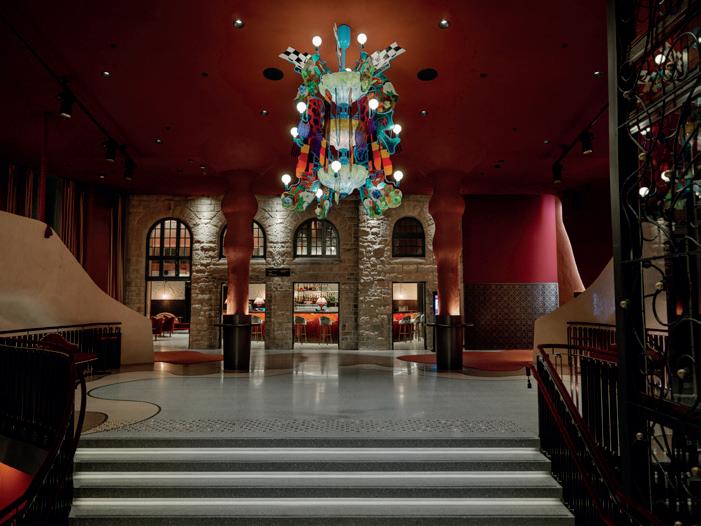
Skibnes Arkitekter: reviving Trondheim’s cultural heart
For four decades, Trondheim-based architecture studio Skibnes Arkitekter has helped shape the city’s identity through projects ranging from housing, student housing and kindergartens, to cinemas and cultural venues. At the heart of its philosophy lies a commitment to balancing preservation with renewal, an approach that is embodied in its latest cultural landmark: the spectacular Nye Hjorten Teater.
By Celina Tran
Founded in 1984, Skibnes Arkitekter has consistently championed architecture that strengthens communities. The studio’s portfolio includes the Dokkhuset jazz club, Rosendal Teater and Nova Kino, projects that, like Nye Hjorten Teater, enrich Trondheim’s urban fabric. “We’ve always liked working with buildings that people enjoy together, houses that strengthen the city’s cultural life,” says head of design and principle shareholder Svein Skibnes
Trondheim itself provides fertile ground for this vision. A historic yet modern city, it thrives on its student population and young families. Skibnes credits the youth with bringing the city to life, but also stresses that the aim is to create public spaces accessible to people of all ages.
When they were tasked with creating a new 600-seat theatre on the site of a parking lot behind the listed Postbygget, the challenge was clear: respect history while giving the city something fresh. “We wanted to lift the auditorium while preserving much of the old post building. The theatre expresses itself boldly towards the Apoteker (pharmacy) mews, a side street where we could allow a more playful, expressive architecture,” Skibnes explains.
The resulting building combines history and innovation through materials and form. A specially designed tile creates a meaningful contrast with the post office’s stone facade. “The tiling pattern resembles a stage curtain so that when you’re inside, it feels as if you’re looking
out onto the city from the stage,” says Skibnes.
The venue’s name pays homage to the original Hjorten Teater, a cultural hub in Trondheim and beyond before its demolition in the 1960s. True to that spirit, the new venue is designed as more than just a performance space. “The client, Ole Robert Reitan and E.C. Dahls Eiendom, wanted the space’s public passages, in combination with the new café and PoMo art Museum in Postbygget, to be somewhere where it would feel like Saturday every day, a house open to everyone, not only theatregoers,” Skibnes adds.
By opening up a previously closed-off area, the project reactivates a central part of the city. Skibnes concludes: “The expression is challenging and fun. Along with the interior design by Anemone Studio, it aims to create something functional and useful, while also adding something fresh in the historic surroundings.”
www.skibnes.no
Photo: Reitan Retail / Studio Dreyer Hensley
Photo: Skibnes Arkitekter/Wittrup
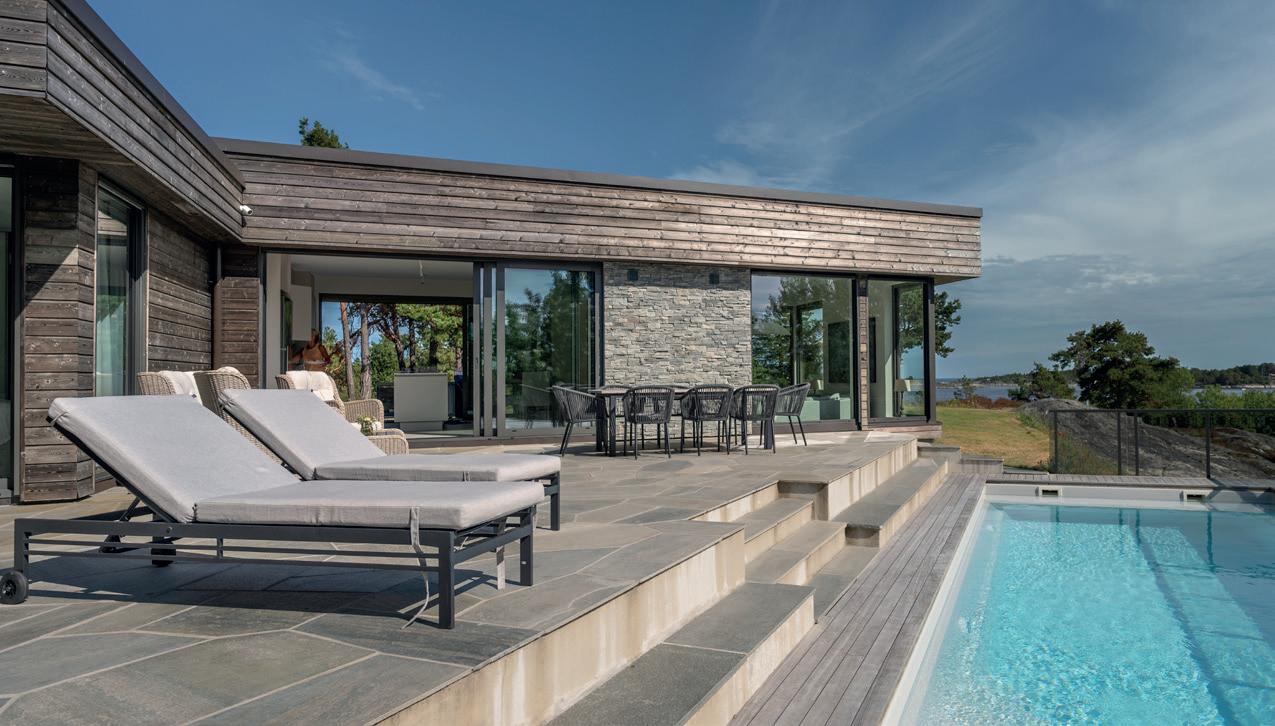
Arkitekthuset Kragerø: shaping homes from shoreline to skyline
In the coastal town of Kragerø, where white wooden houses dot the shoreline and a labyrinth of islands stretches into the horizon, Arkitekthuset Kragerø has, for over 40 years, quietly shaped the architectural language of Southern Norway.
By Celina Tran | Photos: Arkitekthuset Kragerø
From traditional timber buildings to striking modern cabins nestled into rugged terrain, Kragerø – often referred to as part of the Norwegian Riviera – is a delightful architectural destination. While it is a town of just 11,000 people, the population swells dramatically each summer as families return to the archipelago where they have holidayed for generations.
“We’re a small office in a small town, but we’ve always punched above our weight,” says architect and manager David Løffler. “With ten people on the team, this is a small office, yet unusually large for a place like this, and our diverse backgrounds give us unique perspectives.”
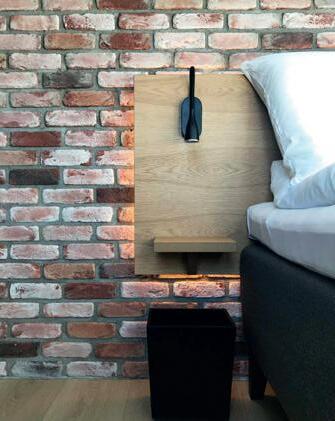
Indeed, with architects from Chechnya, South Africa, and the Philippines, the firm’s team reflects an impressive international reach, yet its design ethos is firmly rooted in Kragerø.
“Whether we’re working on a hillside cabin, a seaside retreat, or a residential block in Oslo, our projects are shaped by the surroundings,” Løffler explains. “It’s important to us to not to force clients into a mould. We listen to their wants and requirements, then design from there.”
Honouring building traditions – and challenging them
Founded in 1984 by the late architect Morten Lunøe, Arkitekthuset has evolved from a one-man practice to a dynamic, multi-disciplinary studio. Today, the firm handles everything from zoning plans and urban redevelopment to bespoke interiors and carpentered furniture piec-
es. Their portfolio spans from mountain cabins to city apartments in the capital, but their heart remains in Kragerø’s landscape with its 500 islands and over 4,000 holiday homes.
The town’s architectural identity is defined by its heritage of small-windowed, white-painted timber buildings, and Arkitekthuset plays an active role in preserving and continuing this architectural expression. After a significant town-centre fire some years ago, the firm was tasked with designing new buildings that harmonise with Kragerø’s historic character.
“When you build something traditional, it has to be done properly. We pay attention to the right proportions, the correct historical detailing, even the right kind of mouldings. It’s about respecting the environment you’re adding to,” says Løffler. “We specialise in navigating the strict building regulations along the shoreline. Getting permission to build within the 100-metre zone from the sea requires strong arguments and sensitivity to public benefit, and that’s where our local knowledge and understanding really proves invaluable.”
Working in a small town means wearing many hats. One day, the firm is handling a complex planning application for a new housing development. The next, they are designing a minimalist boathouse or a
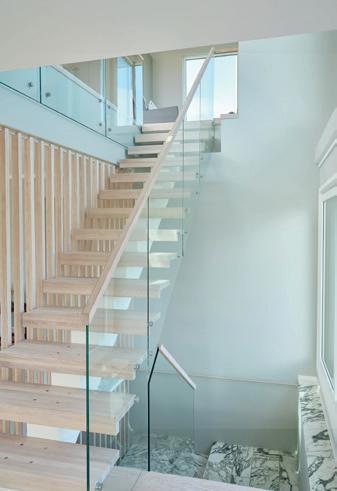
bespoke kitchen interior. Regardless of the project, there is one clear and consistent line: attention to detail, sensitivity to context, and a deep respect for the client’s vision.
“We meet across their kitchen table, over a cup of coffee,” says Løffler. “These holiday homes are often some of the most cherished places people have. It’s personal. We want to realise their dream, so the next step is to truly listen.”
The architectural firm’s relationship to the clientele, whether local or international, is personal and attentive, and they show a
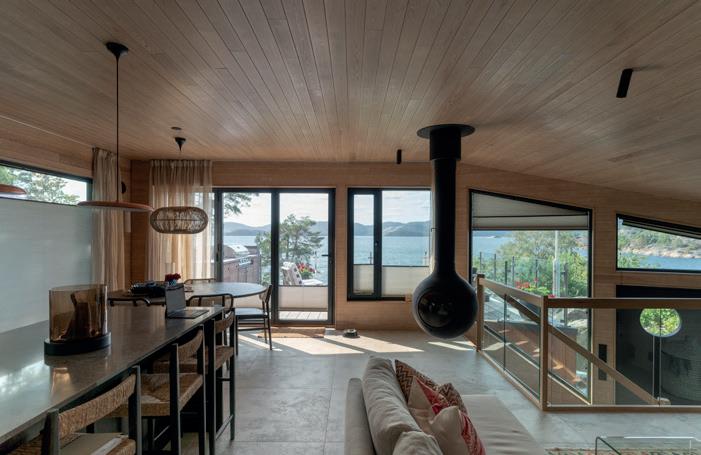
rare ability to translate big ambitions into grounded, local expressions.
Despite its growing reputation, the firm is deliberate about staying accessible. “We design everything from a carport to a luxury villa. Being part of the local community is crucial to us. We support local business, collaborate with local builders, and understand how the system works here, both politically and practically,” Løffler says. With a laugh he continues: “In a big city, there’s a lot to see. In a small town, there’s a lot to hear. It’s wonderful to be seen and appreciated, but also a challenge at times. Different people have a lot to say, and we always do our best to listen.”
Using 3D modelling as a standard part of the process, the firm invites clients into every phase of design, making them participants rather than just recipients. It is part of the firm’s goal to continuously improve delivery and client satisfaction.
“Whether a project is completed in one stage or many, we invest in the relationship. That’s how we earn trust, and that’s how we get to keep shaping this beautiful part of the world,” Løffler says. “While deeply rooted in the local history, we’re also architects of 2025, which means that we do so with a forward-looking expression.”
www.arkitekthuset.no
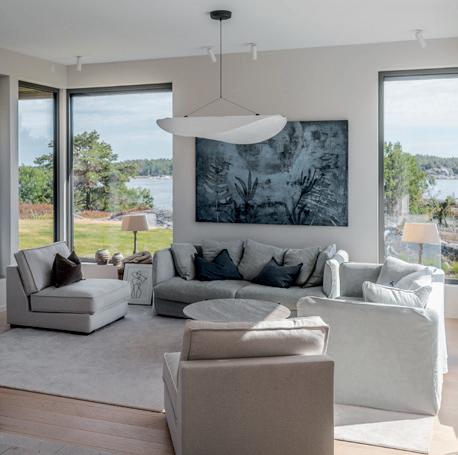
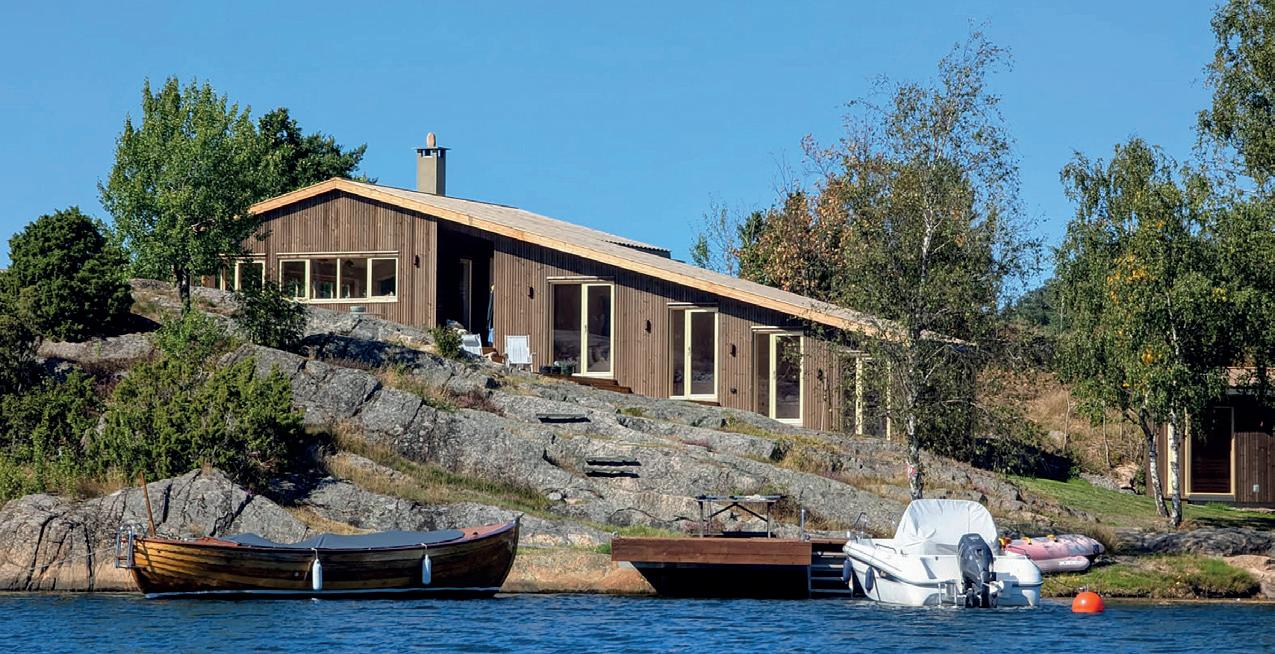
MAP Arkitekter: designing for the sense of belonging
Based in Oslo, Norway, MAP Arkitekter has for over two decades created spaces that do not stand alone, but rather belong to their surroundings, sites, users, and communities. Today, they have become a trusted partner for both public and private projects across Norway, renowned for the ability to translate place, scale, and social needs into thoughtful architecture.
By Celina Tran | Photos: MAP Arkitekter
The story of MAP Arkitekter begins not with a business plan, but with a contest. In 2002, architect Guy Tschudi-Madsen won a commission to design a large office building in Oslo’s city centre, giving him the opportunity to open his own architectural firm.
Since then, the team has been involved in a wide spectrum of projects in over 40 municipalities: schools, kindergartens, health facilities, town halls, office complexes, and housing projects. “We’ve been fortunate to have a foot in both the public and private sectors from the very beginning, something that has defined and still defines us and our work today,” says Tschudi-Madsen.
Today, they are a team of 16 employees, both senior and junior architects, and large enough to handle substantial projects, but intimate enough to allow every-
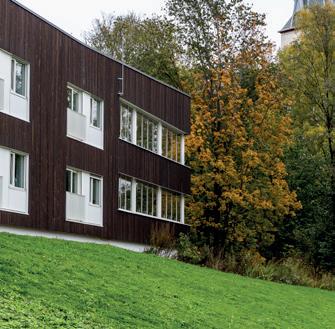
one a voice within the office. “Architecture can sometimes have a touch of Primadonna culture. We want the opposite: a flat structure, a genuine we-culture where ideas are shared and developed together. In our office, projects belong to ‘us’, not to ‘me’,” says Tschudi-Madsen.
Context as compass
The three capital letters of MAP stand for: miljø, arkitektur, planlegging (environment, architecture, planning). Every project sees a careful study of the site’s terrain, scale, and surroundings, not only in order to translate those insights into architecture, but also to ensure that the buildings they design give something back to the local communities. A school, for example, is not just for teaching, but rather it can create social spaces for the whole neighbourhood. Similarly, a good health facility can foster openness instead of isolation within the community.
“A big building must never overwhelm its surroundings,” says Tschudi-Mad-
Finsal Nursing home.
Summerhouse south coast of Norway.
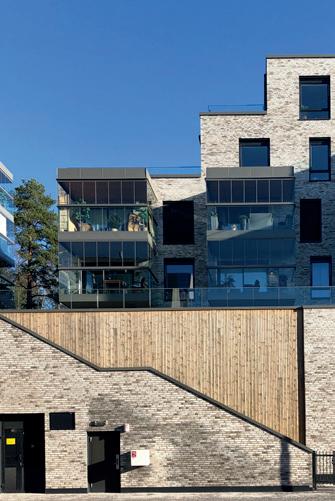
sen. “While we’re architects of today, our new buildings still need to draw on the pre-existing architecture and the nature surrounding it. We always work to break large volumes down, adjust scale and height, and choose materials that make the building feel humane and appropriate for the surroundings and landscape. As a user of the building or as a citizen, as architects we have an obligation to eliminate the feeling of alienation.”
“Designing a building in itself is challenging, however designing one that also engages and respects its surroundings is
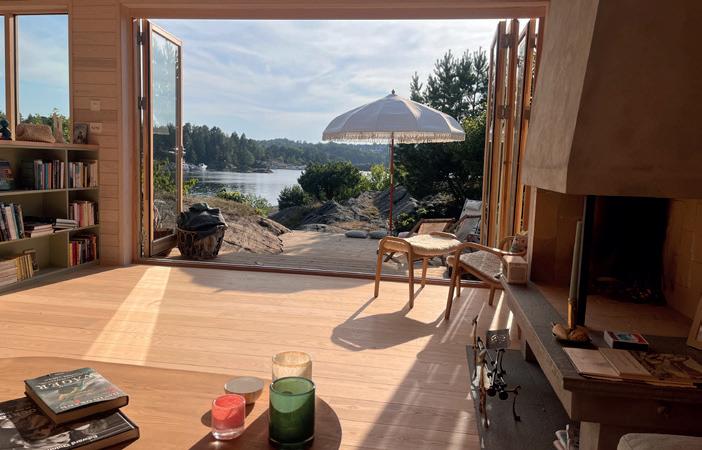
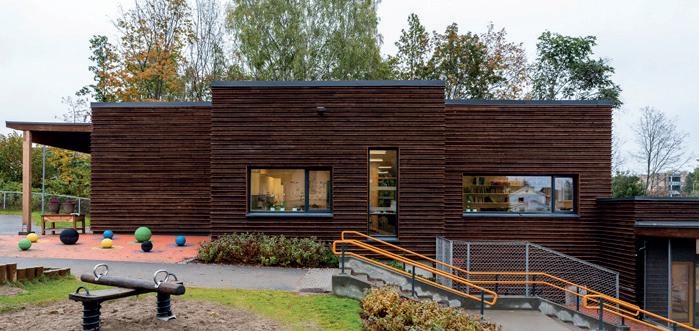
twice as demanding – but also twice as rewarding. It’s something I think architects can always get better at.”
www.mapark.no
Facebook: MAP Arkitekter
Instagram: @maparkitekteras
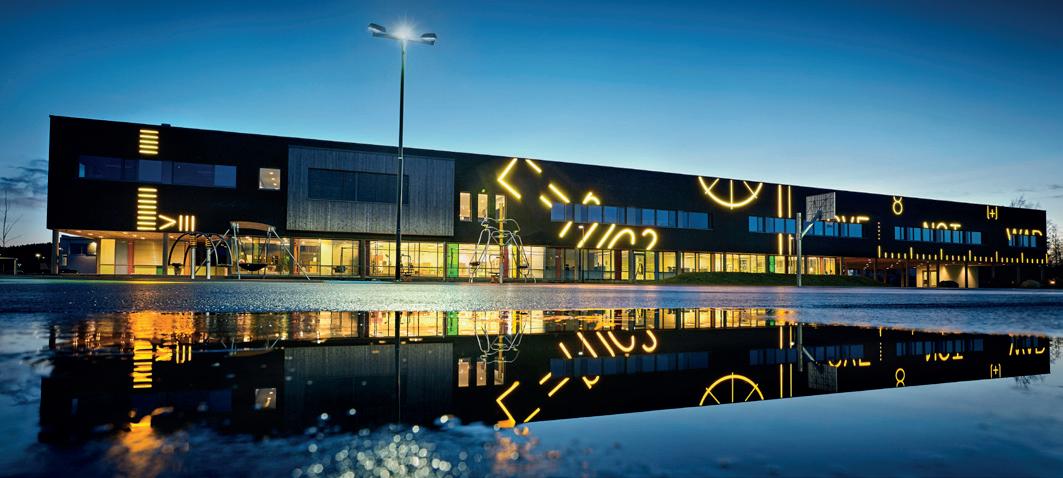
Summerhouse south coast of Norway.
Spikkestad secondary school.
Cecilie Thoresensvei apartments.
Lundbo kindergarden.
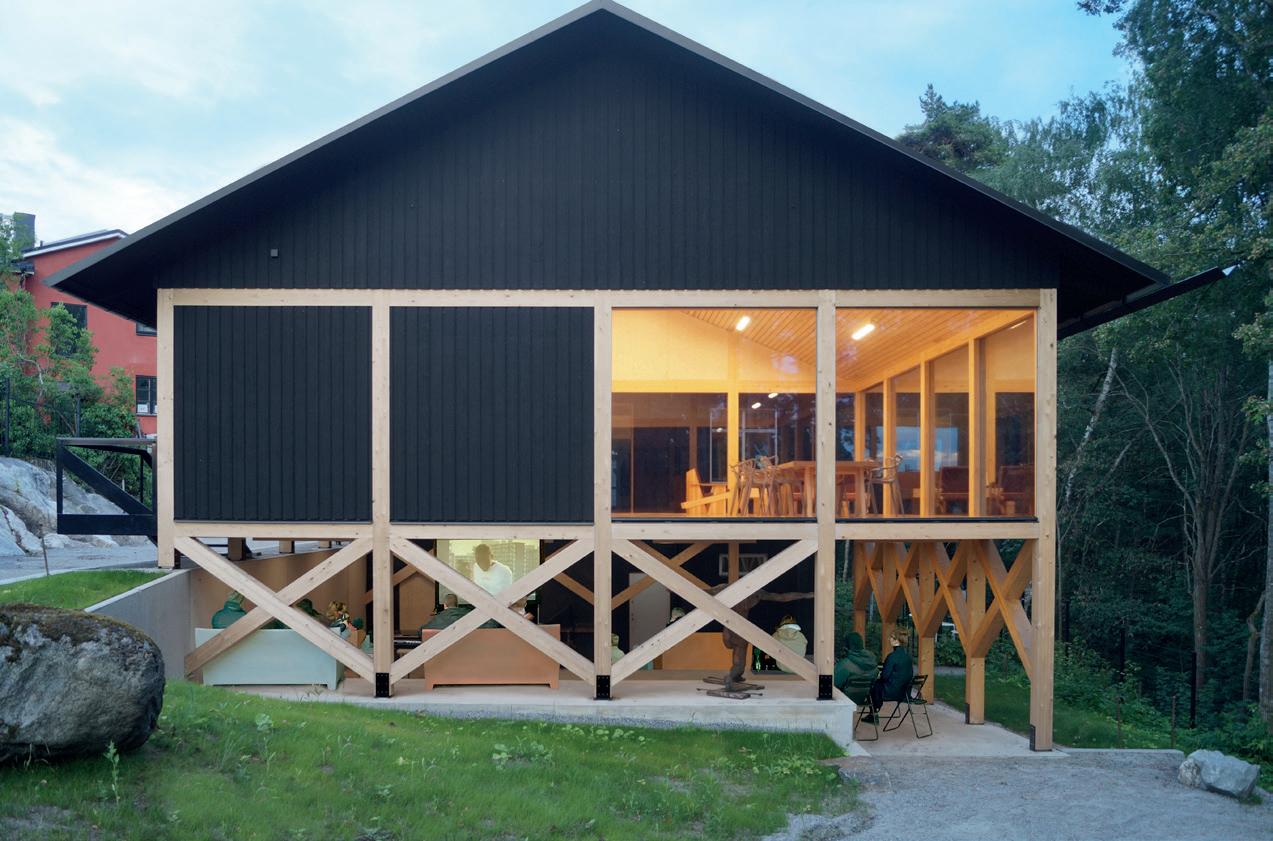
A different take on architecture
With optimism as a leading principle, Anders Berensson Architects paints a beautiful image of the future. Facing difficult challenges, the team tries to understand what is already available and what can be done for the future – to come up with pioneering solutions.
By Malin Norman | Photos: Anders Berensson Architects
The architecture firm was founded by Anders Berensson in 2015. Its philosophy is to gain energy for each project from the unique conditions that each client and task provide. “We only do great projects for great people that we, the client and society, can be proud of,” says Berensson.
With a diverse portfolio that has been widely published around the world, the small firm’s reputation is not based on repeating ideas, but rather inventing new architecture – from public spaces to showrooms for corporate businesses and projects for private clients. “The art form needs to be present: if people love something, they will look after it.”
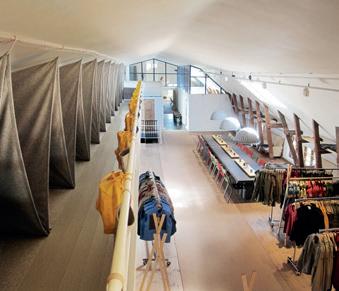
Anders Berensson Architects has designed Vinkel Ladan, the retrofitting of an old barn in Norra Djurgården, Stockholm, in collaboration with interior designer
Pelle Rickberg and Wild Windows. The building has two purposes; to host conferences and events, and to educate Fjällräven ambassadors in the brand’s philosophy, products and retail. The challenge: no room for accommodation.
Berensson explains: “We asked the question: Do we need architecture to solve this, or can we do it with outdoor clothes and new customs?” The solution was to offer a tent camp, with Fjällräven tents filled with outdoor equipment for camping. This brings the visitor into a calm, focused and adoptive mindset. “Our question led us to find simple solutions to complicated problems, by looking at the outdoors industry and local customs in Sweden, rather than complicated and costly building designs.”
Also located in Norra Djurgården is Outdoor Office, a building that is half office, half outdoor meeting space. “The building is an extension of an existing office building inhabited by outdoor and shoe brand
Vinkel Ladan and Outdoor Office
Vinkel Ladan.
Outdoor Office.
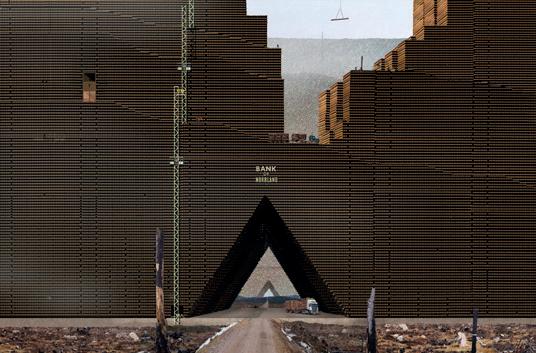
Lundhags,” says Berensson. “Building in the Royal National City Park, we tried to do as little excavations as possible. Therefore, we decided to design a house on wooden pillars, standing on the sloping terrain, with a space underneath serving as an outdoor amphitheatre.”
Rock Stage and Sauna Stack
An interesting project based on its context is Rock Stage, an outdoor stage in the town or Tibro. It was created by stacked giant faux marble blocks, designed in close collaboration with the municipality and local craft students. “When we started this project, we realised that Tibro has education in the art of marble painting,” explains the architect. “With a low budget, we designed a stage that tries to take advantage of an unusual economy with talented students.”
Similarly, Thermal Mass Sauna Stack in Ulefors, Norway, is an experiment in context. The sauna is designed as a cave-like stack of wood studs, where the thermal mass of the timber absorbs heat and releases it when bathing. The design was commissioned and made in dialogue with Mikkel Aaland, legendary photographer and sauna connoisseur. “Mikkel asked for a design of an organic shaped wooden sauna with the Finnish sauna as a role model,” explains Berensson. “To do this, we had to reinvent both the structure and the building physics.”
The futuristic Bank of Norrland
A futuristic concept by Anders Berensson Architects is Bank of Norrland, imagined as the world’s largest timber structure
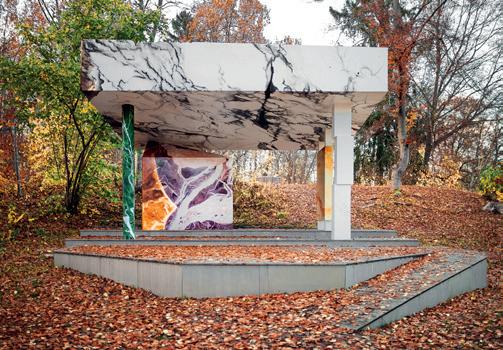
–in order to reduce the ‘green’ half of Sweden’s carbon emissions. The project is part of the ArkDes Collection, and was also named as one of the boldest design proposals of 2021 by CNN.
“The purpose of the Bank of Norrland is to store carbon dioxide; in the process, it will provide farmers with decent payment for their wood and ensuring continuity for the Swedish building and manufacturing industries in a stormy and unpredictable world, and in times of reduced wood consumption,” explains Berensson about the idea.
The Bank of Norrland is designed to be able to store a year’s worth of timber production; the cubic kilometre of stored logs will together form the world’s largest timber structure and the largest man-made carbon dioxide storage built to date. Timber will be stored for future use, rather than being immediately burnt for paper or fuel as is done today, a practice that
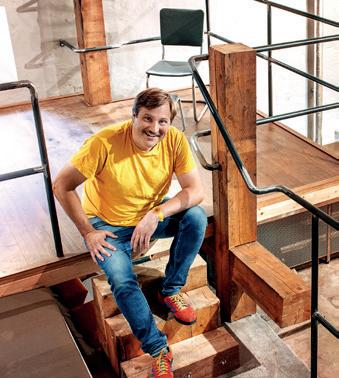
releases large amounts of carbon dioxide into the atmosphere.
Fabulous Future Factory
Berensson is behind the new KTH School of Architecture, Master Studio, Fabulous Future Factory. The studio focuses on building a fabulous new sustainable society through radical architecture.
Anders Berensson Architects offers a different approach to sustainable architecture, far from standard solutions. “We want to be Sweden’s most innovative architectural firm, with magical solutions to difficult challenges,” adds Berensson. “With so many boxes available to us, it’s easier to ‘think outside the box’ – the more boxes, the more fun. At the end of the day, we want to continue having fun with architecture.”
andersberenssonarchitects.com Instagram: @anders_berensson_ architects
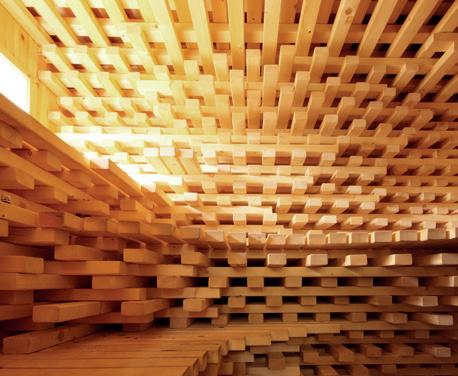
Anders Berensson, founder.
Back of Norrland.
Rock Stage. Photo: Linda Hutchins
Sauna Stack.
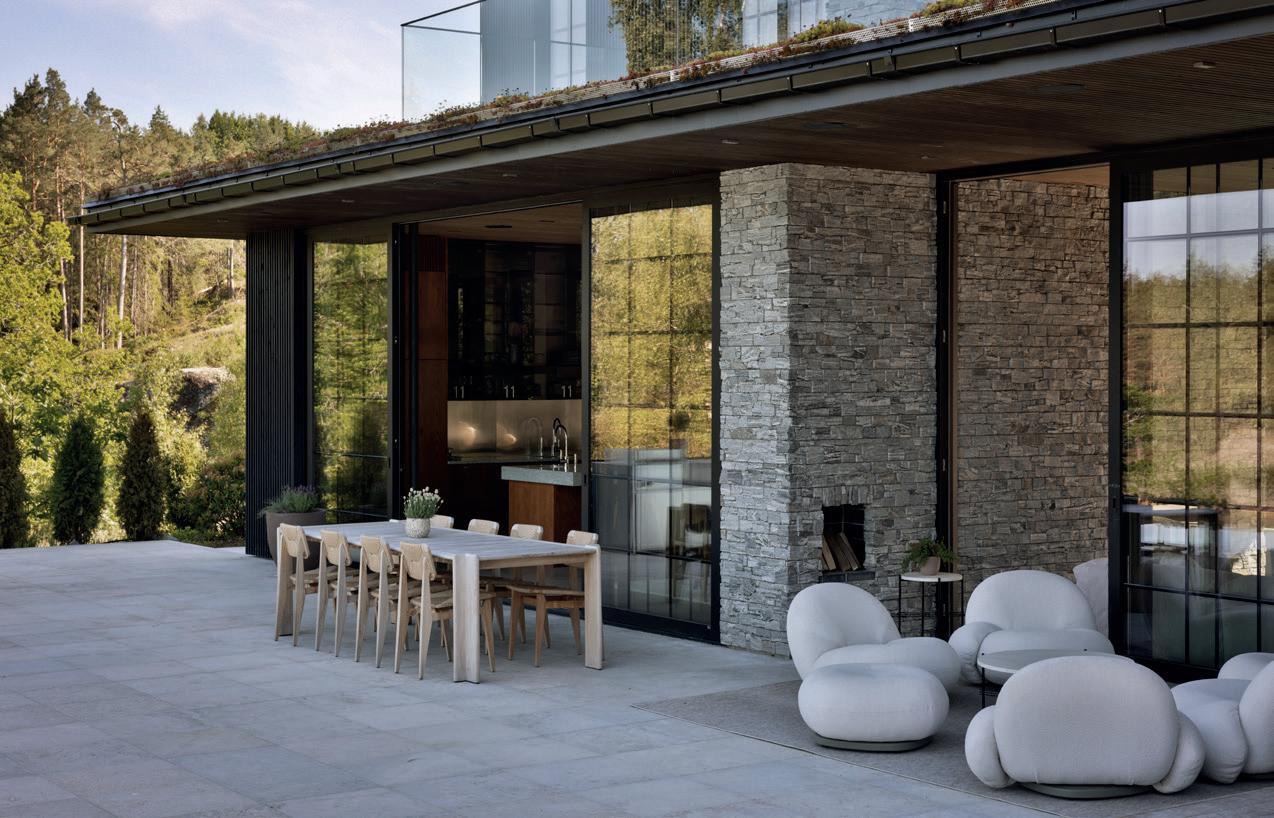
Infusing architecture with soul, in a modern context
Studio RAM creates soulful, elegant spaces where design and conscience meet — inspiring people to live beautifully while shaping a better world. Dedicated to the art of creating sophisticated environments that transcend trends and time, the architects are passionate about the beautiful and iconic, the genuine and humble.
By Malin Norman
Architectural and interior design firm Studio RAM is based in Stockholm, with activities globally. Founded in 2013, the team consists of a tight group of highly skilled architects with experience ranging from high-end residential to commercial and hospitality projects, real estate development, project management and brand development.
Projects include exterior, interior and lighting design, bespoke solutions and furniture, as well as product design. “Regardless of the nature of the project, private or commercial, we are dedicated to creating spaces that clients will fall in love with at first sight and continue to thrive in over time,” says Ariel Ramirez, founder and CEO. “Ultimately, we strive to achieve
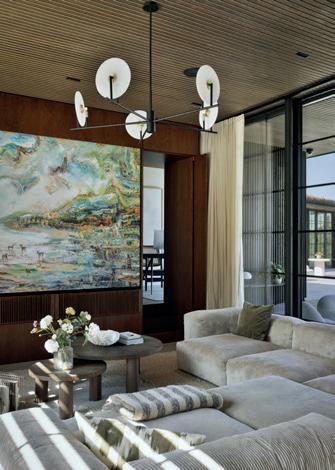
soulful environments that resonate with the lifestyle and ambitions that our clients aspire to.”
Educated in architecture and interior design at schools in Stockholm and New York, Ramirez also spent several years in Japan as a result of a fascination for Japanese architecture and its close relation between built environment and nature. “Diversity and contrasts enhance architecture,” he says. “Studio RAM reflects my background and experience as well as that of the rest of the team, bringing together a wide range of perspectives that enrich the outcome of every project.”
A conversation across eras
For Studio RAM, architecture is about creating environments which enrich the lives of its inhabitants. It is about quality, passion and atmosphere. “At the heart of our work is a commitment to excellence and a belief that great architecture can enrich lives,” reflects the founder. “We approach projects with a respect for con-
V house.Photo: Mikael Lundblad
V house. Photo: Mikael Lundblad
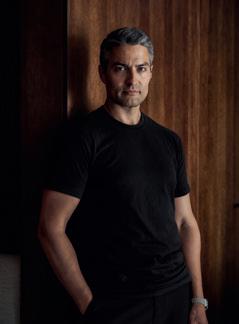
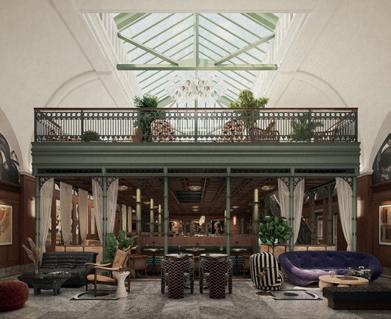
text; aiming to create spaces that not only meet the needs of today, but stand the test of time while reflecting and cultivating the unique lifestyles and tastes of our clients.”
In Uppsala, a beautiful late 19th century building overlooking the main city square is undergoing a transformation into an elegant coworking space with offices, meeting rooms, lounges, conference and event spaces, a cinema, a gym and a podcasting studio. The existing interior featured two distinct design schemes – the original by architect Ture Stenberg, and the style from the late 1950s when the building was renovated by architect Peter Celsing. Set to open in February next year, the Bank Palace is a project with a deeply rooted concept.
“While making sure to pay respect to both of these eras, we’re adding another layer of sophistication to the interiors and gracing the spaces with the finest vintage eclectic furnishing, art and décor,” says Ramirez. “This is a project where no detail has been left to chance – it’s a testament
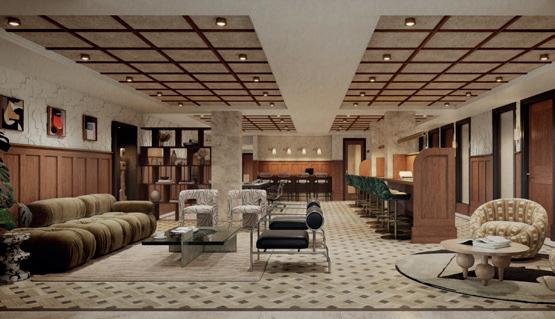
to our vision that commercial and hospitality interiors are often as much about storytelling as they are about aesthetics, granting an opportunity for the inhabitant to escape the everyday – to dream and to feel inspired.”
Between nature and man-made Similarly, private villas leave room for creative ideas, means Ramirez. An example is the V house, situated on a beautiful waterfront plot just outside Stockholm. With humility and elegance as guiding principles, the design reflects the geography of the plot and lessens the perceived height of the two storey building, allowing it to blend in harmoniously with its surroundings.
Another standout villa is the HM house, resting majestically atop a steep hill overlooking the Stockholm archipelago. Here, all effort has been made to create a sense of international refinement without losing touch with the surroundings. The house was made to blend in rather than to stand out, and despite the
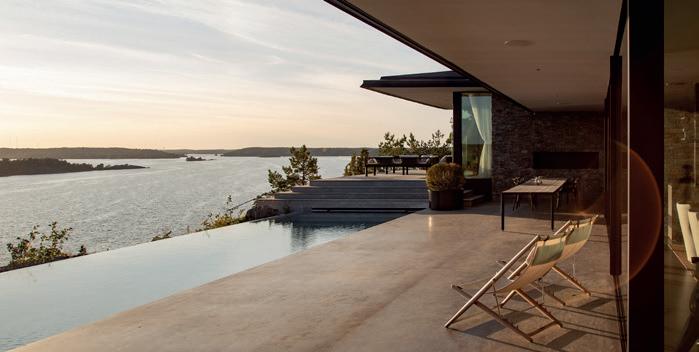
large glass partitions the house appears almost invisible in the landscape.
“When we design a house, we don’t just consider the building itself, but equally important is how it relates to its surroundings,” says the architect. “Even small gestures, such as a courtyard featuring a cherry tree and bushes that nestle in between houses, can do wonders for a harmonious setting between nature and the man-made.”
The human side of architecture
In an era of digital presence and AI, physical places will become even more important, and people will expect more from them, believes Ramirez. Good architecture builds the experience dynamically, all the way from its methodology to the heart of the house. The transition between different spatial features, materials, textures, lights and acoustics all fundamentally affect how we experience it.
“When designing a house, we build a story which starts before the approach and develops as you venture past the entry – all the way to the heart of the house,” adds the architect. “The different parts of the house can be seen as chapters in a book, with different features and tonalities that contribute to the overall experience. A great house, like any great literary work of art, is dynamic in such a way that it evokes an emotional response, and leaves no one untouched.”
www.studioram.se
Facebook: Studio RAM
Instagram: @studioram
Bank palace. Photo: Studio RAM
Bank palace. Photo: Studio RAM
HM house. Photo: Studio RAM
Ariel Ramirez,founder and CEO. Photo: Erik Lefvander
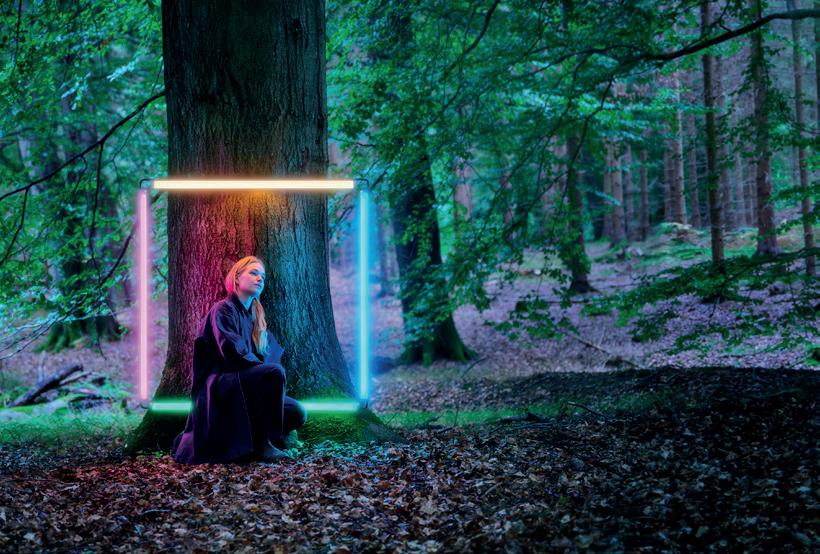
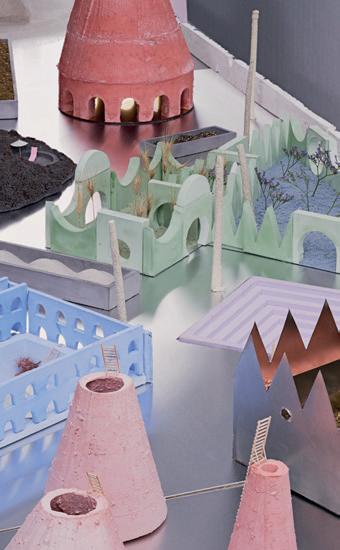
Rethinking our place in nature
As cities grow and the demand for space reshapes our landscapes, nature is pushed to the edges. What would it mean to design a future where both could flourish together?
By Danish Architecture Center
Denmark is one of the world’s most heavily cultivated countries; only small pockets of wild nature remain. Meanwhile, demand for land is rising – for energy, housing, and infrastructure. How should we shape our landscapes when every piece of land is in demand? Should we pause construction and return areas to the wild, or build denser cities to protect what lies beyond?
With cities spreading and landscapes constantly shifting, the boundary between people and the natural world is becoming ever more blurred. Age of Nature, a new exhibition at the Danish Architecture Center (DAC) in Copenhagen, invites us to imagine futures where architecture becomes a meeting ground – a place where humans and nature live side by side.
The exhibition suggests that such questions need more than technical answers. They call for a new way of seeing – a rec-
ognition that we are not separate from nature, but part of it. To protect biodiversity, we may need to view nature not only as a resource, but as a partner and a value in itself.
Visitors will encounter works that give shape to these ideas. Danish artist Rune Bosse’s Lung Trees are wrapped in plastic and kept alive by light and machines –a haunting image of a world where ecosystems can no longer breathe without our help. Studio Ossidiana presents Amsterdam Allegories, a vision of 21
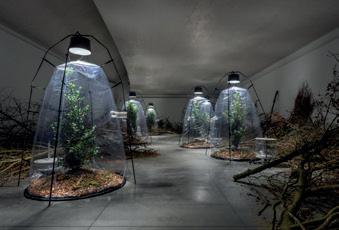
floating islands where humans, plants, and animals share space, each island a small universe of life.
With poetic installations and bold visions, Age of Nature invites us to imagine how architecture might help us, not just to survive alongside nature but to truly live within it
Age of Nature
6 October 2025 – 17 May 2026
Danish Architecture Center (DAC), Bryghuspladsen 10, Copenhagen
Opening hours: 10am to 6pm daily, Mondays and Thursdays until 9pm. www.dac.dk
Danish Architecture Center (DAC) is located by the waterfront in Copenhagen’s Cultural District – at the very heart of the city. Exhibitions at DAC celebrate the history of Danish architecture and highlight ideas, trends, and visions shaping a sustainable future. DAC engages people in architecture – to create change.
Amsterdam Allegories by Studio Ossidiana. Photo: Kyoungtae Kim.
Age of Nature, a new exhibition at the Danish Architecture Center (DAC) in Copenhagen, opens 6 October, 2025. Photo courtesy by Danish Architecture Center & Anders Sune Berg.
Danish artist Rune Bosse’s Lung Trees. Photo courtesy David Stjernholm
Right next to Odense railway station is the Danish Railway Museum – a living museum filled with trains, stories and experiences for both children and adults. Here you can explore historic locomotives and carriages, take a ride on the mini train and learn how the railway has shaped Denmark.
The museum is housed in a authentic engine shed and features atmospheric exhibitions, fun activities and plenty of space for curiosity and play. It is easy to find – just a few minutes’ walk from Odense Railway Station.
Open every day all year round.
The Danish Railway Museum –Unforgettable experiences in the heart of Odense
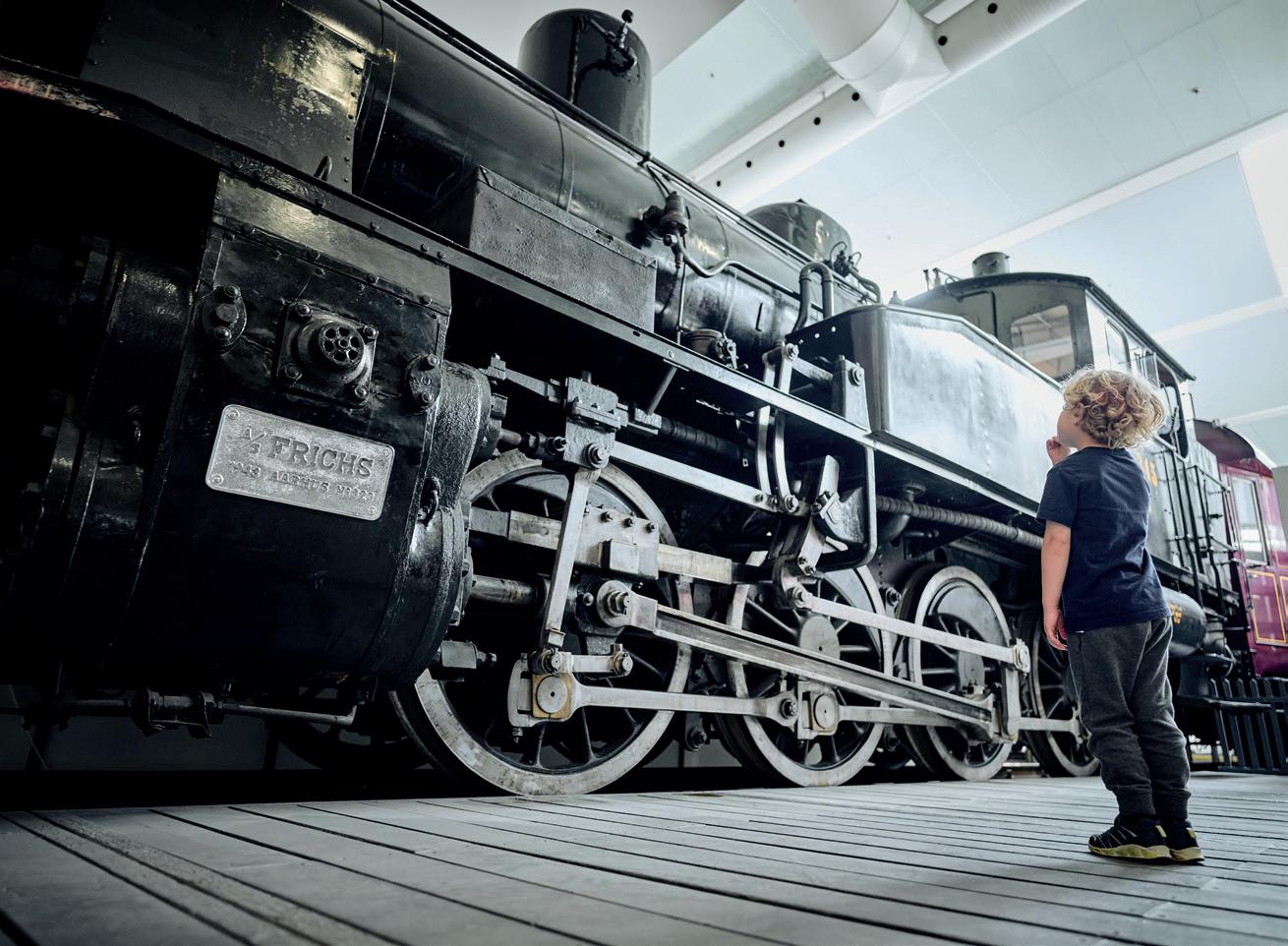
jernbanemuseet.dk
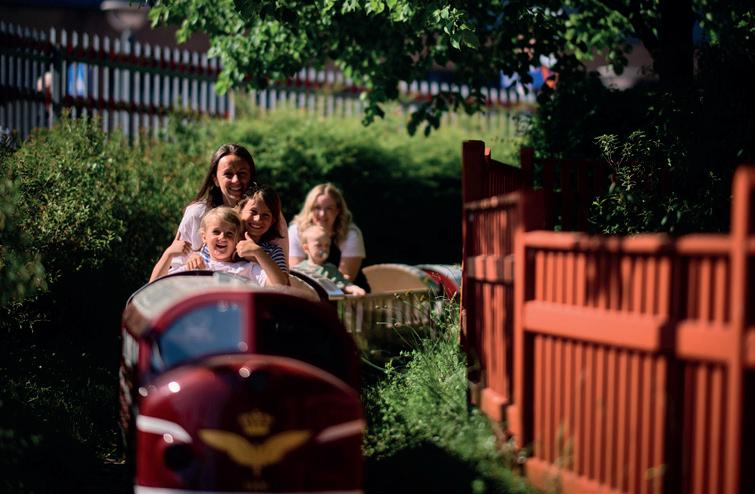
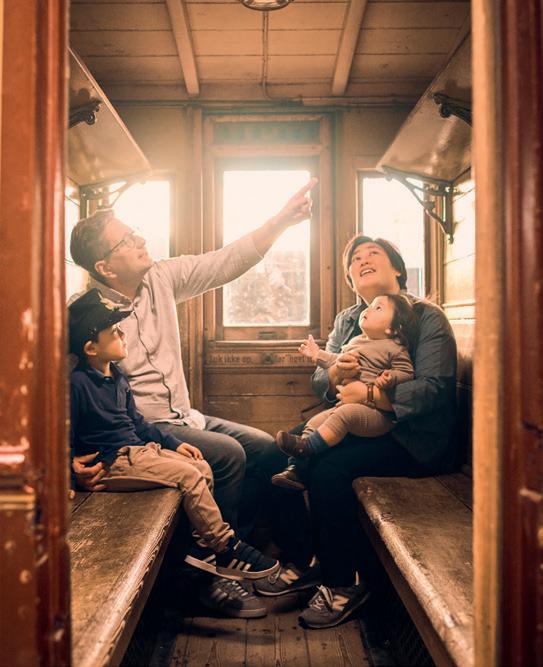
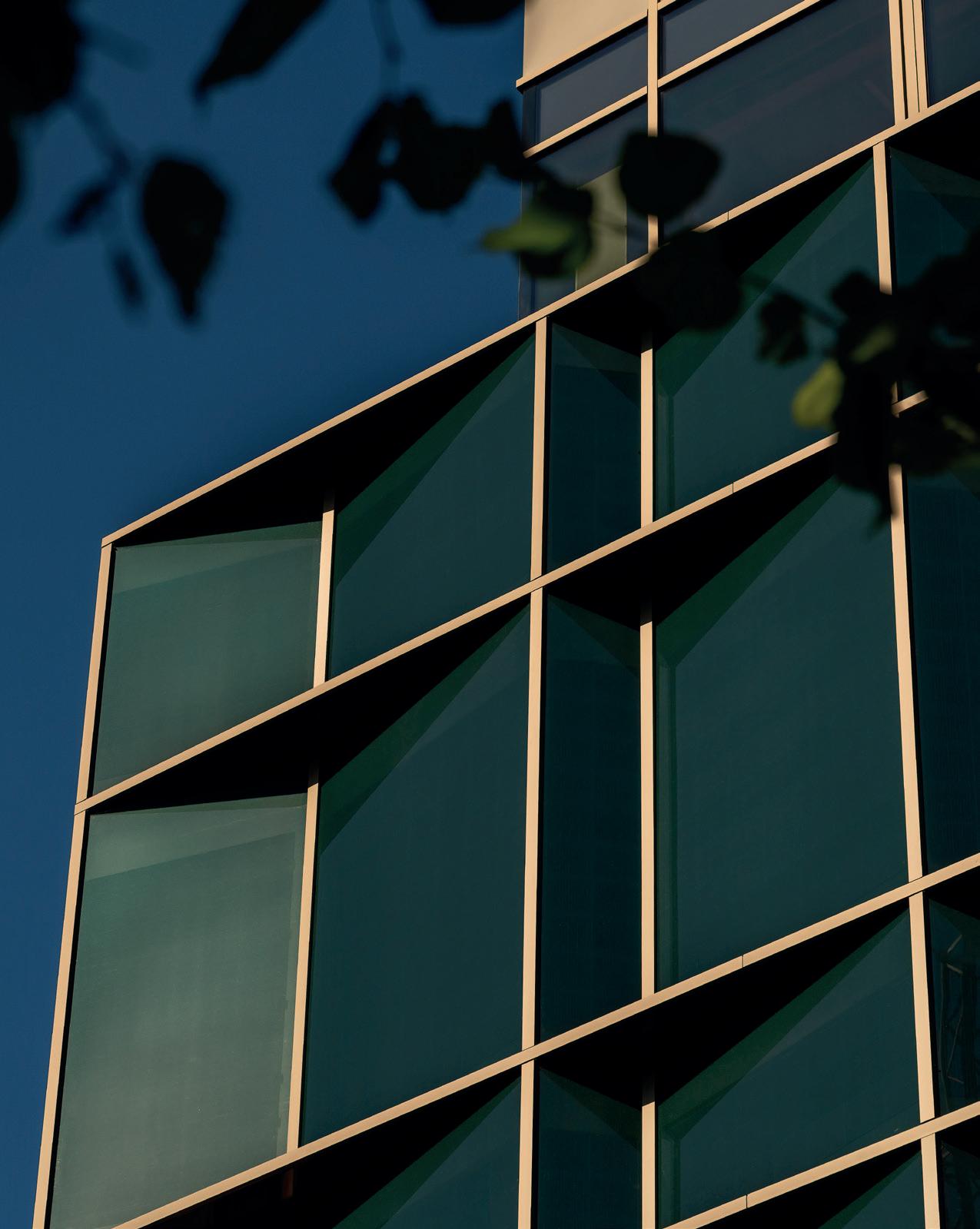
Stavanger Town Hall.
Photo: Claus Skålevik
Solar facades –ready to shine
A facade that not only looks beautiful and lasts for generations, but also generates clean energy for the building it adorns – it almost sounds like a utopian dream. But with a decade of growth and successful projects all around the globe, SolarLab has proven that it is not. Providing complete systems, the Danish solar facade specialist turns facades into power stations in all kinds of environments, from the Caribbean glare to the Arctic cold.
By Signe Hansen
With 12,000 individually tilted solar modules supplying up to 50 per cent of the school’s electricity needs, Copenhagen International School has become a landmark in sustainable architecture. Completed in 2016, the project also led directly to the founding of SolarLab.
At the time, architect and industrial designer Anders Smith was part of the foundation that built Copenhagen International School, and he envisioned a solar facade for the project; the only problem was that nobody made one. A minor obstacle that was soon overcome. “I figured out how to do it, convinced the architect, and teamed up with two colleagues with decades of PV know-how – that’s how we founded SolarLab,” recalls Smith, now the company’s CEO.
The completed school, still the world’s largest facade-integrated PV installation, set the tone for everything that followed.
Visitors came to see, architects came to ask. “What you get is a high-quality glass facade that lasts for generations – colours that don’t fade, and we deliver the whole thing as a complete system. Nobody else really does that,” says Smith.
Since its origin, the company’s systems have spread to new and old buildings across the world: colleges in Canada, landmark buildings in Norway and Denmark, Carparks in the US and commissions as far as Japan and the Caribbean.
Not just a pretty facade
While Solarlab’s facades are both stunning and highly unique, part of their appeal is how little fuss the glass-covered panels make. “It lasts for generations and there are no seals to replace, so it’s essentially maintenance-free,” says Smith. “Panel-level monitoring and full documentation take the anxiety out of large arrays: if a panel misbehaves, the system
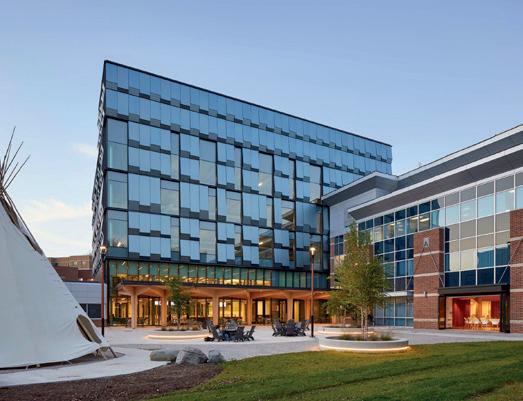
isolates it, tells you which one it is, and keeps the rest working.”
It is low risk by design because SolarLab supplies the cladding, the electrics, and the monitoring as one whole. This means that solar cladding is no longer just for the innovative and visionary architects but also for pragmatic developers, data centres, carparks and factories, where the numbers provide hard facts as to the sensibility of fitting or retrofitting a solar cladding. “In our online tools, we can see developers running the calculations for large estates with hundreds of homes,” explains Smith. “The scale is growing: projects are bigger, and there are more of them. Interest is also moving up the food chain to the people who actually control the budgets, not just the designers.”
Partly, that shift is driven by uncertainty in global energy markets; volatile prices make on-site generation more relevant. Moreover, when the facade replaces conventional cladding with something that also lowers costs, it becomes attractive to portfolio owners who feel the operational bill every month. “Hotels are a good example as they consume a lot of power during the day. If they can bring that down –and get a facade that doesn’t need repainting every few years yet still looks
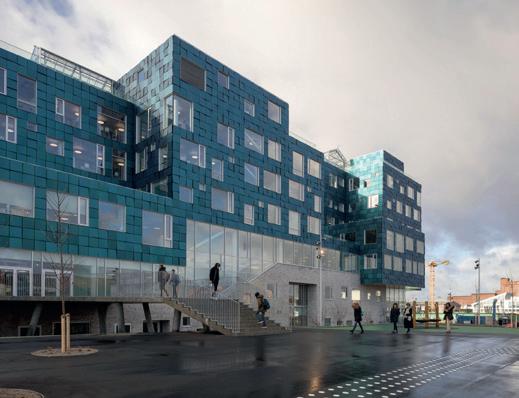
Fanshawe College. Photo: Tom Arban @SolarLab.Global
CIS, Copenhagen International School ‒Copenhagen, Denmark. Photo: Adam Mørk
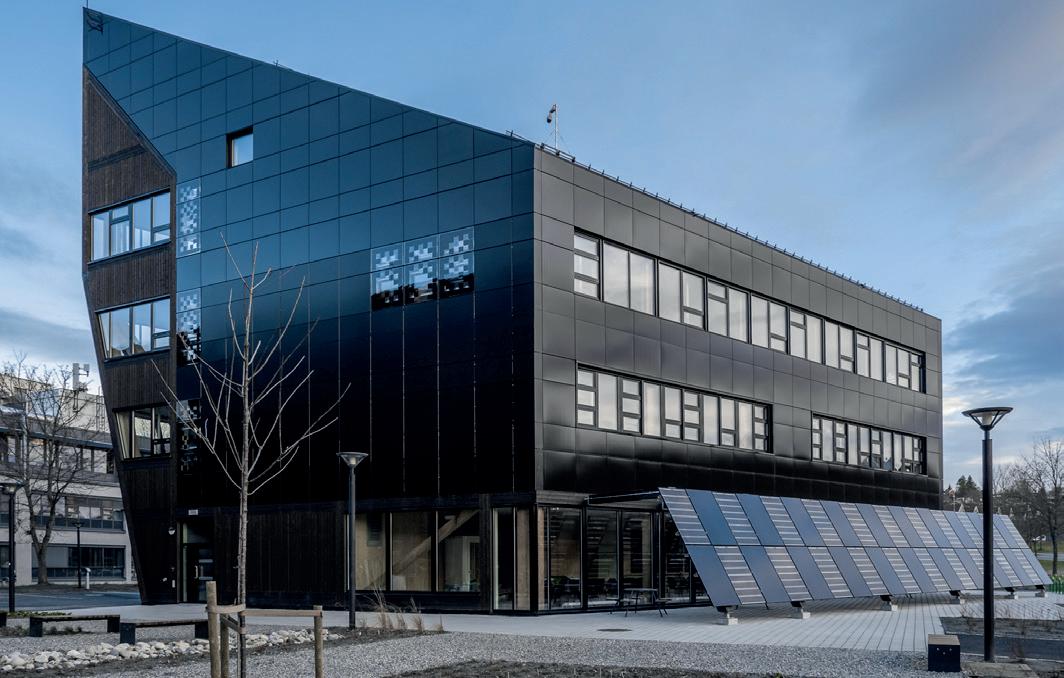
good – the operational benefits are huge,” Smith points out.
The beauty of pragmatism
On top of its pragmatic appeal, the facade offers a myriad of architectural opportunities and unique aesthetics. Rain screen, curtain wall, or louvres — all arrive with a language of finishes and textures: satin that softly diffuses light, crystal that reads as spandrel, deep structures that feel like split stone or charred timber. Metallic-like iridescence, ceramic-like matt hues, printed frits where patterns matter.
Smith is blunt about the priority: “For us, it’s about the architecture. We don’t dictate size, shape or look – the architects do, and we expand, not limit, the choices. We can make panels look like metal or ceramic; we can give them texture – even a charred-wood feel – while keeping performance high.”
Meanwhile, even the aesthetic qualities of the panels are rooted in sound pragmatism. Because the colour is a structural effect created by nano-thin
layers on the rear, it does not fade, and a replacement panel decades from now will match like for like. Moreover, since the colour is not a pigment in the glass, the glass stays clean for recycling. At the end-of-life, it goes back into the stream as ultra-clear cullet rather than contaminated spandrel; in practice, panels yield around 95–96 per cent material recovery, and the marine-grade aluminium frames are fully recyclable, too. The result is a facade designed for decades that will not create a waste problem when it finally comes down.
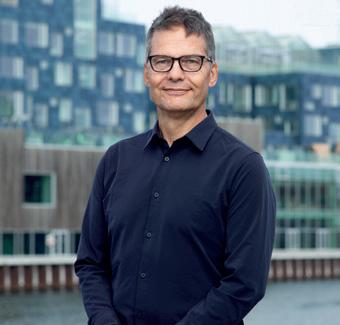
Financially sensible
With projects all over the world, SolarLab has proven that solar cladding provides a financially sensible alternative to traditional facades in all sorts of climates, not just those where the sun is blazing 12 months a year.
In many projects, SolarLab’s facade simply replaces the cladding line in the budget. “At Copenhagen International School, we eliminated a cladding that we would have paid for anyway and replaced it with one that will pay for itself –and power the building,” says Smith. “Yes, the upfront spend is real; the downstream spend is smaller. You buy less energy for decades, and the facade keeps working.”
And while some projects require hundreds of unique panels, others, such as large parking structures in the U.S., might specify thousands of identical ones. SolarLab’s production is set up for both, and has even delivered a system for the blazing cold of the Arctic. “In the Arctic, you can have full sun at –50°C. Aluminium and
Architect and industrial designer Anders Smith, founder and CEO of SolarLab.
ZEB Lab - Trondheim, Norway.
Photo: Nicola Lolli
glass move differently; thermal stress can wreck things. We design for those extremes – anywhere in the world,” Smith explains.
Taking on tomorrow’s challenge
When it comes to solar energy, the pressure is not invention; it is adoption. “We need to produce more solar energy where it’s needed and without consuming more land,” says Smith. That urgency has tracked SolarLab’s own trajectory: from a single landmark facade to dozens of projects, a 50-strong team and a Danish production base that has stepped through ever-larger facilities, with a growing network of international distributors.
The next wave is already lining up – including in the US, where cities such as New York, which has an ambition of reaching one million CO₂-neutral buildings by 2027, provide a dense urban environment where onsite energy generation and solar cladding simply make sense.
To this, SolarLab provides an answer that is disarmingly simple: beautiful buildings
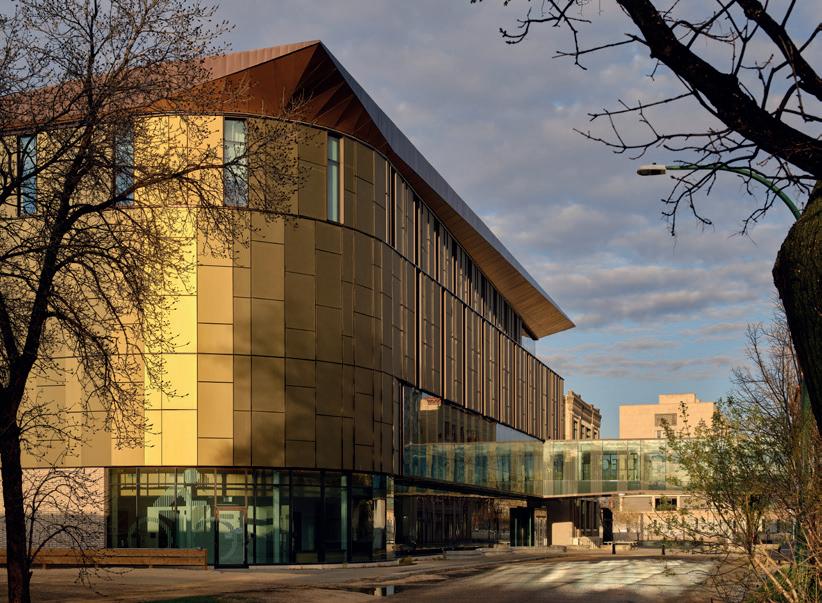
that power themselves. “Make the energy on site,” Smith says. “Do it with a facade that people want to look at for fifty years –and one that quietly pays its way.”
www.solarlab.global
Facebook: solarlab.dk
Instagram: @solarlab.global
LinkedIn: solarlab-dk
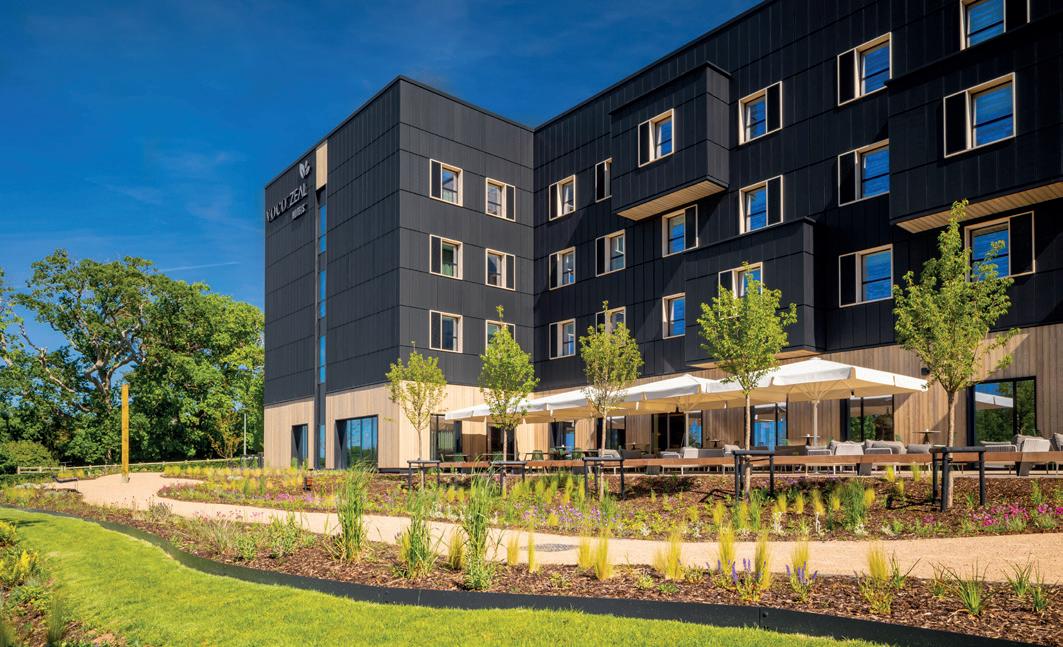
Red River College Innovation Center - Winnipeg, Manitoba, Canada. Photo: doublespacephoto
Zeal Hotel. Photo: Nick Callaghan @ SolarLab.global
Five decades of people-centred design
Founded in Southern Jutland in 1978, A78 Arkitekter has decades to refine its approach – starting with what is already there and complementing that with pragmatism and beauty. From renovations and restorations to new homes, business and tourism, the studio favours local materials, people-centred design, and sound sustainability – the kind that looks to nature, short supply chains and long lifespans, rather than quick fixes.
By Signe Hansen | Photos: A78 Arkitekter
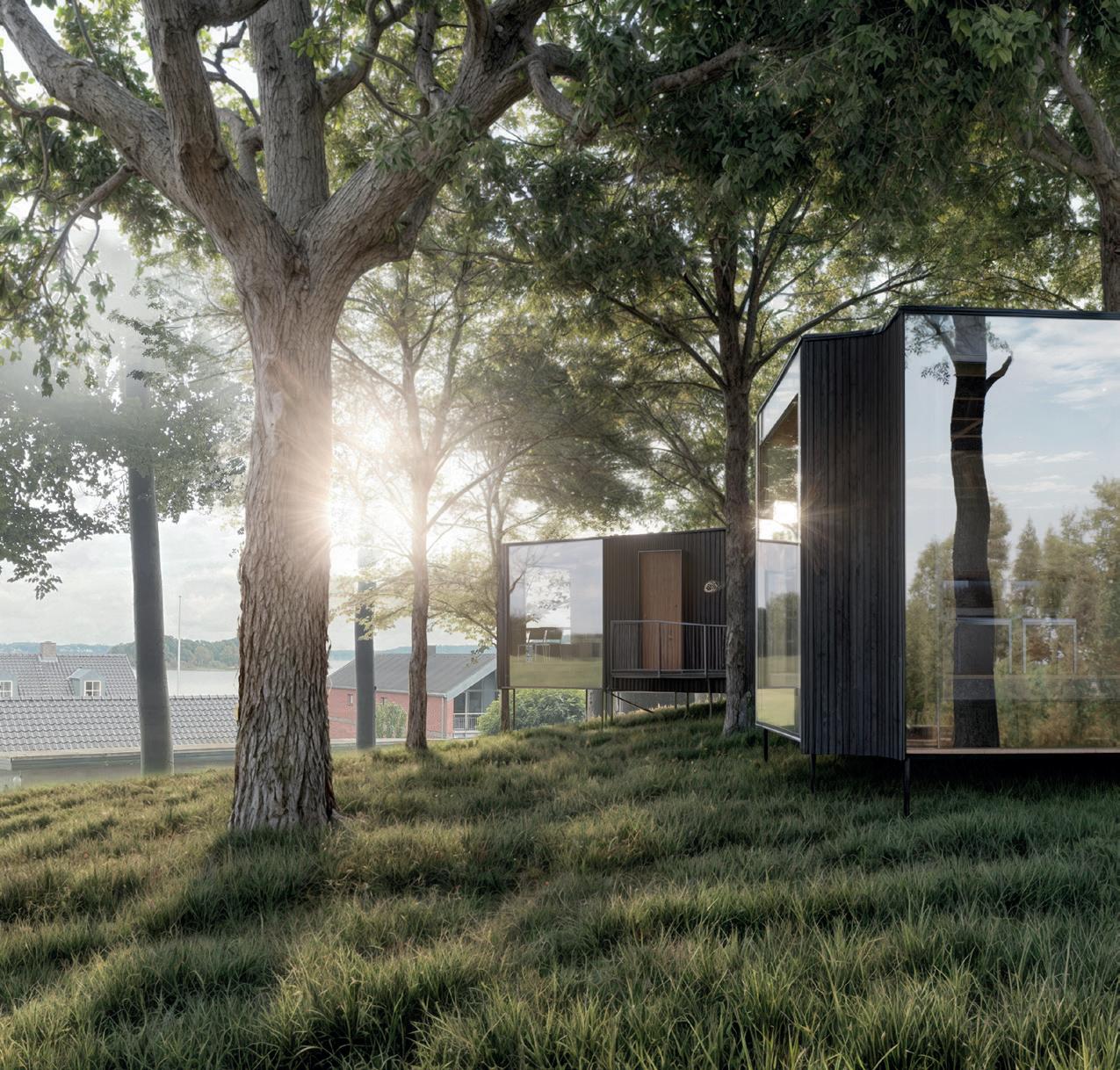
Like its team members, A78’s history is disarmingly down-to-earth. The name was chosen for a good place in the phone book – a pragmatic approach to client service that still permeates the studio.
“We’ve always worked in that space between architecture and budget – getting the buildability, the numbers and the design to add up,” says Thorkild Hansen, partner and director. Over nearly five
decades, the studio has tackled a broad sweep of work – housing and one-off homes, logistics and offices, restorations and transformations – for private clients, housing associations and developers across Denmark. “We don’t just draw,” Hansen adds. “We stay with the build.”
Recent years have brought steady growth and a wider footprint, with roots in Aaben-
raa and an office in Aarhus. The practice remains small enough to be personal — a team of roughly a dozen architects and building constructors — and broad enough to handle complex briefs across renovations, new build, business and tourism.
Bricks, history and a Michelin neighbour
Two recent projects sit within walking distance of each other on the Flensburg
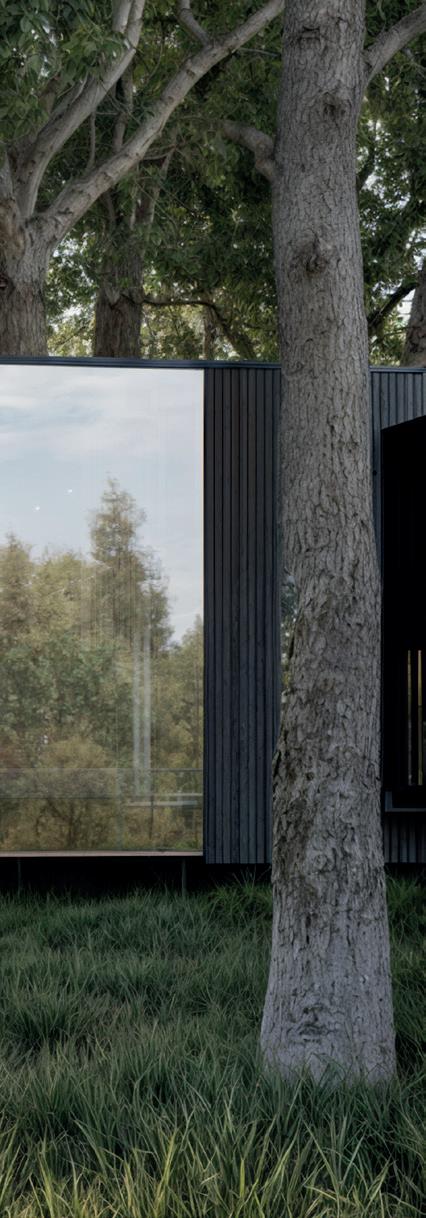
Fjord: a newly built yoga studio and the careful renovation of Pearl by Paul Proffitt, a restaurant that has since earned a Michelin star.
The yoga studio pairs a modest, secondary-building typology with a refined material language. “It’s a good fusion of something existing and something new. We chose a local brick, Petersen Tegl, so
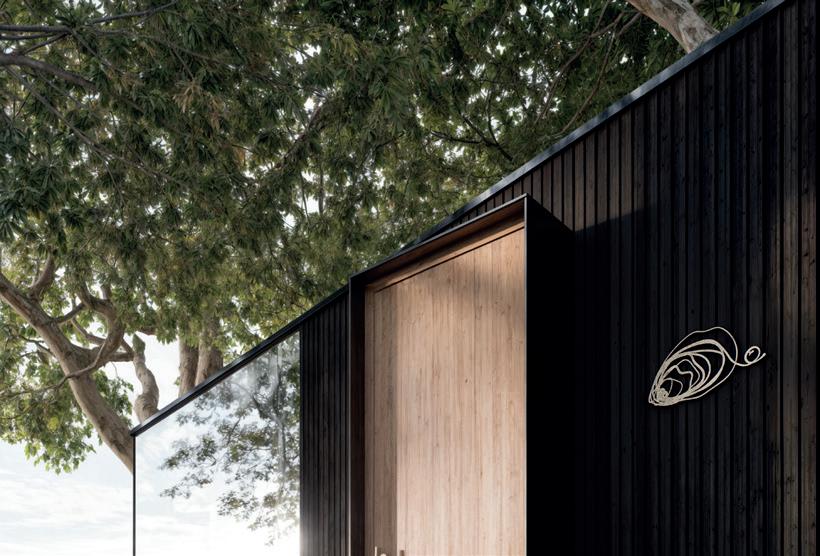
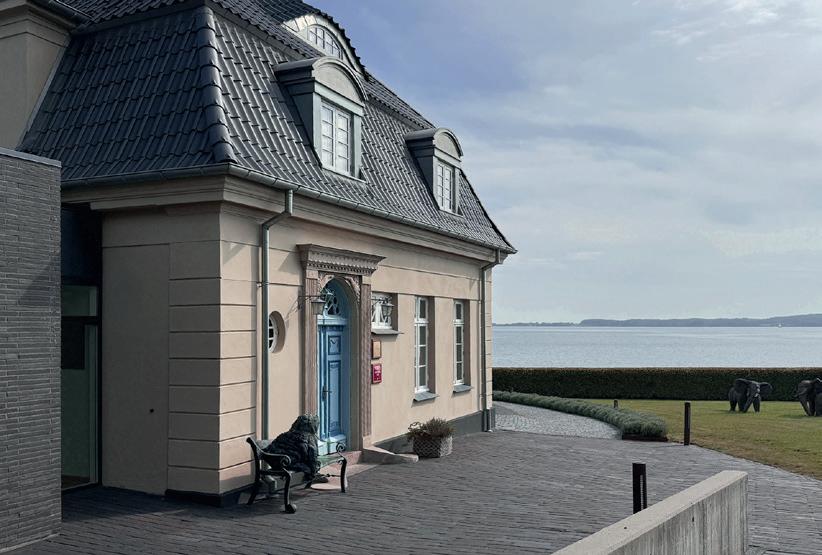
the new volume speaks to the old house without shouting,” explains Hansen. “The design follows the architecture it sits beside: a former merchant’s villa on the coast, so we looked at how outbuildings have historically appeared in this coastal setting. It’s historically anchored, but never pastiche – you’re in no doubt it’s an addition, quietly contemporary and restrained in form and material.”
Indeed, the building beautifully demonstrates some of the core values of A78: start with what stands, choose local materials, create a building that belongs in its environment, and let colour, texture and subtle design features give the building its own unique DNA.
The Pearl restaurant also aptly illustrates this ethos. As the old villa housing
Tiny forest houses; placed among the trees, the small units are designed to merge architecture and nature.
Michelin star restaurant Pearl by Paul Proffitt, with its carefully restored exterior and a renewed terrace facing the fjord.
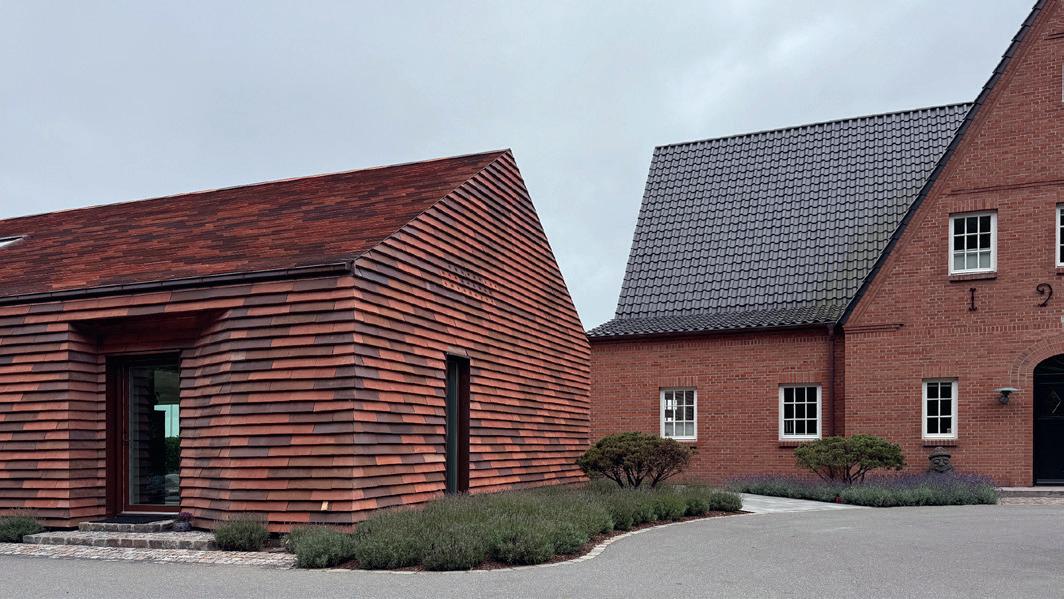
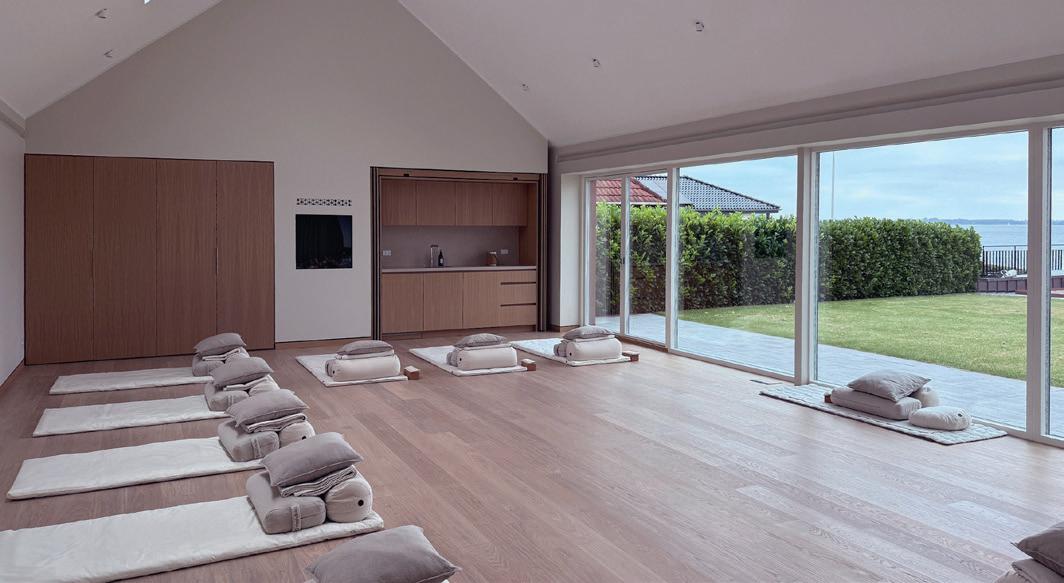
the restaurant is worthy of preservation, A78 focused on highlighting and renewing the existing exterior characteristics with a renewed facade and roof, and a larger terrace and outside dining area. Meanwhile, on the inside, craft and atmosphere are in focus with bespoke
interior moments – a bar, a wine room, even a concealed door that turns arrival into a small performance.
Tiny houses among the trees
A78’s work also stretches into the landscape. In the woods behind the fjord, the
team is developing small cabins as part of a planned gourmet route along the popular Gendarmstien. The aim is to solve a practical problem for places like Pearl, which has no accommodation for guests, and to create an extra experience with a hiking route that offers beautiful scenery
Yoga studio – a quiet brick annexe, tuned to the proportions of the historic villa.
and day-walks between unique culinary experiences and an equally unique type of accommodation.
“The idea is that you walk 25–30 kilometres, have your bag carried like on the Camino [de Santiago], eat really well, and step straight into a quiet, nature-first overnight,” says Hansen and adds: “We’re working with sustainable materials, and the aim is to place the units lightly in the forest.” The cabins answer a practical need – overnight stays near the restaurant – and a broader ambition to bring architecture and nature closer together without overbuilding.
Because the cabins will be placed within areas of coastal protection and preserved forest, the studio is working within the national pilot for coastal projects.
Five decades of designing for people
Five decades on, A78 still balances the same three levers: pragmatism, respect for the existing environment – whether built or natural – and subtle aesthetic signatures. The phone book practicality remains – budget discipline, buildability, and local roots – and so does the appetite to try new forms, whether that is a discreet brick annex or a treetop cabin on a forest edge.
www.a78.dk
Facebook: A78 Arkitekter | Aabenraa Instagram: @a78arkitekter
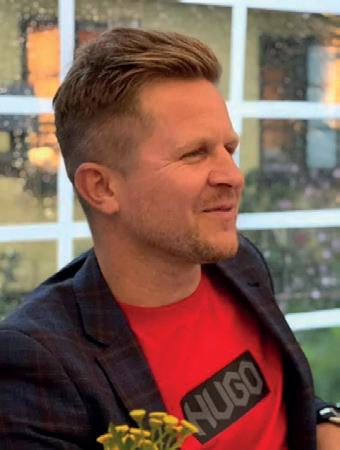
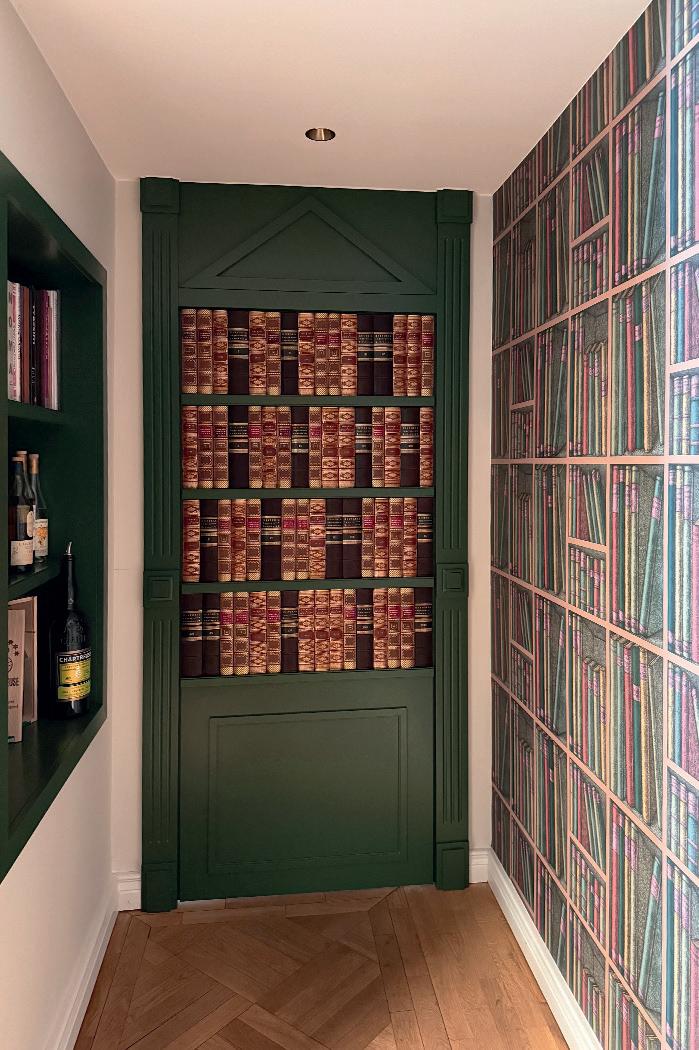
A78 Arkitekter
• Founded: 1978 (Southern Jutland, Denmark).
• Roots and offices: Aabenraa (roots); Aarhus (office). Works nationwide.
• Team size: ~12 architects and building constructors.
• Sectors: Housing (new build and one-off homes), restoration and renovation, commercial/office, logistics and light industry, hospitality/tourism; urban and landscape concepts.
• Approach: Balance architecture, budget and buildability; preference for local materials and low-impact solutions; renovation before replacement.
Thorkild Hansen, partner and director at A78.
Inside the restaurant, guests are met by a number of bespoke interior moments: bar, wine room, and a concealed door framing arrival.
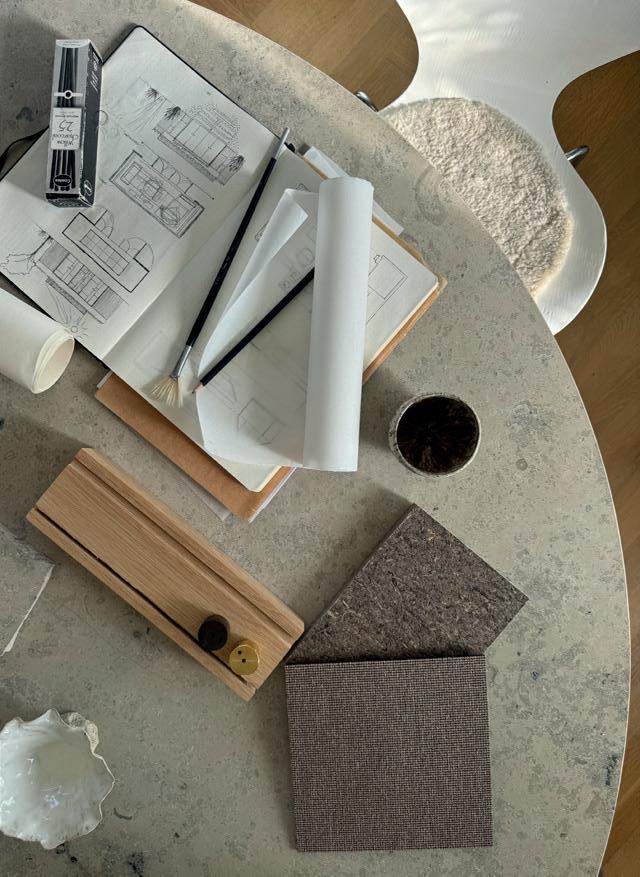
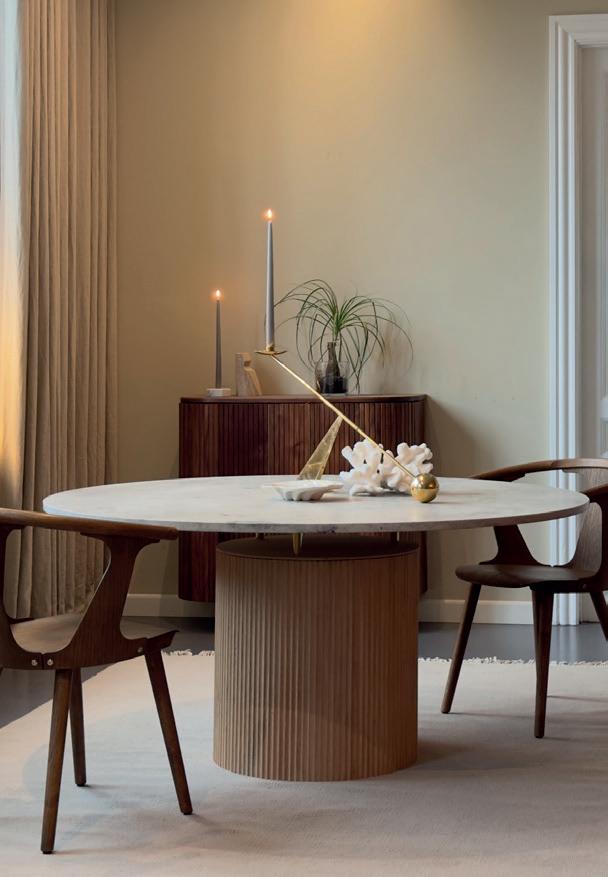
Where architecture, light and human experience meet
From tailored interiors for large companies and private homes to light installations at Copenhagen Light Festival, Amanda Søes Studio moves seamlessly between scales. At the heart of every project lies the human experience – articulated through light, materials and atmosphere.
By Heidi Kokborg | Photos: Trine Ravnborg
Founded by Danish designer Amanda Søes, the studio works in the space where architecture, design, and atmosphere meet. With a background in both interior architecture and lighting design, Søes brings a holistic perspective. “For me, the room, the light, and the people are inseparable. It’s about creating spaces that not only look good but feel good to be in. It always starts with the people who will use
the space. I want to understand how they live, work, and feel, and then shape an environment that reflects that,” tells Søes.
Shaping the atmosphere with light Søes is especially attuned to the role of light in shaping the atmosphere. Rather than selecting lamps for their looks alone, she considers how layers of light influence comfort, mood, and percep-
tion. “Light affects us more than we think. The colour, the direction, and the rhythm of light can make a room feel safe, energising, or calming,” she explains. Her approach combines interior architecture with architectural lighting design, ensuring that light is not just an accessory, but a central element in the experience of a space. One of her projects for Montana Furniture illustrates this sensitivity. In their showroom, she designed lighting that enhances the richness of colours, materials, and textures, creating a space where every surface feels alive.
For one of her large corporate clients Novo Nordisk, her task was to ensure
that the architectural expression across both indoor and outdoor environments is consistent, from facades and acoustics to lighting solutions that support both function and well-being. This project demands both technical precision and aesthetic judgment, as every choice affects how employees interact with their environment. “You want the experience of moving through the building to feel natural and comfortable, whether you’re outside on the grounds or inside in a meeting room.”
Amanda Søes Studio also works on projects for pension companies such as Danica Ejendomme, where she crafts personalised design solutions. In private homes, the challenge is more intimate: ensuring that rooms feel personal and lived-in, yet still thoughtful in their design. “Light and materials can help create that atmosphere of retreat,” Søes says.
Public work has also entered the portfolio. Louis Poulsen hired her for Copenhagen Light Festival, which was an exhibition open to the public at Louis Poulsen. The installations Søes created for the project invited people to experience light in playful, sensory ways, highlighting how design can touch emotions as well as function.
Designing for people and places
Whether working for a corporate or private client, Søes begins with the same
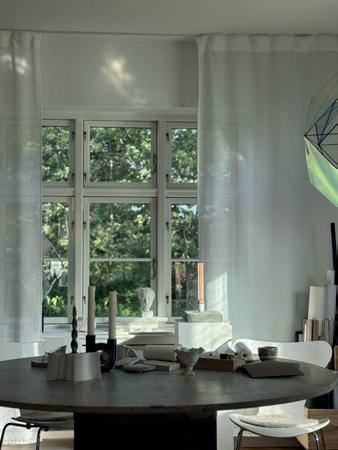
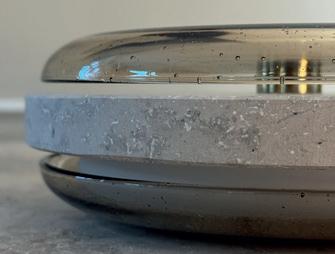
process: listening. She studies how people inhabit their spaces, how they use the space, and how they want to feel. From this analysis, she shapes environments where materials, furniture, and light coexist in harmony. This attention to detail often leads to bespoke design solutions.
Several of her furniture pieces have emerged directly from her projects. One round table was designed specifically to encourage dialogue, its proportions and materials carefully chosen to feel both robust and inviting. Over time, that single piece evolved into a full collection, now available through her website. The tables are designed with longevity in mind and are objects to be inherited through generations.
Her material choices also tell stories. She frequently reuses or adapts existing materials, transforming them into new design elements. A wall lamp crafted from recycled stone and glass materials to beautifully match the flooring for a
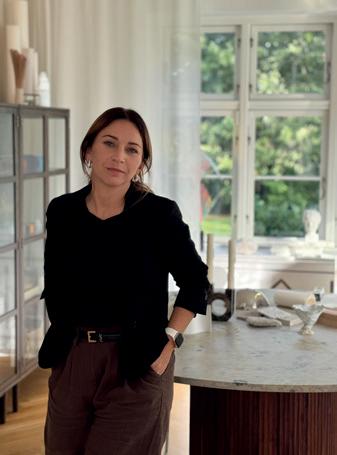
project, carrying forward both the tactile qualities of the original material and a sense of narrative continuity. “For me, design is never just about appearances. It’s a deepening of the relationship between heart, function, tactility and aesthetics, embedding meaning and connection into the everyday,” Søes says.
A design philosophy of care
What unites these diverse projects is an ethos of care: for materials, for craft, and for people’s everyday experiences. To Søes, good design is not about following fleeting trends but about creating pieces and spaces that remain relevant over time. “I want to create pieces and spaces that last, that people feel connected to, and that can be part of their lives for many years,” she says.
At its core, Amanda Søes Studio is about more than solving spatial challenges. It is about creating atmospheres that enrich daily life, whether in a commercial construction, a private home, or a public installation. By bringing light, material, and human needs into balance, Søes crafts environments that feel both thoughtful and timeless. “Design is not just about how something looks. It’s about how it feels to be in it, and how it can improve your quality of life.”
www.amandasoesstudio.dk
Facebook: Amanda Søes Studio
Instagram: @amandasoesstudio
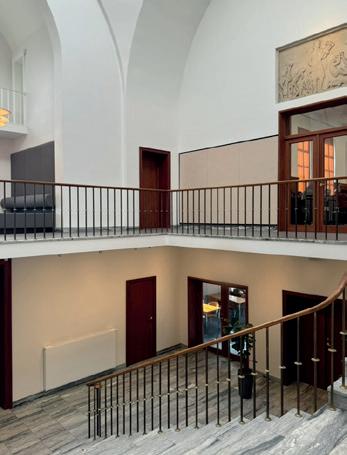
Photo: Amanda Søes Studio
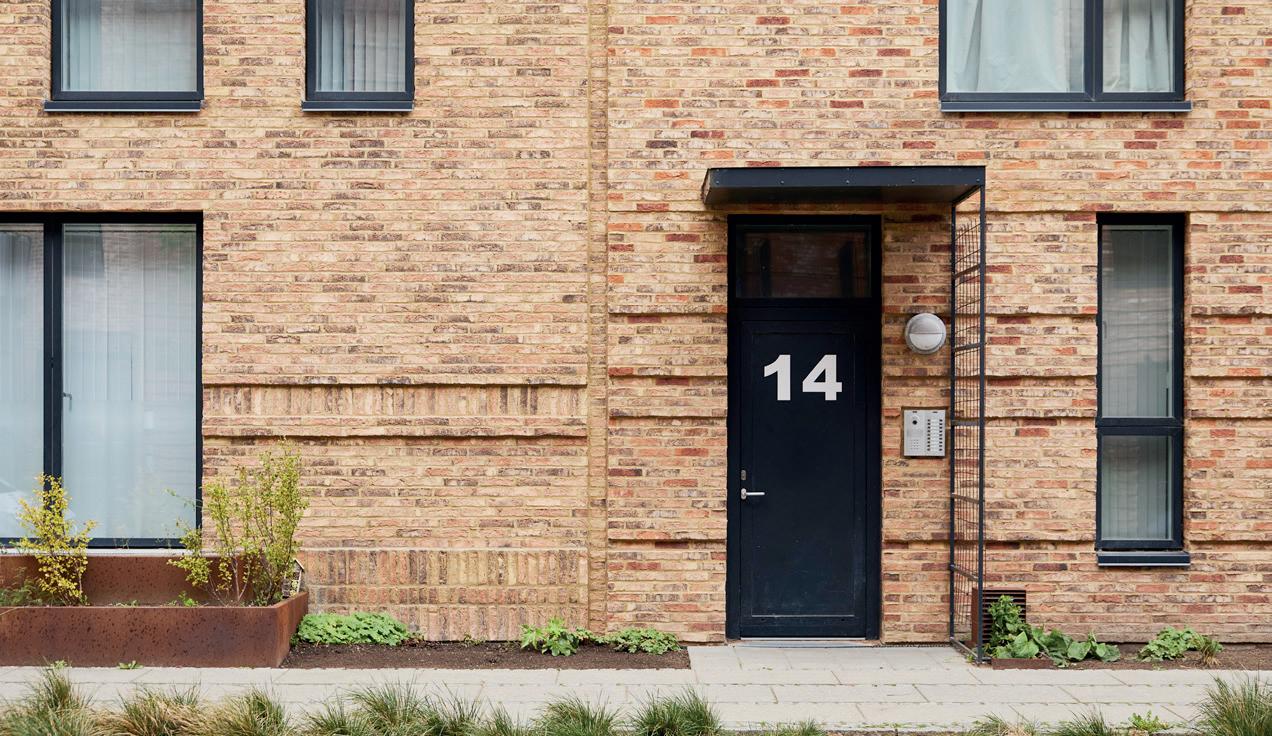
Shaping the future in brick: the story of Matzen Tegl
For more than 275 years, Matzen Tegl has fired bricks in Egernsund. Today, eighthgeneration owner Peter Matzen still tends the kilns himself, carrying forward a craft built on durability, flexibility and close dialogue with architects. Scan Magazine talks to the brick-burner about history, green ambitions and new visions.
By Signe Hansen | Photos: Matzen tegl
In the words of his wife, CBO Elsebeth Dresler Matzen says: “At the end of the workday, Peter is always the one with the most dirt on his clothes – the kilns are his.” Smiling, her husband adds: “I’m not so good with computers. But perhaps I’m the last real brick-burner in our line.”
Do not be fooled into thinking that means the 63-year-old is not a man of the future. As the eighth generation, Matzen took over in 2006 after years alongside his father. Since then, he has modernised the business, expanded its international reach – and kept a hands-on grip on the kilns. He is now tackling his era’s defin-
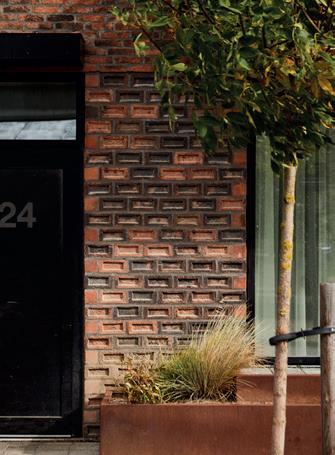
ing task: a genuinely green transition –steep cuts in emissions on the way to near CO₂-neutrality.
A craft of generations
Since the late 18th century, the Matzen family has been shaping clay into lasting architecture. “In my father’s time, when you talked about bricks, it was always only red or yellow, but we have continued to push further to explore new nuances. If we don’t use what clay can do – what the firing process can bring out – then brick will not survive as a material,” he stresses.
Matzen Tegl still works with red and yellow clays deposited during the last Ice Age, but through firing techniques, variations in oxygen levels, and the use of oxides such as iron, they now produce an extraordinary range of hues and surfaces. The expertise is backed by a philosophy
Today, the conventional rules of brickwork are often broken to achieve a more individual expression. Here, the 3243 Krøyer is laid on edge, with the recess facing outward.
Example of a master blend, different bricks mixed to order, with 3373 Safari, 3601 Indian Summer Light and 3255 Red Shade.
that has carried through the centuries: durability, craftsmanship, and responsiveness. “Our motto is: if it can be made, we will make it,” says Dresler Matzen. “Matzen bricks tell stories and create identity. That is what sets us apart.”
Projects in dialogue
Today, product development is driven as much by architects’ visions as by the company’s own explorations. “Much of our development comes from architects or builders who ask for a specific colour or surface,” Matzen explains. “We work on it, we send samples, and we usually get there. When architect, mortar and brick all do a good job together, you have something that stands for hundreds of years and enriches the city.”
This approach has led to landmark projects such as Krøyers Plads in Copenhagen and Théâtre de Carouge in Switzerland, where tailor-made Matzen bricks became defining elements of the architecture. Demand for individuality is growing, with trends leaning towards structured surfaces, varied bonds, shadow effects, and the slender Flensborg format. For Matzen, the willingness to experiment and adapt is not just service, but survival.
From red to green
No challenge, however, is greater than the green transition. “The biggest task is going from being a black to a green industry,” says Matzen. “We are already well underway, with several projects to reduce energy consumption. Ultimately, we want to capture the CO₂ we emit and become a nearly CO₂-neutral company. We expect to reach that goal within five years.”
Among the initiatives is Project Valgreen, a project supported by EU funds and developed in partnership with researchers from the Danish Technical University and other external experts, aiming to create climate-friendly bricks with a radically reduced footprint. Alongside this, Matzen Tegl already fires as much as possible using biogas, publishes updated EPDs, and is testing new formats with lower embedded carbon.
A passion for bricks
Looking to the future, Peter is clear about his goals: to be recognised as Europe’s most visionary brickmaker, rooted in tradition but open to innovation, and to become the first choice for architects across the continent. But whether there will be a ninth generation of brick makers in his family, he will leave up to fate. “I love creating something that is beautiful and lasting, and being part of history – I burn for bricks,” he says with a laugh before growing serious. “The next generation should only do it if they want to, if they burn for it too. For now, I hope to keep watch over the kilns for another 20 years.”
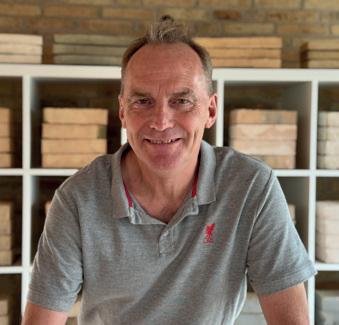
www.matzen-tegl.com
Instagram: @matzentegl
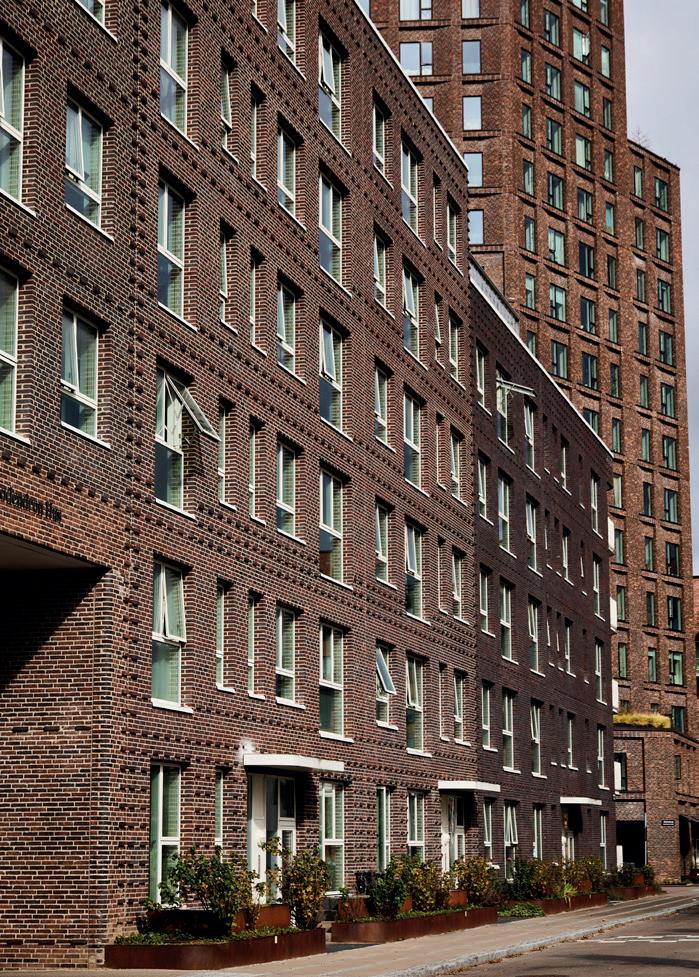
63-year-old Peter Matzen is the eighth generation in his family to head Matzen Tegl.
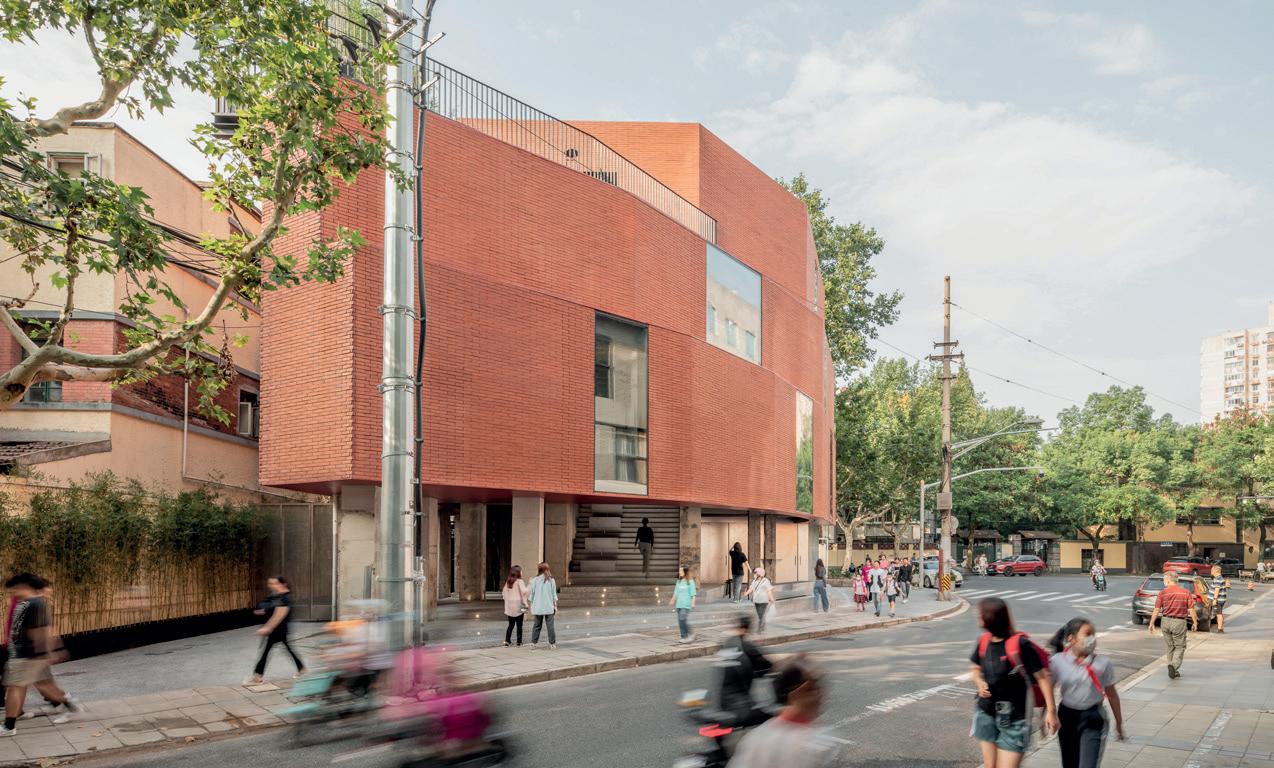
Architecture with positive impact on cities
AIM Architecture is a global design studio with offices in Shanghai, Antwerp, and Chicago. Founded in Shanghai by architects Wendy Saunders and Vincent de Graaf, AIM has grown from Asia to Europe and the US, bringing together a diverse team of designers, urban planners, and strategists.
By Malin Norman
With roots in architecture, interior design, and urban planning, the studio works across scales and cultures – from flagship stores and boutique hotels to cultural venues and urban masterplans. Its mission is to activate streets, spark culture, and create places that strengthen the social fabric of cities.
After many years of shaping cities across Asia, AIM opened its Antwerp office two years ago, reconnecting with Europe and expanding its cross-continental perspective. This international footprint has become central to the studio’s identity, enabling AIM to bring fresh cultural insight and local sensitivity to every project.
Designing across cultures
At AIM, design is always rooted in context. The studio approaches each project with
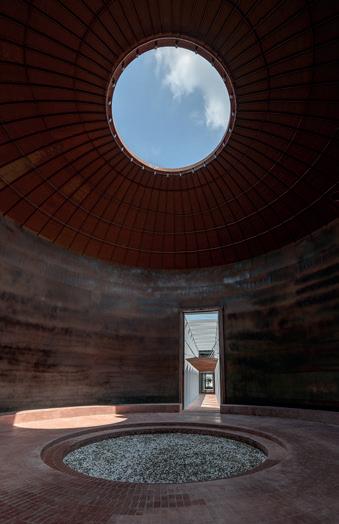
curiosity, spending time to understand the cultural, social, and spatial dynamics of its surroundings. Working across geographies has shaped AIM’s design ethos: it blends global perspectives with local specificity, bringing new ideas while staying deeply connected to place.
This mindset is supported by a multidisciplinary team of architects, interior designers, urban planners, and strategists who collaborate closely across AIM’s offices. Together, they develop spaces that are bold and human-centred – spaces that activate their surroundings and invite people to gather, move, and connect.
“Every project is an opportunity to foster community, to create places that bring people together, spark dialogue, and strengthen the urban fabric,” says Wendy Saunders, co-founder and principal architect. “For us, designing for people is not a tagline, it’s the starting point.”
Futuristic flagship store concept
A project that demonstrates how AIM activates and transforms places into mean-
Cotton Park. Photo: ©Dirk Weiblen
HARMAY Fang.
Photo: ©Dirk Weiblen
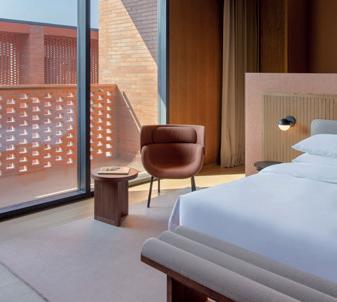
ingful destinations is ZARA in Nanjing, China. Located in Nanjing’s bustling Xinjiekou district, the 37,000-square-foot flagship – the largest ZARA store in Asia –marks a pivotal moment in the fashion brand’s evolution. The project sets a new precedent for retail: immersive, spatially dynamic, and fully woven into the city’s public realm.
More than a retail space, it redefines how fashion interacts with the city. Designed as an extension of Nanjing’s urban landscape, the store creates a natural dialogue with its surroundings. A monumental staircase spills into the street as public seating, blurring the threshold between store and city.
“Together with the redesigned streetscape and entrance plaza, we extended the brand experience beyond the retail floor, welcoming passersby to engage with the store beyond shopping,” says Saunders. “The new design invites public interaction, weaving the rhythms of the street into the store and opening up
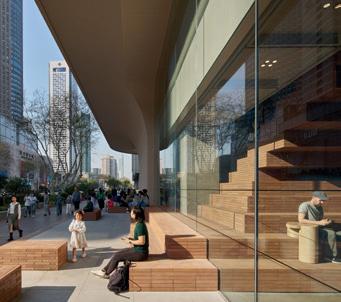
new ways for visitors to engage with the brand.”
Giving back space to the community
In AIM’s ongoing collaboration with the Chinese cosmetics e-tailer HARMAY, the team has taken its community-centric design to the street. HARMAY Fang, Shanghai, completed in 2021, showcases the future of shopping.
In an area where locals have lived for decades and recently mix with a vibrant young tourist crowd, the mission was to bring back customers to stores, by creating strong storytelling and valuable instore experiences, but also to give back space to the community.
“By opening up the ground floor to the public, the corner building has become a place that the community can call their own, one that fits and welcomes all,” explains Saunders. “The new public plaza beneath the store is now a place where everyone can come together, a place where the old and new Shanghai meet,
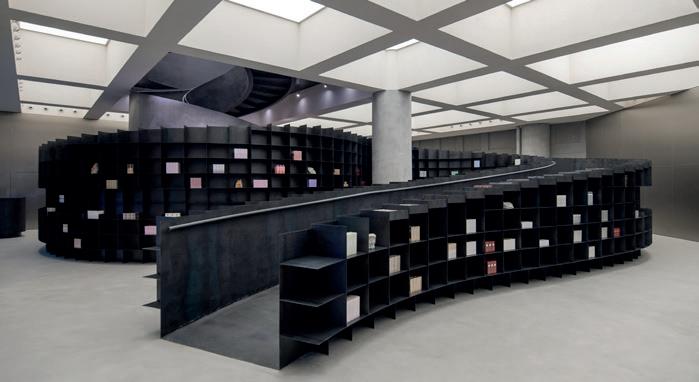
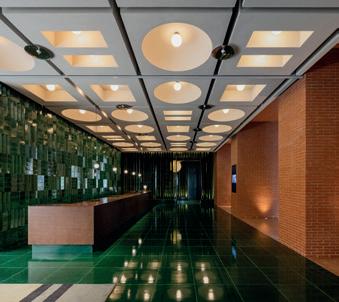
creating something unique, activating its new connections.”
Mixed-use spaces and porcelain power
In Cotton Park in Changzhou, China, AIM has transformed four disused oil tanks into a lively mixed-use space for the local community. The adaptive reuse project combines sustainability, culture, and community – turning industrial relics into a vibrant public hub. “With Cotton Park, our goal was to show how former industrial sites can be reimagined as meaningful places for the city,” says Saunders. “Rather than erasing what was there, we transformed these oil tanks, once part of the city’s industrial fringe, into a lively cultural hub.”
Another project that is deeply rooted in its context is Taoxichuan Hotel, part of the Unbound Collection hotel by Hyatt, which is located in Jingdezhen, China. The city has a tradition of crafting porcelain, and the hotel is a tribute to the technique and experience of porcelain in the heart of its birthplace. Saunders adds: “Like the long and fascinating life of porcelain, it’s a journey toward the unknown, the unexpected, an urge to find the truth, and all the encounters in between.”
With a bold vision rooted in cultural curiosity, AIM continues to redefine the relationship between architecture and the life around it – crafting spaces that spark connections, inspire communities, and transform the cities of tomorrow.
www.aim-architecture.com
Facebook: AIM ARCHITECTURE
Instagram: @aimarchitecture
LinkedIn: AIM ARCHITECTURE
HARMAY Chengdu.
Photo: ©Dirk Weiblen
Taoxichuan Hotel, guest room.
Photo: ©Wen Studio Zara Nanjing. Photo: ©Seth Powers
Taoxichuan Hotel. Photo: ©Wen Studio
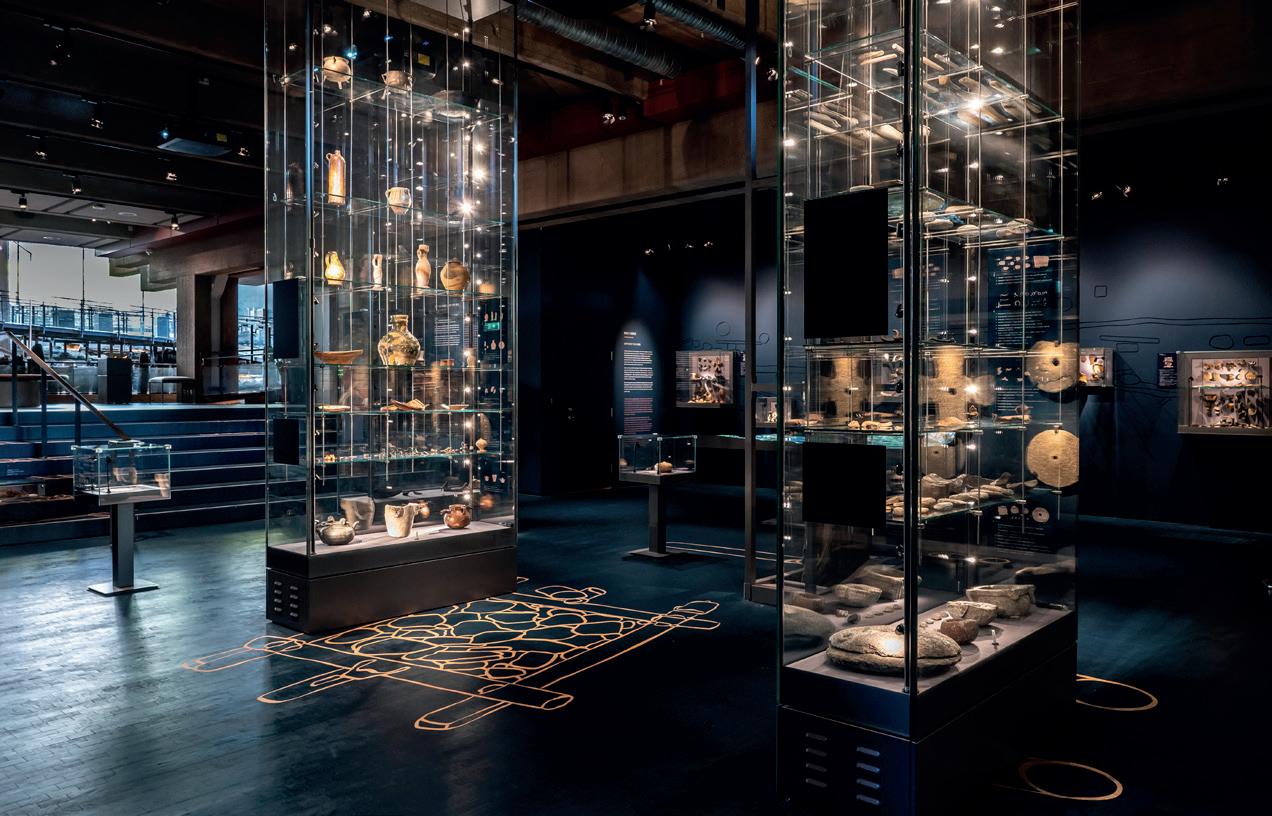
Step into medieval Bergen with Bryggens Museum
Framed by its seven hallmark mountains and spilling into a harbour that opens toward the North Sea, Bergen is a city where nature, culture, and history come together. Norway’s second-largest city has the vibrancy of a modern hub but never lets you forget its thousand-year story.
By Celina Tran | Photos: Bymuseet i Bergen
When people think of Bergen, they instantly imagine themselves at the harbour. Here, at the Fish Market, just steps from the waterfront, stalls brim with the catch of the day: glossy salmon, piles of shrimp, and steaming seafood ready to be tasted. This is where you will find the wooden houses, with façades painted in reds, yellows, and ochres that glow even on Bergen’s famously rainy days (of which there are many).
This beautiful wharf – now a UNESCO World Heritage Site - has been the city’s beating heart since the Middle Ages. Once the stronghold of Hanseatic merchants, its wooden buildings have survived fire, time and change, to remain Bergen’s most iconic landmark. But to
understand Bryggen, you need to go below the surface, into the stories literally buried in its soil.
Life beneath the surface
In 1955, when flames tore through Bergen and part of Bryggen, many feared
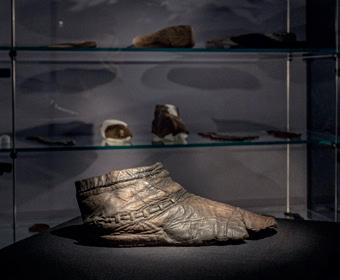
it was the end of this historic quarter. What followed was one of Northern Europe’s most remarkable archaeological projects. Over 13 years, layer by layer, archaeologists uncovered the remains of medieval buildings and hundreds of thousands of objects that had slipped into the earth. Shoes, pots, tools, even scraps of clothing – things so ordinary that they might have seemed unremarkable at the time – became extraordinary clues to the past. Their discovery gave birth to Bryggens Museum in 1976, which has since become a keeper of the city’s most human stories.
“The permanent exhibition includes everything from worn-out shoes, broken pottery shards, fragments of clothing, and other everyday objects that give us unique insights into the lives of people who lived in Bergen hundreds of years ago,” says lecturer Knut Høiaas.
The museum’s main exhibition, Under Ground, is less about kings and battles
Under Jorden exhibition.
Leather shoes.
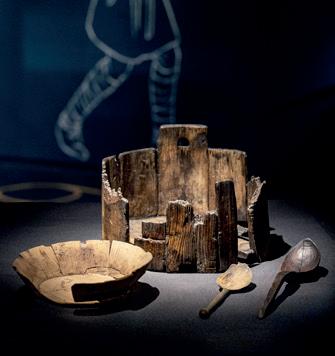
and more about shoemakers, merchants, women, and children who lived here 800 years ago. Worn-out shoes whisper of long days on muddy streets. Broken pottery reveals what people cooked, ate, and drank. A child’s lost toy still seems to wait for small hands to pick it up again.
“Well-preserved evidence of life from the Middle Ages and other historical periods isn’t necessarily rare, but more often than not, they often belong to those of the ruling classes. The interesting thing about many of the finds at Bryggens Museum is that they belonged to the common man at the time,” says Høiaas.
Perhaps most captivating are the runic inscriptions: wooden slips etched with words that bring the medieval world startlingly close. Some are practical –such as receipts for goods or tally marks

for trade. Others are more personal, think love poems, fragments of gossip, even magical charms against bad luck. Together, they show that medieval Bergeners were not faceless figures from the past, but people with worries, humour and dreams, not unlike our own.
“We have the world’s largest collection of runic inscriptions, featuring everything from receipts and poems to gossip and magical spells,” says Høiaas. “There’s a message from a certain Gyda telling –whom we suspect to be – her husband to come home.”
One of the rarest treasures is the Guddal-garment, a thousand-year-old wool tunic that once kept its owner warm against the coastal winds. Standing before it, you are struck by how tangible the connection feels. One cannot help but
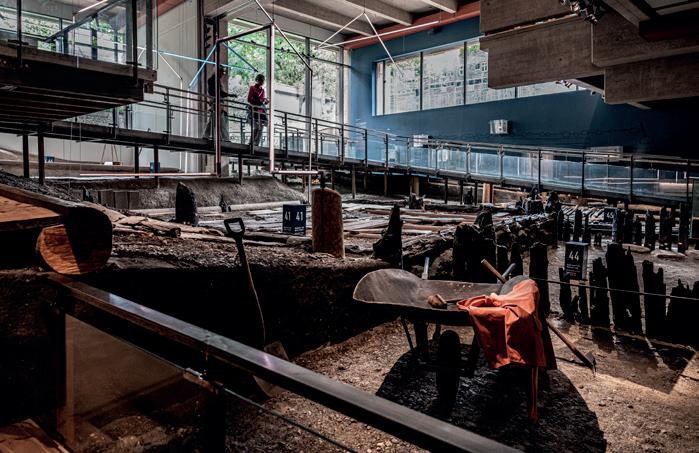
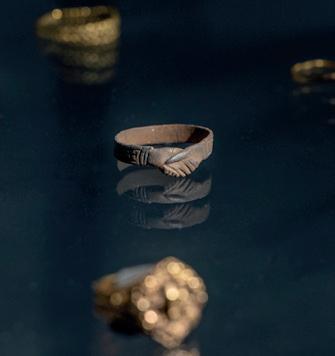
imagine how an ordinary person, living in this same city centuries ago, wore this very fabric.
“One of my personal favourites inscriptions is a very sweet one that reads ‘Åsbjørg, the best child’. There’s also another, a so-called birth helper, a type of Christian magical inscription that was to help pregnant women before birth,” says Høiaas. “I often imagine this woman as she clutches onto this object, praying the birth will go well, a situation many women today also go through. Something about these objects create a link between us in the present and those very real people who lived in Bergen in the past.”
Bergen is a city of layers, and Bryggens Museum peel all those back to reveal the ordinary, fragile, daily lives that once unfolded here. It is not just a museum of artifacts, but a reminder that the past is never far away.
www.bymuseet.no/museum/ bryggens-museum
Facebook: Bymuseet i Bergen Instagram: @bymuseetibergen
In addition to the permanent exhibition, the museum hosts temporary displays on a wide variety of themes. In 2025 and 2026, visitors can experience ten magnificent tapestries created by textile artist Ragna Breivik from Fana. Woven over a period of more than 25 years, the tapestries are inspired by the medieval ballad of Åsmund Frægdagjeva.
Archeological site.
Wooden spoons and bowl.
Rune sticks. Rings.
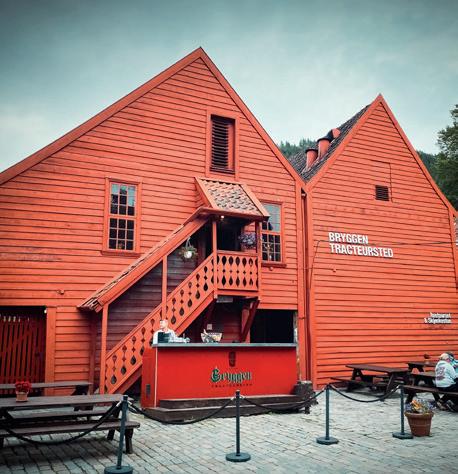
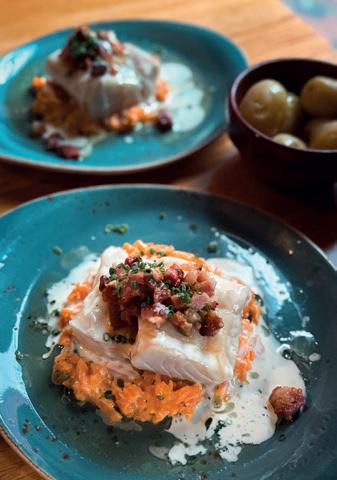
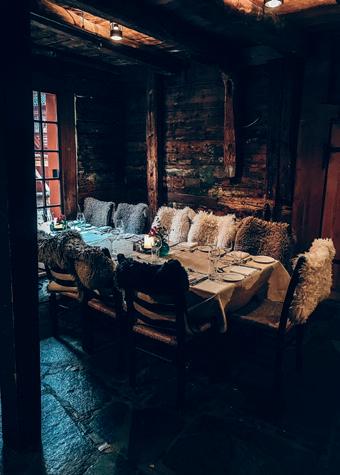
Bryggen Tracteursted: a culinary journey through Bergen’s history
Nestled in the heart of Bergen’s historic Bryggen district, Bryggen Tracteursted offers a unique fusion of Norwegian tradition and contemporary dining.
By Celina Tran | Photos: Bryggen Tracteursted
Celebrating its 20th anniversary in 2023, Bryggen Tracteursted operates in one of the oldest and best-preserved wooden buildings on Bryggen, dating back to the 1700s. Originally part of the Hanseatic trading post, Bryggen was a bustling commercial hub from around 1360, where merchants from Germany dominated the stockfish trade. The building now houses a charming restaurant that blends modern Norwegian cuisine with the region’s deep-rooted culinary heritage. “At Bryggen Tracteursted, we serve food inspired by Norwegian culinary traditions, using seasonal, local ingredients that provide a pure and authentic taste experience,” says head of marketing and sales, Patrick Mayr.
A taste of Bergen’s past
The history of Bryggen is steeped in stories of hard work and discipline, with the Hanseatic merchants and their trade offices forming the backbone of Bergen’s economy for centuries. The area housed
the Schøtstuer, communal gathering spaces for these traders, where they would share meals and socialise during the long winters. These Schøtstuer were central to the cultural life of the community in Bergen, but by the 1840s, they had mostly disappeared due to fires.
“Today, Svensgårdens Schøtstue, where Bryggen Tracteursted is located, is one of the last four of these historic communal spaces,” says Mayr. “It’s a wonderful place to enjoy good food on historic grounds.”
Honouring the building’s history, you will find classic Bergen recipes on Tracteursted’s menu. These signature dishes are highlighted, making it easy for guests to discover authentic flavours that have been part of Bergen’s cuisine for generations.
One of the restaurant’s standout features is its Smakfulle Småtterier (Tasty Tidbits), which offers a social, flavourful
dining experience. These small, delicious dishes allow patrons to sample a variety of traditional Norwegian flavours in a relaxed, communal atmosphere. “We take great pride in our focus on local, traditional Norwegian cuisine, prepared using time-honoured recipes,” says Mayr.
The team has revived both familiar and forgotten flavours, ensuring that every bite tells a story. One of the signature dishes, Bacalà alla Vicentina, is a nod to the country’s trade history. Though an Italian dish, it is made with traditional Norwegian dried cod, a key export of the region since the 1200s. This iconic dish is served at only a handful of places worldwide.
“At Bryggen Tracteursted, we take great pride in preserving and continuing Bergen’s rich culinary traditions,” Mayr adds. “We believe that food is an essential part of a city’s history, which is why we focus on offering dishes with deep roots in Bergen and the surrounding region.”
www.bryggentracteursted.no
Facebook: Bryggen Tracteursted
Instagram: @bryggentracteursted
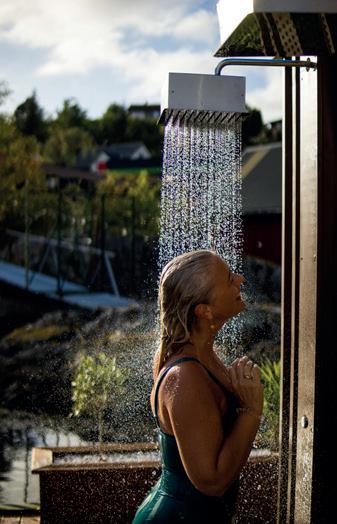
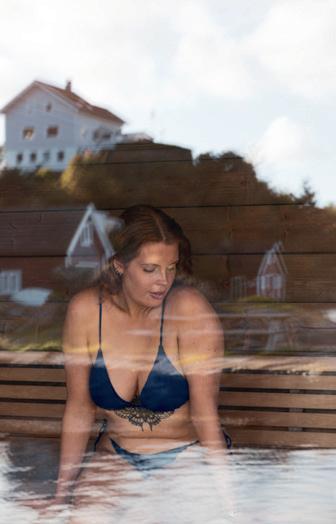
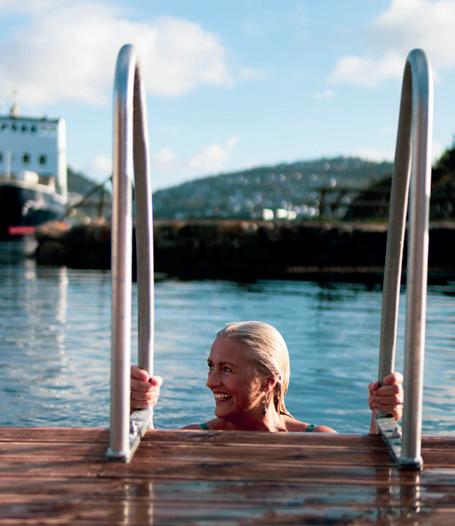
Fryd: your local sauna away from home
On a crisp morning on the shores of Askøy, just a short ferry ride from Bergen, locals and travellers alike can be found stepping out of a steaming wooden cabin, braving the icy fjord, and returning flushed faced. This is Fryd, a modern take on a centuries-old tradition that is as much about community as it is about wellness.
By Celina Tran | Photos: Fryd
Founded in 2023 by brothers Andreas and Joachim Økland, together with their friend Gabriel Carvajal, Fryd has quickly become a beloved part of the local landscape. The trio, all from Askøy and Fyllingsdalen, set out to create a sauna experience that would be both unique and accessible, giving people an easy way to disconnect from daily stress while reconnecting with themselves and others.
“Our slogan is ‘Your local sauna’, and it’s really the best description of what Fryd is,” says Andreas Økland. “It’s the place you go to find calm in a busy everyday life, to meet friends for a fresh start to the weekend, or simply because you love the feeling of sauna and cold-water bathing.”
“Norway has a long sauna tradition, and many people have good memories from childhood in which the sauna played an important role. In our case, it was a cosy
little sauna at the family cabin, built by our grandfather,” he says.
Years later, a floating sauna experience on the east coast planted the seed for what would become Fryd, inspiring the trio to bring the concept home to Askøy. In 2023, they opened their first sauna on Askøy and have not looked back since.
At Fryd, guests can book floating or landbased saunas by the hour, either privately or as part of an open session. “We’ve built everything with user-friendliness and good facilities in mind. The whole process should be simple from start to finish,” Økland says.
After sweating it out, visitors can jump into the sea surrounded by the spectacular west coast scenery. The newest sauna in Kleppestø is only a short ferry ride from Bergen, and even the trip, with the
beautiful mountainous backdrop, is an experience in itself.
Økland says that Fryd, which attracts both Askøy locals and travellers from around the world, serves as both a wellness service and a social meeting place.
“I once read a sign that said: ‘In the sauna, we are all equal.’ That really stuck with me. There’s something unique about the conversations and atmosphere that arise in a sauna. Our goal has always been to create a social space that’s inclusive and easy for everyone to enjoy.”
www.frydaskoy.no
Facebook: FRYD Askøy
Instagram: @frydaskoy
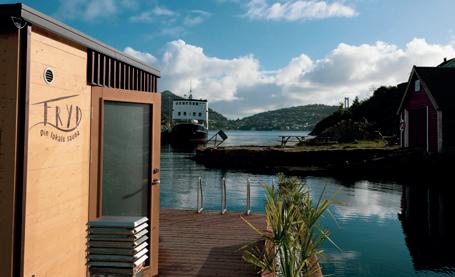
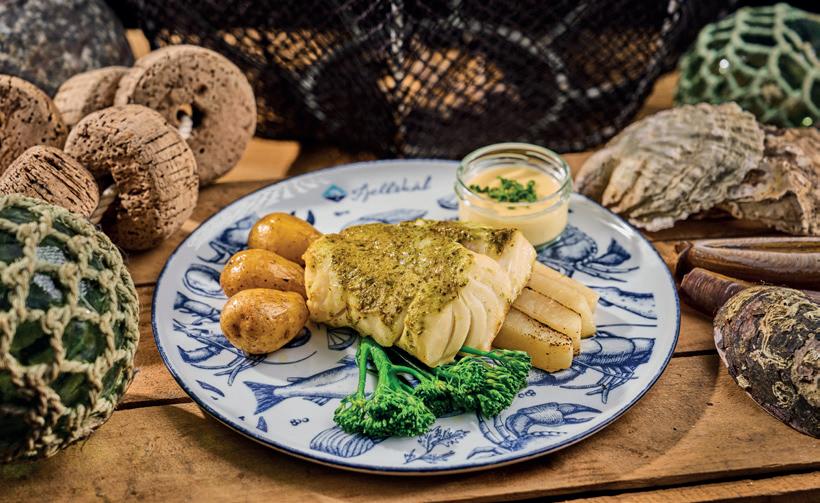
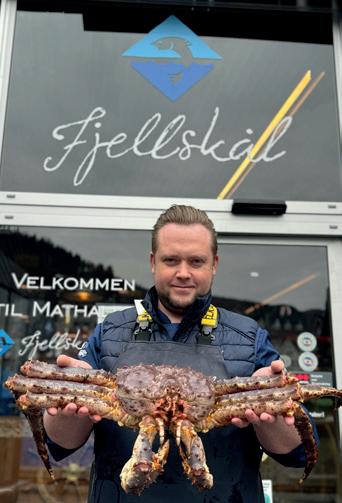
Fjellskål: a delicious seafood odyssey
For nearly 50 years, generations of fishmongers have shaped what would become Fjellskål. What began as a small stall at Bergen Fish Market, has grown to become the Norwegian west coast’s premier seafood destination.
By Celina Tran | Photos: Fjellskål Fiskeriet
Founded by brothers Øystein and Ragnar Fjellskål in 1976 at Bergen’s bustling fish market, Fjellskål has become an integral part of the city’s rich seafood heritage. For nearly 50 years, the brothers have been synonymous with Fjellskål and the market, an inseparable part of the city’s culture and history.
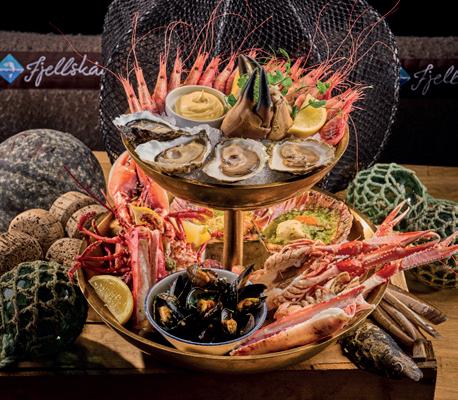
In 2012, the entire family came together to launch Fjellskål Fisketorget AS at the newly opened Mathallen, marking the beginning of a new era. Blending the family’s fish mongering expertise with a top-tier kitchen created a new kind of seafood destination. “The venue is split into two, one side being the fishmonger and the other being the restaurant. The restaurant, which has space for 120 guests, has a large conservatory overlooking the harbour,” says Dan Even Venøy Fjellskål.
This dual concept allows the restaurant to craft a menu based entirely on the freshest seafood available on the counters. While most restaurants can only rotate a few different seafood species, Fjellskål boasts one of the largest selections of fresh seafood in the Nordic countries. From Norwegian snow crab and king crab to local wild scallops, halibut, salmon and more, the variety on offer is unmatched. “We have over 80
different species of seafood available, most of which are sourced locally,” says Fjellskål.
The combination of having both a fishmonger and a kitchen under one roof means that Fjellskål can rotate products quickly, maintaining the highest standards of quality. It also allows for a wider variety of seafood, offering customers the freshest and most diverse selection possible. “Our guests also get to enjoy seafood at its freshest, which is wonderful. And if they find something they really like and want to try making it at home, the seafood counter is just steps away,” Fjellskål explains.
After nearly half a century, Fjellskål remains a living part of Bergen’s story, constantly evolving and adapting to the changing times. Whether you are someone who enjoys a fish soup at a restaurant, the most seasoned of seafood enthusiasts, or a chef needing the very best products, this family business will have something for you.
www.fjellskaal.no
Facebook: Fjellskål
Instagram: @fjellskaal
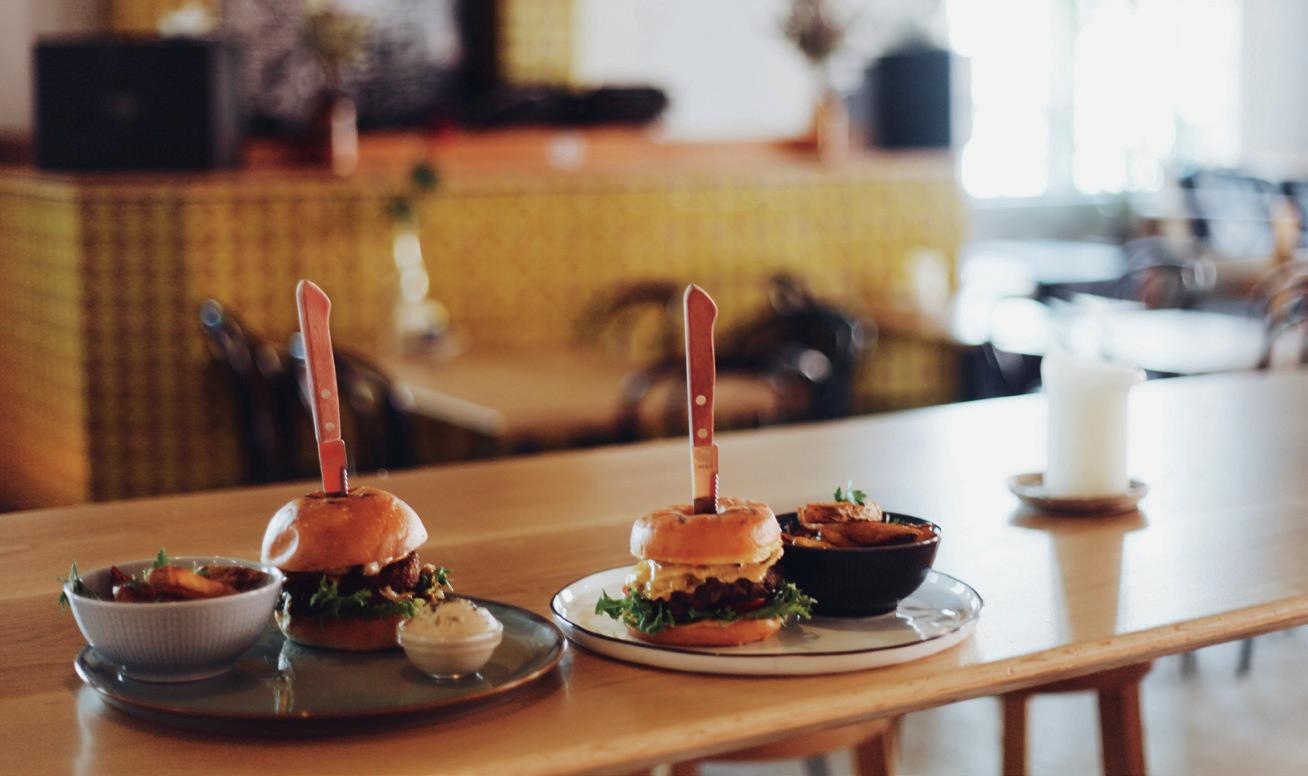
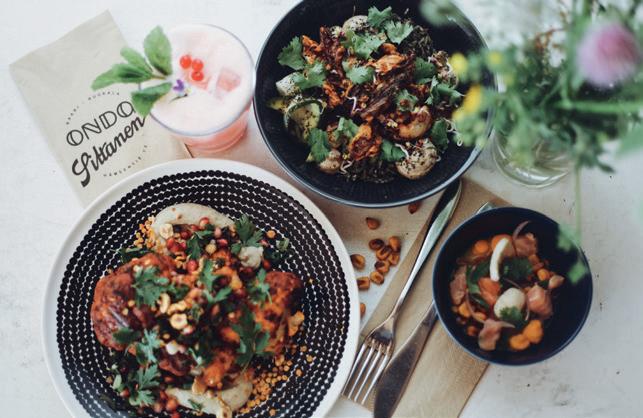

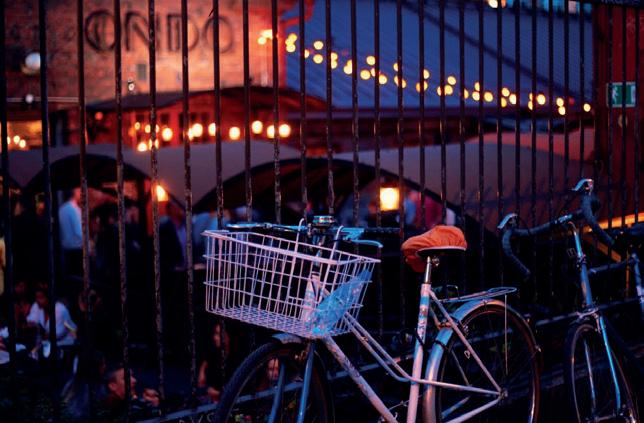
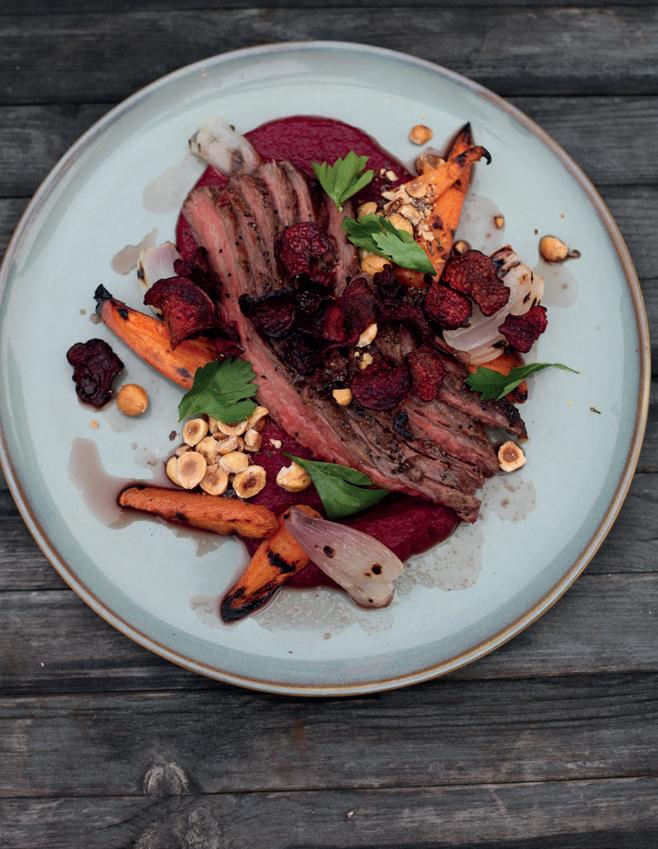

Tool Rebels with a love for innovation, design and rock’n’roll
Wera Tools has driven the innovation of screwdriving tools for almost 90 years, making the life of its users simpler, safer and more joyful. With more than 3,000 products in the product portfolio, there is sure to be one that fits your needs.
By Malin Norman | Photos: Wera Tools
The company was first established as a trading business for tools in 1936. Production of bits began in 1963, and in 1968 the screwdriver handle Wera Kraftform was developed together with Fraunhofer Institute – this can still be seen in the brand’s logotype. In 2016, Wera Tools was acquired by Bitburger Holding, with production still based in Europe.
Wera Tools is committed to innovation, quality and customer service – a combination that has made the brand a trusted name in the industry. Its portfolio of high-performing products includes screwdrivers, screwdriver bits, rachets,
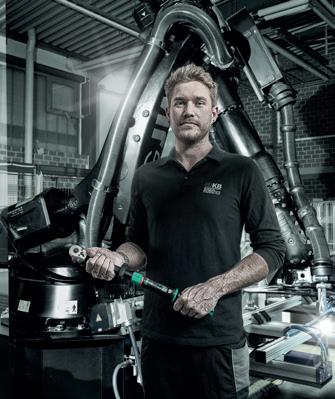
sockets, wrenches and torque tools, for industries such as automotive, aerospace, manufacturing and construction, as well as professional craftsmen and private consumers.
“Our team of experienced designers and engineers is constantly developing new products and solutions, and we offer technical support and expertise to help our customers get the right tools for their needs,” says Henry Ahokas, regional sales manager for the Nordics. “We have a laser-strong focus on screwdriving tools. When you think about it, the world is held together by screws. We want to be the very best in this segment.”
Tools driven by relentless innovation
The innovative and enthusiastic tool producer has developed screwdriving tools such as the Zyklop ratchet and the Jok-
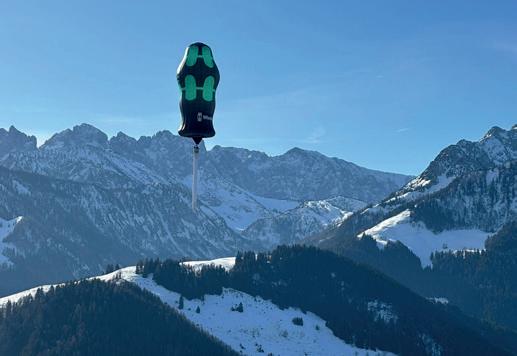
er wrench – innovations that are real game-changers. R&D is a priority, and the company has a high number of patents. “We’re never satisfied with the existing standards. Our team constantly searches for new ideas, questions the norm and thinks differently,” confirms Ahokas.
At Wera Innovation 2025, the company’s latest inspirational show in May, visitors were able to check out some of the revolutionary tools, such as the ToolCheck Modular system. This convenient solution combines Tool-Check Modular sets with various screwdriving tools for specific applications in a compact set –a customised collection that is easy to bring with you.
Also demonstrated at the innovation show was the successful Wera ClickTorque Lock wrenches, which have a robust release mechanism when the set torque value is reached. The new Wera Click-Torque Lock range includes torque wrenches with deactivatable torque function. Ahokas explains the benefit: “Lock means that the torque function can be deactivated, so the tools can be used as traditional ratchets, even for opening. This saves time and hassle!”
Rock festivals and community of rebels
Long-term partnerships are important for the company’s success, for instance the collaboration with INEOS Grenadiers, a professional cycling team competing in the UCI WorldTour. As the official tool partner, Wera is supporting the team with tool solutions for both workshop and mobile use.
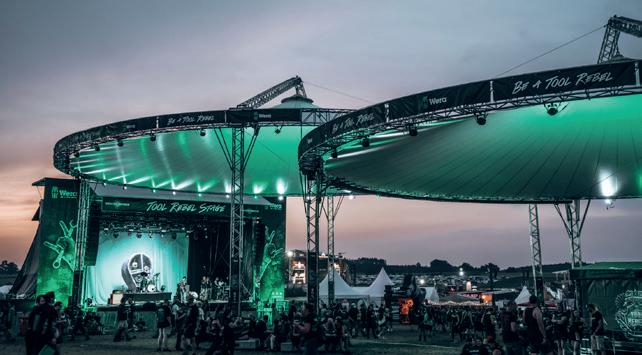
Wera Tools regularly takes part in events such as Montgolfiade, Kiel Week and the Balloon Cup in the Kitzbühel Alps, with a hot air balloon in the shape of a screwdriver. The brand has also cooperated with rock festivals such as SummerBreeze and Wacken in Germany, Copenhell in Denmark, HellFest in France, and Tuska in Finland.
The spirit of rock’n’roll is evident and provided inspiration for Tool Rebels, a strategic element introduced in 2014 to fill the emotional part of the brand. When Wera surveyed its customers, asking them what they thought of the company, many described the team as ‘tool rebels’, because they re-invent screw-driving tools and develop incredible (almost insurgent, rebellious) solutions to problems often thought unsolvable.
“The Tool Rebels community includes our passionate product development teams, who constantly look for new and often rebellious ways to develop new tools,” says Ahokas. “But it’s also spread-
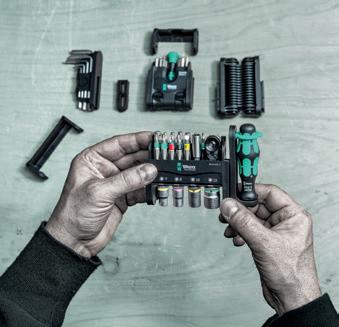
ing among our end customers through events and social media. Basically, these are people who are not afraid to challenge existing standards.”
The highly anticipated advent calendar Every year, Wera fans around the world wait eagerly for December when they can open the first door on the famous advent calendar. “Our advent calendar has been a top seller for more than 10 years, and it’s a real classic in the run-up to Christmas” says Ahokas.
No two calendars are the same, as they are filled with a variety of quality tools every year. Several world firsts are hidden in the calendar, each with different advantages. A sneak peek at the 2025 Wera advent calendar reveals a comprehensive screwdriving workshop for the most common screw profiles and screwdriving operations.
www.wera.de
Facebook: Wera Tool Rebels Instagram: @weratoolrebels
Meet Wera Tools in Sweden: 15-16 October 2025
Elmässan, Kistamässan, Sweden
A well-established meeting place that brings together the electricity and lighting industry.
14-17 January 2026
Automässan, Gothenburg, Sweden
The largest exhibition in the Nordics for the automotive industry and aftermarket.
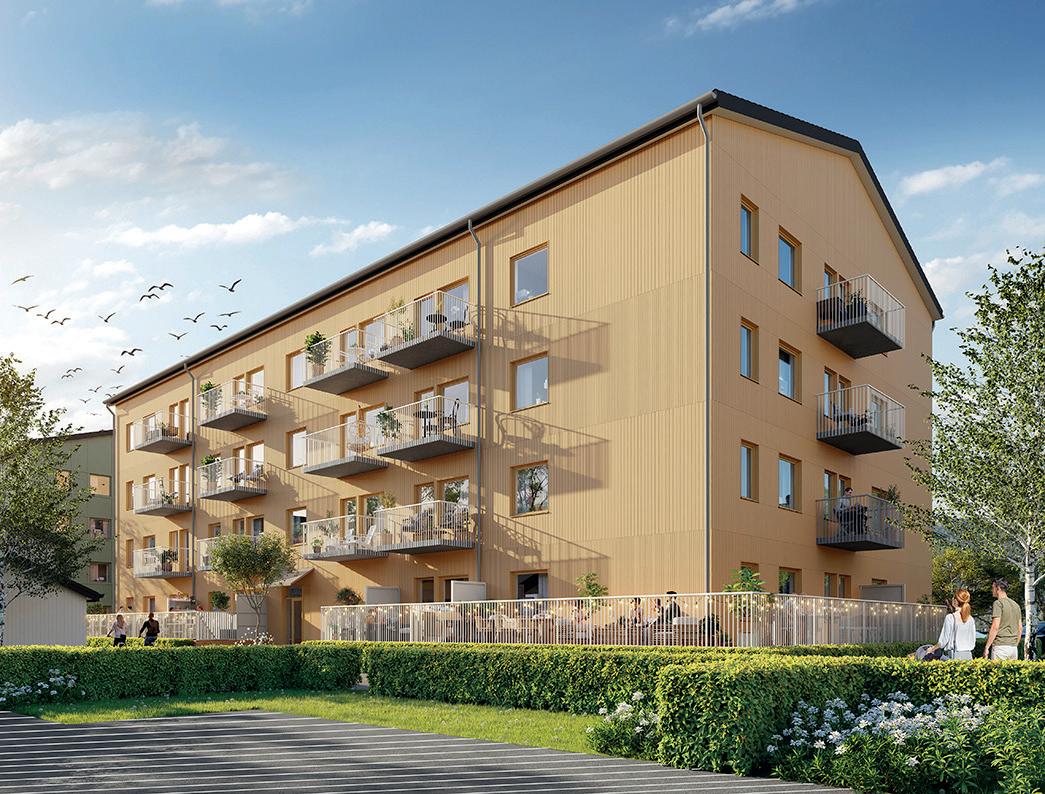
Future-proof energy efficiency with circular heat energy
Full-service supplier Ecoclime helps customers reduce energy consumption in their properties. Its pioneering solution Evertherm, an industry-leading system for wastewater heat recovery, lowers energy use, reduces CO₂ emissions, and increases both property value and long-term savings. Most importantly, it recycles thermal energy that has already been paid for – heat from showers, washing, and cleaning –offering a powerful hedge against rising energy costs.
By Malin Norman | Photos: Ecoclime
Ecoclime was founded with a clear vision: to harness the enormous amount of energy that is flushed away every day in buildings. “Wastewater contains large amounts of thermal energy from everyday activities like showers, dishwashing, laundry, and handwashing. That heat usually disappears straight down the drain,” says Robert Aldrich, CEO. “By developing and commercialising our patented solution Evertherm, a technology
that recovers this energy, we’ve established ourselves as a pioneer in circular thermal energy.”
The company aims for zero-emission buildings – properties that are self-sufficient when it comes to thermal energy. Its first major milestone was the instal-

One of Ecoclime’s largest residential installations to date is Storfågeln, a 298-unit development by Heimstaden.
Photo: Heimstaden
lation of Evertherm in the Nordic eco-labelled housing association Solterrassen in Umeå in 2018. The property, with 42 apartments, currently recovers 94 per cent of available heat energy from its wastewater.
Since then, Ecoclime has expanded through continuous technology development and strategic acquisitions. Its customer base spans both new production and existing properties, from renovation projects with major real estate actors to private tenant associations and municipal or state-owned properties. “We continue to grow with a clear focus on combining climate benefits with concrete profitability for property owners,” says Aldrich.
Evertherm, the pioneering circular solution
What makes Ecoclime unique is the circular, holistic solution Evertherm. It uses patented Swedish technology that recovers up to 95 per cent of the heat energy in a property’s wastewater – compared to just three to ten per cent for conventional solutions on the market. “Evertherm combines high recovery rates with long service life and reliability,” explains the CEO. “Instead of letting valuable energy go to waste, we recover energy that property owners have already paid for –making every kilowatt-hour count.”
HSB Brf Akvarellen in Tullinge, just south of Stockholm, installed Evertherm in 2024. Within a year, the association re-
duced its district heating consumption by 57 per cent – a saving that exceeded expectations. The combination of energy savings and long service life makes it one of their most profitable investments. In the words of the association’s chairman: “It’s almost too good to be true. It will be the best investment we’ve ever made.”
One of Ecoclime’s largest residential installations to date is Storfågeln, a 298-unit development by Heimstaden in northern Sweden. The buildings, designed to meet Miljöbyggnad Silver certification, use prefabricated timber-frame construction and two Evertherm systems to manage the high wastewater volumes. After just one year in operation, the installation has reduced the property’s energy use by more than 40 per cent — equivalent to 20 tonnes of CO₂ annually, or the fuel consumption of 120 petrol cars.
Stricter energy performance requirements
Ecoclime manufactures systems in Sweden for Swedish conditions, which strengthens quality, delivery capacity and service. “Another important success factor is our flexibility to either take responsibility for the entire chain – from feasibility study to commissioning – or collaborate with the customer’s contractor,” says Aldrich. “This provides security for the property owner.”
The Ecoclime team has several new projects underway, including Vacse and
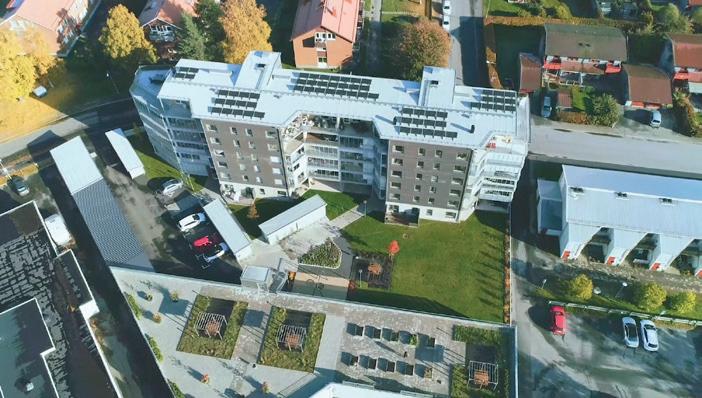
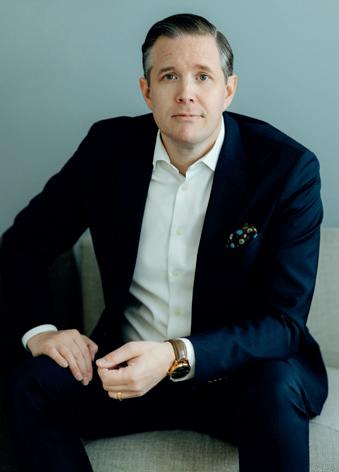
Specialfastigheter. “In parallel, we’re driving the development of more solutions within circular energy – always with a focus on combining efficient technology, profitability and climate benefits.”
Overall, there is an increased interest from new customer segments, especially considering rising heating prices and stricter regulatory requirements. More property owners see the importance of recovering energy, not only to reduce costs but also as a future insurance. “Evertherm helps meet the EU’s increasingly stringent requirements for energy performance in buildings,” adds Aldrich. “It’s a concrete way for property owners to future-proof their properties and reduce their climate impact.”
ecoclime.se
LinkedIn: Ecoclime
Facebook: Ecoclime
Evertherm
Evertherm recovers the heat from wastewater that would otherwise go to waste – with up to 95 per cent efficiency. This is possible thanks to the unique combination of collector tanks, energy collectors using a patented polymer heat exchanger, and an advanced control system. No other system on the market offers the same degree of recoverability.
Evertherm was installed in the Nordic eco-labelled housing association Solterrassen in 2018.
About
CEO Robert Aldrich.
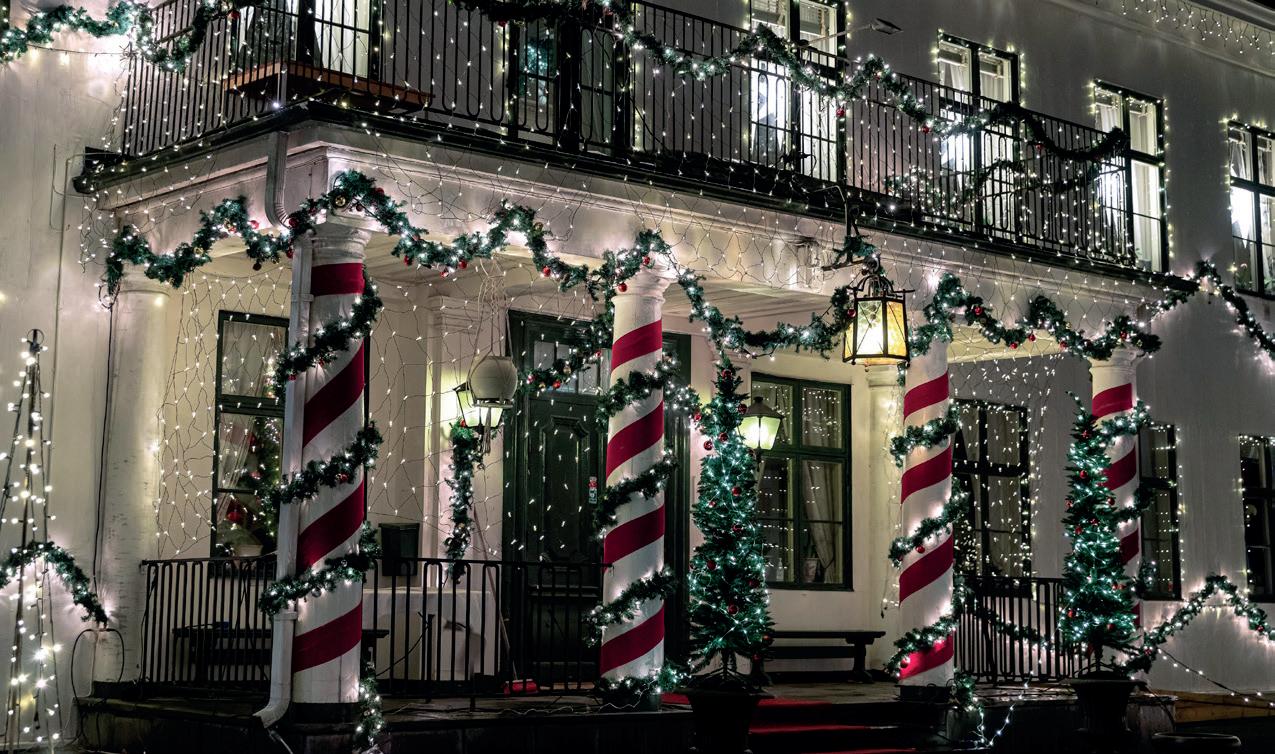
Dreamlike Christmas ambiance at Hellefors Herrgård
For a magical Christmas atmosphere, head to Hellefors Herrgård. The late-18thcentury mansion hotel is known for its festive decorations and fantastic Christmas meals. This is a one-of-a-kind experience, in a warm and welcoming home.
By Malin Norman | Photos: Hellefors Herrgård
The Christmas spirit is truly remarkable at Hellefors Herrgård in Bergslagen. With thousands of fairy lights, crystal chandeliers and beautiful decorations throughout, the mansion is transformed into a winter fairy tale. “Each room is decorated with its own Christmas story – the chandeliers sparkle with lit candles, the trees are dressed from top to bottom, and the stars are reflected in the windows, reminding us of the Christmases of our childhood,” says Malin Runkvist, owner.
The mansion has even been featured in Julkampen (The Christmas challenge), a TV series on Kanal 5 in Sweden where

families compete to create the most extravagant Christmas decorations. “It was so much fun having the TV crew here,” says Runkvist. “Even though we didn’t win, it was an incredible experience and a boost for everyone involved.”
A home filled with Christmas atmosphere
What started as simply decorating the family home for Christmas, quickly grew with more lights and decorations. In addition to the tens of thousands of fairy lights, ornaments and music, guests are immersed in the family’s passion for the festive season.
“Ever since I was a child, I have loved Christmas – watching my grandparents cook the food and making Christmas candy together was magical,” remembers Runkvist. “When I moved to the
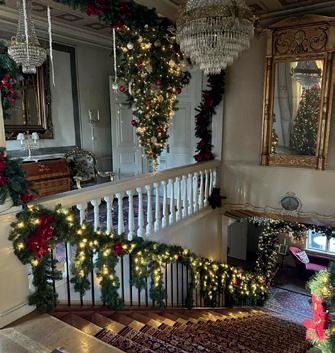
mansion, it was a great opportunity to go all in with the decorations – the more, the better. Every year, we have a new theme for the staircase and the main Christmas tree, and we decorate each room individually.”
This year, the fairy lights will be switched on during a ceremony on 15 November – a tradition in the village that usually attracts hundreds of visitors. You can expect joyful music and fireworks, and Santa will pay a visit to hand out advent calendars to the children. “It’s pure magic to see everyone showing up and the anticipation of the children,” says Runkvist.
Christmas delights and charming boutique
At the traditional Christmas smorgasbord, which opens in November, classic dishes await, prepared with care and craftsmanship. “We prepare the herring ourselves from the start, we pickle the rainbow trout, we roll the meatballs, and we bake the cookies – all according to tradition,” says Runkvist. “We always choose ingredients carefully – preferably from local producers.”
Everything is done with the utmost care and attention to detail. Anyone with a sweet tooth will be pleased to know the Christmas desserts even have their own room, the Winter Room. Here, tables are filled with homemade treats, cookies, sweets and confections evoking childlike delight that only Christmas can bring.
To ensure a peaceful and relaxing evening, the mansion only offers one sitting per
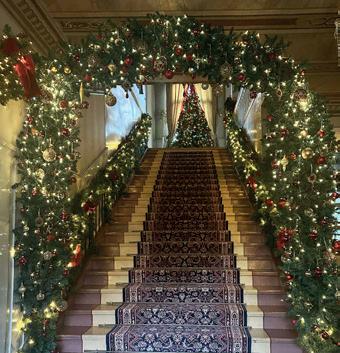
evening. “There should be no stress, for our guests as well as our staff, just time to enjoy,” says Runkvist. For those who want to stay the night, Hellefors Herrgård offers a special Christmas package including the Christmas smorgasbord and accommodation, ensuring a good night’s sleep after the delicious meal. “Some families might want to celebrate ahead of Christmas; they can come here and still get a festive celebration with all the trimmings.”
In the mansion’s Christmas boutique, the only one in Sweden that is open all year round, you will find everything from fantastic Disney characters to wonderful Christmas decorations. There is also the occasional Santa, of course.
More festive spirit with Champagne Hellefors Herrgård will now be even more festive, introducing Champagne tastings together with Runkvist’s hus-
band Magnus Fritzell, founder of Svensk Champagneimport and A Little Party. With a portfolio of over 300 different Champagnes, the mansion will no doubt sparkle with bubbles and joy. “Magnus works mostly with smaller Champagne houses, where many of the producers have become close friends,” explains Runkvist. “Every bottle is more than just Champagne, it carries a story, a relation and a feeling. With our Champagne tastings, we want to share this feeling and our passion for bubbles!”
The mansion is also a popular venue for weddings, celebrations, and conferences. “We chose to think differently – instead of sterile conference rooms, we open the doors to our charming, unique salons,” says the owner. “Here you will be greeted by beautiful details, historic furniture and an atmosphere that inspires both creativity and focus. Each salon has its own character and story, from the bright room overlooking the manor garden to the cosy corner with a tiled stove.”
The feeling of home is important here and guests appreciate the casual and warm atmosphere. “We love this place, the amazing building and the small forest outside,” adds Runkvist. “We really want everyone to feel welcome into our home at Hellefors Herrgård.”
helleforsherrgard.se
Facebook: Hellefors Herrgård
Instagram: @helleforsherrgard
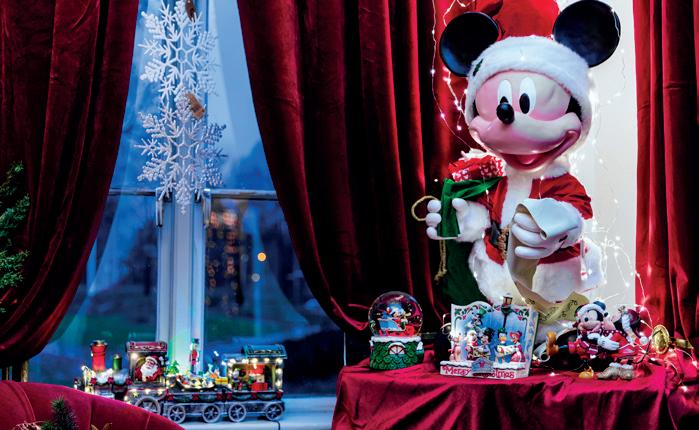
Photo: Orlando Boström
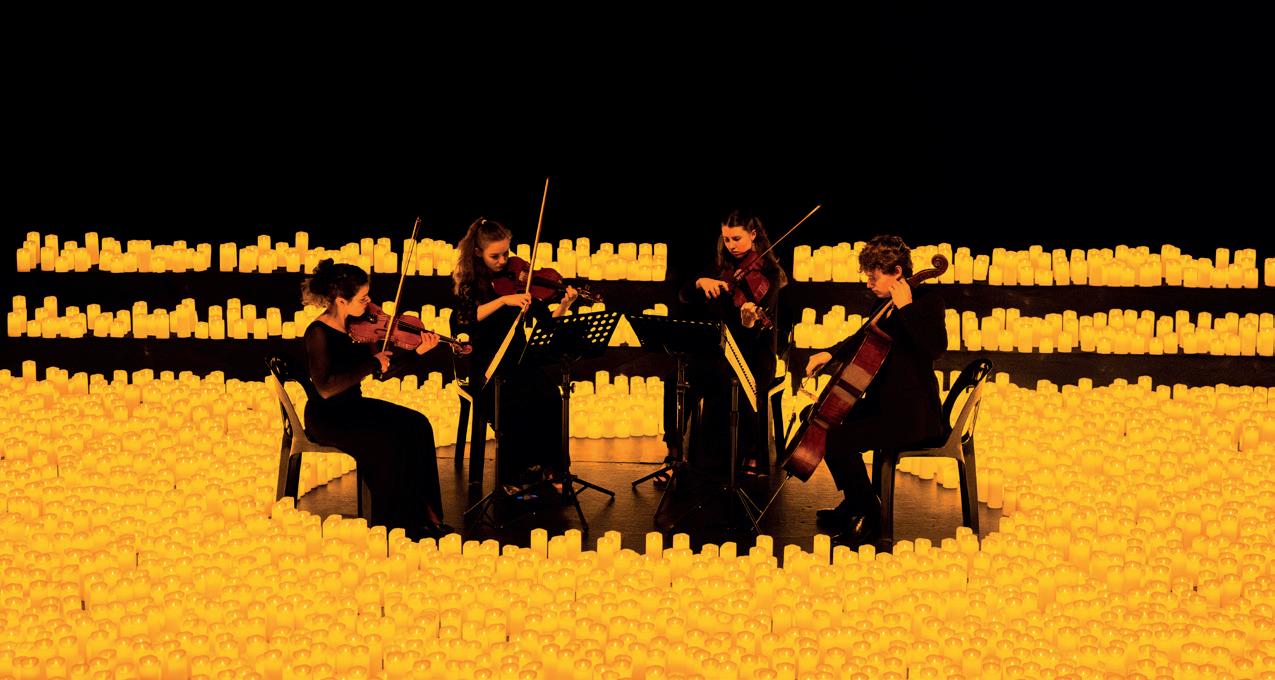
A new light on classical music, at stunning venues worldwide International Experience of the Month
On a mission to democratise classical music, Candlelight was launched by Fever in 2019. The series of atmospheric concerts in one-of-a-kind venues has become a worldwide phenomenon.
By Malin Norman | Photos: Candlelight® by Fever
Candlelight is a series of classical concerts, but not as you know it. This is much more: immersive musical experiences in stunning backdrops await, with a new take on classical music performed by local musicians, and thousands of candles for a breathtaking effect.
The first Candlelight event took place in Madrid in 2019, organised by the world’s leading live discovery platform Fever. “There was a gap in the classical music scene. We saw that people were hesitant to attend concerts, perhaps expecting long performances with traditional music,” says Johanne Solbakk Raabe, team leader for the Nordics, Netherlands and
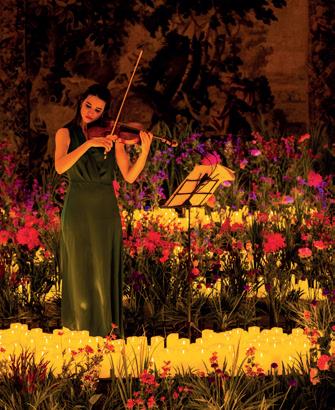
the Baltics at Fever. “With Candlelight, we wanted to make classical music more approachable to different demographics around the world.”
From Vivaldi to Queen and Coldplay
With its shorter concerts, a wide network of stunning venues around the world, and amazing ambience created by thousands of candles, Candlelight has enchanted millions of visitors in more than 150 cities worldwide. The one-hour concerts feature works by composers such as Vivaldi, Mozart and Chopin, alongside new interpretations of songs by Queen, ABBA, Coldplay and Ed Sheeran, plus film soundtracks and indie tributes.
The first concert in Mumbai, India, took place last year and was praised in the iconic music magazine Rolling Stone. Titled Best Movie Soundtracks, the concert featured a blend of contemporary film
music in a classical context – and it did not disappoint. A feature following the event states: “By reimagining classical music in a contemporary setting and bringing it to new audiences around the world, Candlelight is breaking down barriers and making this traditionally reserved genre more accessible to all.“
The concept is classical music, but with a twist – to entice a broad audience. “In Amsterdam, I saw five cool guys in their mid 20s attend a Candlelight concert on a Saturday evening, perhaps not what you might expect,” says Solbakk Raabe. “And in Norway, I once saw an older gentleman at a tribute concert to Queen, listening to his favourite songs but in a classical format. It was amazing to see his emotional response.”
Autumn with Nordic legends and ABBA
Adaptation is essential to Candlelight’s global success, as each region has its cultural nuances, explains Fever’s team leader. “We strive to reflect these local preferences through our programming, such as Candlelight: Nordic Legends at Uranienborg Church in Oslo, Norway, where we shine the light on Nordic composers. And in Southeast Asia and the Middle East, we’ve adapted shows to be performed with traditional instruments from these cultures.”
A highlight this autumn is Candlelight Vivaldi’s Four Seasons at Moltke’s Palæ in Copenhagen – a great entry point into
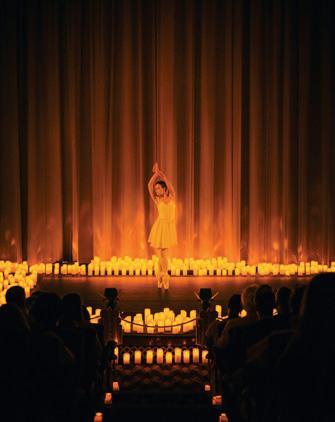
classical music. A composition that most people recognise, even if only vaguely, it is one of Candlelight’s most timeless and universal offerings. And Candlelight: A Tribute to ABBA, which takes place at Eric Ericsonhallen in Stockholm, is a sure hit.
Another not-to-be-missed autumn event is Candlelight: A Tribute to Hans Zimmer at Koninklijk Theater Tuschinski in Amsterdam, with iconic soundtracks from some favourite movies. In line with Candlelight’s mission to bring classical music beyond its traditional concert halls to unique places that form part of the city’s cultural heritage, this historic cinema provides an impressive backdrop, with a beautiful facade that blends styles such as Art Deco and Art Nouveau.
Captivating mix enchants diverse audience
Fever, the leading platform for liveentertainment and discovery globally, partners with venues and musicians locally to present Candlelight, the first Fever Original. “Unlike traditional classical performances, the musicians interact with the audience and share information about the composer, group or movie, which gives a sense of intimacy,” adds Solbakk Raabe. “With Candlelight, we’ve managed to capture a diverse audience, from children to elderly couples. What’s fantastic is the mix: a curated selection of songs, a spectacular venue, unmatched energy, and thousands of candles.”

For more information on this fresh spin on classical music performances, take a look at the website. Candlelight concerts are happening across the globe, year-round. Explore cities, venues, programmes, and genres to find the experience that perfectly matches your mood.
www.candlelightexperience.com
Facebook: Candlelight Concerts by Fever Instagram: @candlelight.concerts
YouTube: @candlelight.concerts
Scan Magazine readers get an exclusive 15% discount with the code SCANCDL15. The offer is valid until 31 December 2025, and may be used once per person, for a maximum of five tickets. Applicable only to customers in Sweden, Finland, Norway, Denmark, the UK, France, Belgium, Germany, and the Netherlands.
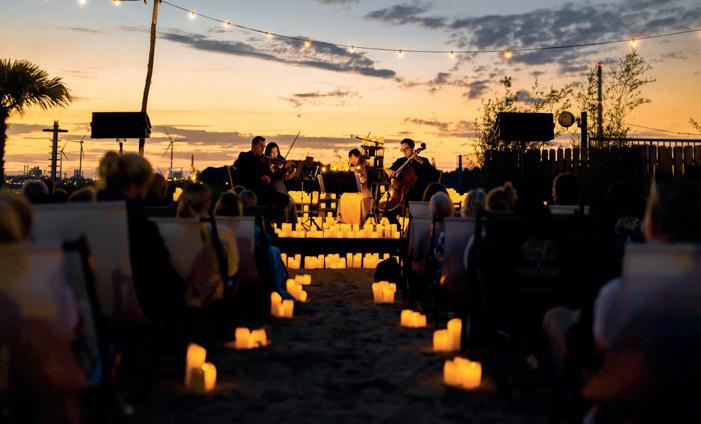
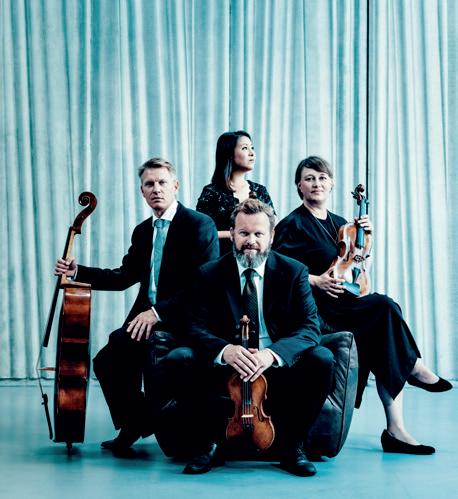
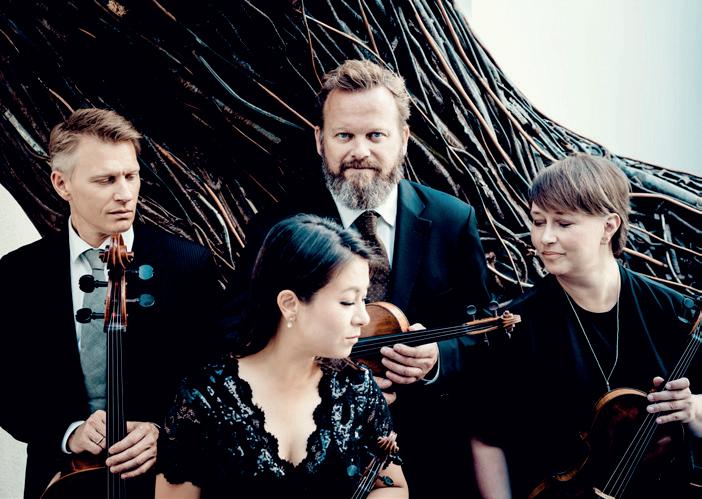
Experience of the Month, Denmark
Crossing borders: the world of
the Artos Quartet
Bringing together four seasoned musicians with long-standing orchestral careers and international backgrounds, the Artos Quartet thrives on collaborations. Based in Aarhus, the ensemble is deeply rooted in the Danish classical music scene yet works with composers, soloists, and musicians that extend far beyond their sphere, from jazz to rhythm and folk traditions. Their vision is clear: to expand the reach of chamber music and connect with as many audiences as possible.
By Signe Hansen | Photos: Andrej Grilc
Formed in 2018, the quartet brings together Tue Lautrup (violin, DK), Sarah Lucy Foldager (violin, US), Sanna Ripatti (viola, FI) and Brian Friisholm (cello, DK). “Our quartet sprang from a fundamental love of chamber music and the interaction it necessitates – it’s about really listening, being resonant with the people you work with,” explains violinist Lautrup. “When you are on stage, it’s like Formula 1 – you must have 100 per cent focus and presence – it feels like being out on an ice floe, where survival depends on alertness and on observing one another.”
That intensity is matched by a strong curiosity for collaboration. Alongside part-
nerships with classical colleagues – from Trio con Brio Copenhagen and cellist Andreas Brantelid to clarinettist Mathias Kjøller and pianist Tanja Zapolski – Artos has worked widely with jazz musicians and rhythm-section guests, programming everything from Shostakovich, Mozart, and Puccini to genre-blending evenings with vocalist Camilla Dayyani, saxophonist Chris Speed and bassist Anders Jormin. “We love jazz and rhythmic music,” Lautrup notes. “Playing with jazz musicians gives a different kind of inspiration than the tradition we come from.”
Just as the quartet delights in mixing genres, it also works hard to open doors for new audiences – curating the Artos
Festival, a chamber-music celebration in Aarhus each May, and staging informal pop-ups in cafés and community spaces.
Lautrup is equally enthusiastic about the ensemble’s forthcoming recording, Mols, Midt i en Symfoni, a major new work by award-winning trumpeter-composer Jakob Buchanan, with a unique story behind its title. “The piece began when Jakob bought a house in Mols from a folk musician’s son. While renovating, he found the musician’s old melody book and, sitting there in Mols, leafing through those tunes, he let them unfold into this work,” explains Lautrup. Rooted in folk melody, the score is written for string quartet and jazz quartet, pairing Artos with a jazz ensemble from the US.
On 19 October, you can experience Artos string quartet at Kulturloftet, Ebeltoft.
www.artosquartet.dk
www.artosfestival.dk
Facebook: Artos Kvartetten
Tue Lautrup (violin, DK), Sarah Lucy Foldager (violin, US), Sanna Ripatti (viola, FI) and Brian Friisholm (cello, DK).

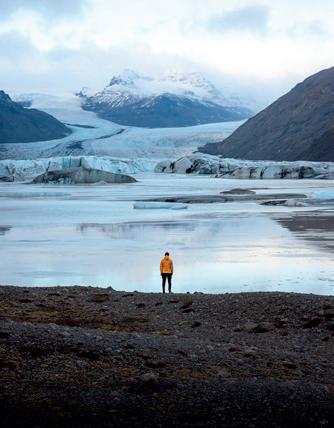
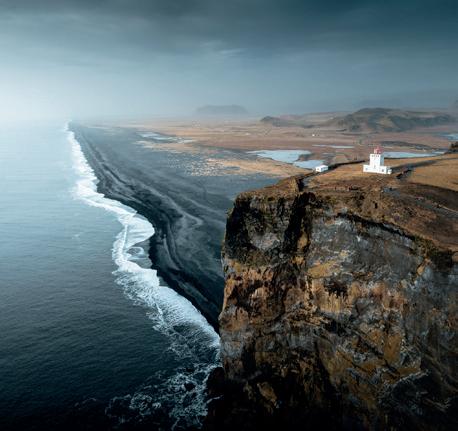
Destination of the Month, Iceland
The Volcanic Way: let eight volcanoes lead the way
For a new, slower, way to explore South Iceland and Reykjanes, check out The Volcanic Way. This route focuses on the volcanic landscapes and their surroundings, with eight major volcanoes leading the way.
By Malin Norman | Photos: Þráinn Kolbeinsson
The Volcanic Way is a curated route of 1,200 kilometres, connecting some of Iceland’s most iconic landscapes through the volcanoes that have shaped them. The volcanoes serve as reference points as you explore the surrounding regions in more depth.
“Designed by locals, The Volcanic Way shows how the local communities live in harmony with the landscape,” says Vala Hauksdóttir, project manager at Visit South Iceland. “This is sustainability at its core, showing how nature and the community can both benefit from tourism. It adds an extra level to your Iceland experience.”
When arriving at Keflavík Airport, the journey has already begun. The route passes well-known destinations, and some less known. “Expect volcanic landscapes, peaceful places, good food, friendly people, fascinating history, and unforgettable outdoor activities,” says Vala.
Visit South Iceland suggests an eightday itinerary, starting at the Reykjanes Peninsula. Here, you will see the Fagradalsfjall mountain ridge, the Bridge Between Continents, the Gunnuhver hot spring, and the famous Reykjanes lighthouse.
The Volcanic Way includes many other highlights, such as the enchanting Þjórsárdalur valley and the Commonwealth Farm, a Viking long house that archaeologists uncovered at a settlement abandoned after Hekla’s 1104 eruption. You will also see Heimaey in the Vestmannaeyjar islands, the largest island community in Iceland, which is near the Eldfell volcano and home to 5,000 people, plus countless puffins.
Other fascinating stops include the settlement at Kirkjubæjarklaustur, with curious geological features and historical sites. Underneath the mighty Vatna-
jökull Glacier are eight active volcanoes, including Öræfajökull – an area loved by photographers for its hexagonal basalt rocks, volcanic beaches and floating icebergs. And there is more: Reynisfjara beach and its quieter neighbour, Víkurfjara beach, in the charming town of Vík, the waterfall Skógafoss and the lesser-known Kvernufoss waterfall. Last but not least, the Hengill area with its geothermal spots, which the people of the town Hveragerði utilise for anything from bathing to baking.
Above all, The Volcanic Way is a slowtravel approach. “Without missing the must-see spots along the way, you will also visit quieter places, get in touch with nature and participate in the local culture,” adds Vala. “By learning about local cultures, choosing local produce and vendors, and spending more time in less-visited areas, you contribute to sustainable tourism.”
www.south.is www.visitreykjanes.is Instagram: @southiceland @visitreykjanes
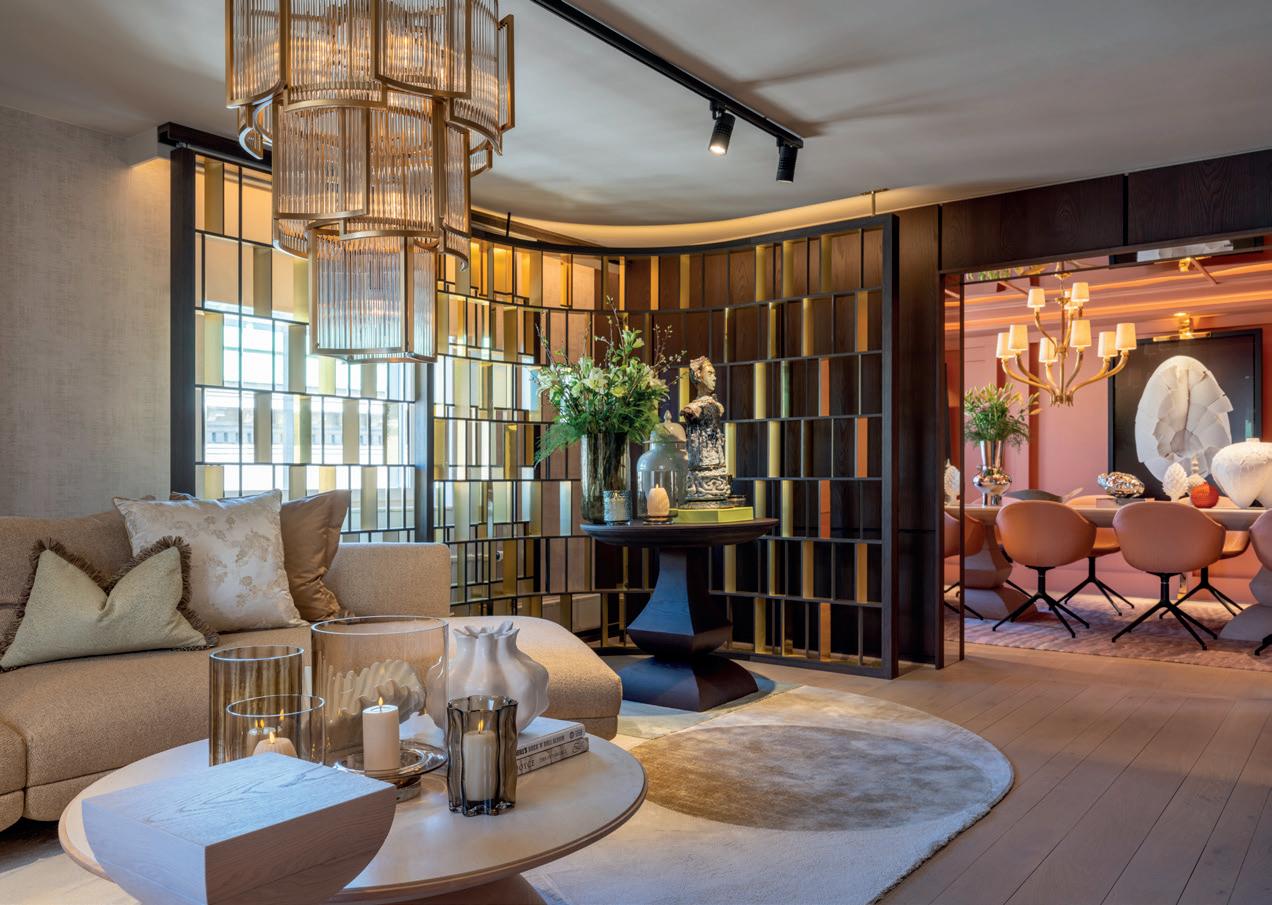
A royal experience, designed by Lars Wallin Hotel of the Month, Sweden
Radisson Blu Scandinavia Hotel in Gothenburg is home to the newly renovated Royal Suite, designed by the iconic haute couture designer Lars Wallin. Evoking the feel of a luxurious penthouse, this is one of Sweden’s most beautiful suites.
By
Malin Norman | Photos: Radisson Blu Scandinavia Hotel
Earlier this year, Radisson Blu Scandinavia Hotel in Gothenburg opened its newly renovated Royal Suite, inspired by a private penthouse in New York. With an elegant palette of pink, purple, terracotta and jade, as well as handpicked luxurious fabrics, the suite oozes French couture and American glamour. “I wanted to create a suite that reflects the hotel’s international character – a place with bold colours, multifunction-
al spaces, and a touch of glamour,” Lars Wallin said in a statement after the premiere in April.
Since 1986, the Royal Suite has been visited by world-famous guests and legendary celebrities as well as presidents and royals. “Our Royal Suite is one of the biggest and most beautiful in Sweden,” says Jessica Rivle, general manager. “Thanks to Wallin’s vision, the
suite has been brought back to life and is ready for the next chapter.”
Longstanding design collaboration
Guests will find a welcoming lounge, a dining room for up to 12 guests, a bedroom with a walk-in closet, a spa-like bathroom with a sauna, a work desk and a private bar. More than a place to stay, the suite is also a fantastic venue for events such as book releases, product launches, business meetings, and private dinners – called the Royal Suite Experience. “You can close off the bedroom and bathroom to use the suite for events, and you can even get your own bartender for the bar,” says Rivle.
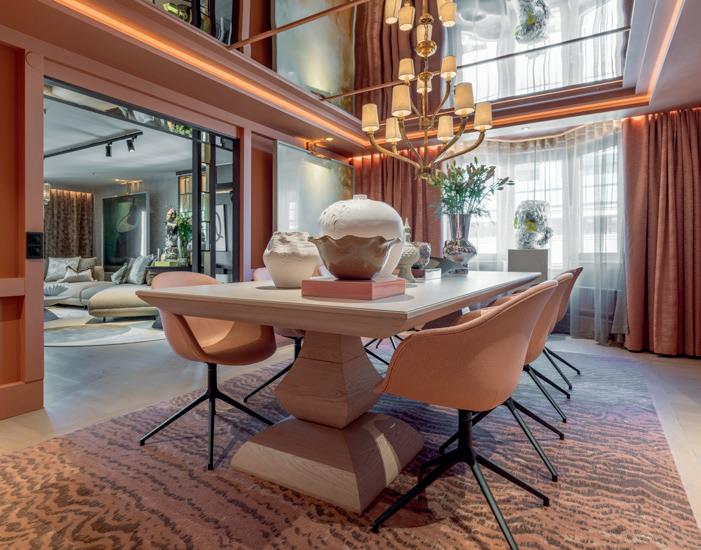
Wallin has also designed the suite’s tables, which will be available for purchase. In addition to the luxurious interior design, the suite showcases a curated selection of artworks in collaboration with Wetterling Gallery. The pieces will be rotated regularly, making each visit a unique experience – like staying inside a vibrant art exhibition.
Wallin has a longstanding collaboration with the hotel, previously designing Suite Lars Wallin. The corner suite radiates glamour and timeless luxury – ideal as a wedding suite, for celebrating a special occasion, or for treating yourself to something extraordinary. “Wallin has the ability to create environments that feel both exclusive and inviting,” says Rivle. “As a designer, he’s not just visually inspirational, he can really see the flow of a space, as well as the smaller details. Both suites designed by Wallin are magical, you just don’t want to leave!”
Over 35 years of fashion design
Lars Wallin has over 35 years of experience in fashion design, known for his elegant collections and glamourous garments for royalty, celebrities and stars around the world – seen at events like the Nobel Banquet and the Eurovision Song Contest.
Earlier this year, the art museum Artipelag in Stockholm featured a major anniversary exhibition called Lars Wallin Atelier – 35 Years of Fashion Stories. The exhibition paid homage to the iconic designer of Nordic couture, with unique insights into his creative process and over 140 handcrafted couture gowns, bridal dresses and stage costumes on display.
For his 60th birthday, Wallin inaugurated the Royal Suite – celebrating a milestone in style with 11 of his closest friends. On
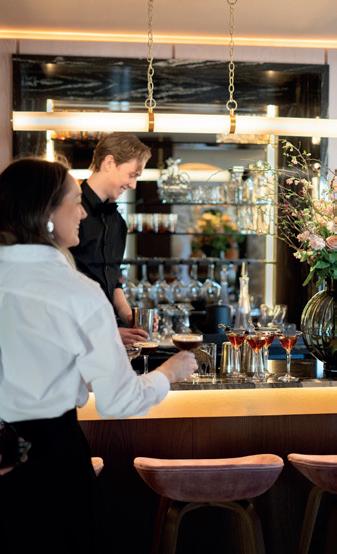
his social media, Wallin praised the Royal Suite Experience: “To be able to celebrate 60 years with the loveliest friends in an environment I designed myself. Wow.”
Top-notch cuisine and amenities
Radisson Blu Scandinavia Hotel features 355 rooms, of which 38 are suites. The hotel is conveniently located in the heart of Gothenburg, just minutes from the central station and close to top sights and shopping, such as Nordstan Mall and NK.
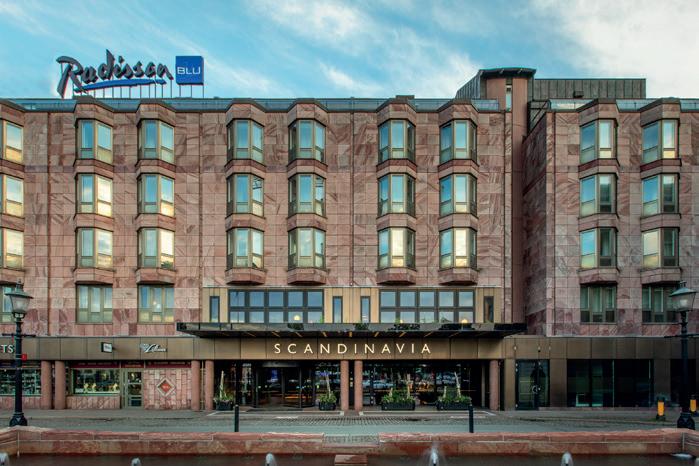
The hotel has two restaurants and bars.
Atrium Bar & Restaurant is a stylish, spacious venue with an international vibe and all-day dining, while Noot Nordik Kitchen & Bar showcases Nordic cuisine crafted from seasonal ingredients.
On weekends, Atrium offers a popular brunch, often with themes such as yoga brunch and jazz brunch. And 3 October marks the start of the popular BLU Friday sessions, which will take place every Friday from 4-9 pm. Expect live entertainment with the duo Crazy Lager & Pipistrello, as well as delicious food, drinks, and a great vibe.
Guests in the Royal Suite get free access to a 24-hour gym and yoga sessions at Hagabadet Spa & Yoga Studio, as well as the concierge service and the executive lounge, with opportunities to catch up on work, enjoy a coffee or a snack, and just relax.
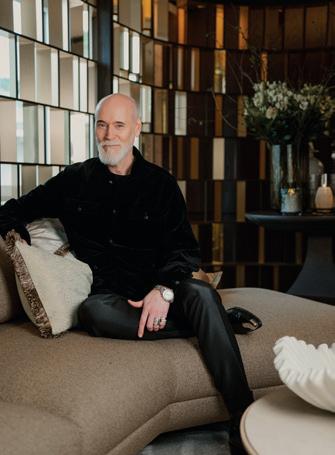
www.radissonhotels.com/en-us/ hotels/radisson-blu-gothenburgscandinavia
Facebook: RadissonBluGothenburg
Instagram: @radissonblugothenburg
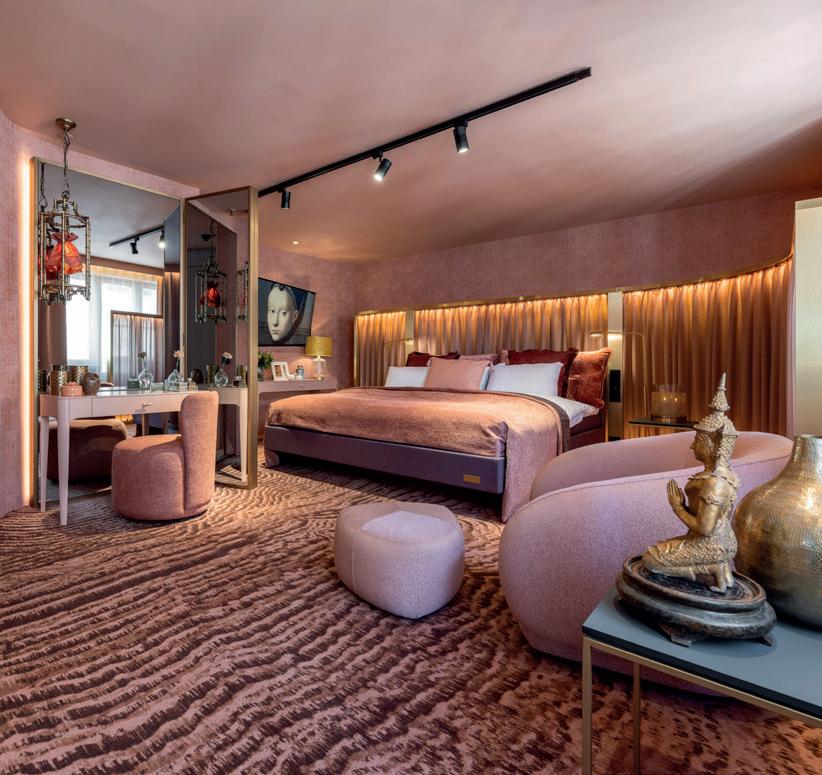
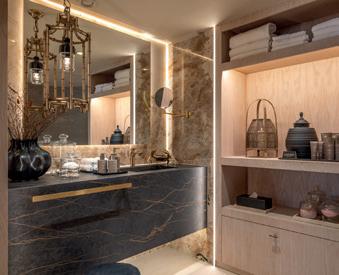
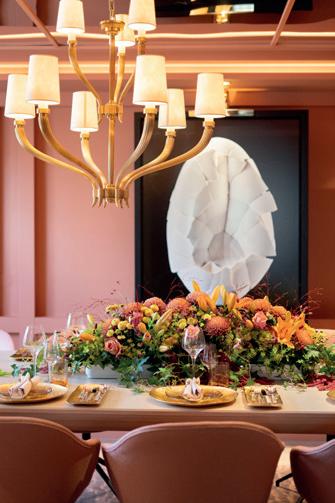
About the Royal Suite
• The Royal Suite features a bedroom, a bathroom with a sauna, two extra toilets, a work desk, a bar, a lounge, a kitchenette, and a dining room for up to 12 people.
• A connecting room can also be added to the booking.
• Tables designed by Lars Wallin will soon be available to purchase.
• All art shown by Wetterling Gallery and Torsten Jurell is available for purchase.
• Guests get free access to gym and yoga, concierge service, and executive lounge.
• Beyond accommodation, the suite serves as an exceptional venue for events, business meetings and private dinners. This is The Royal Suite Experience.
• The suite is 160 square metres.
Lars Wallin.
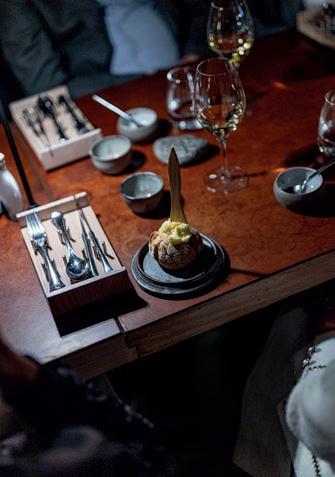
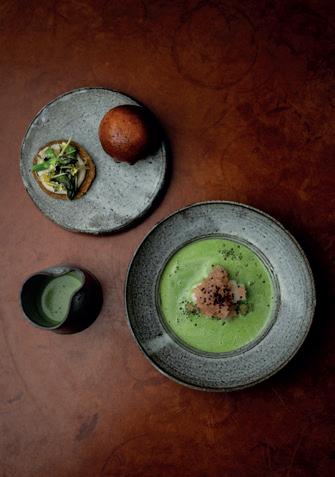
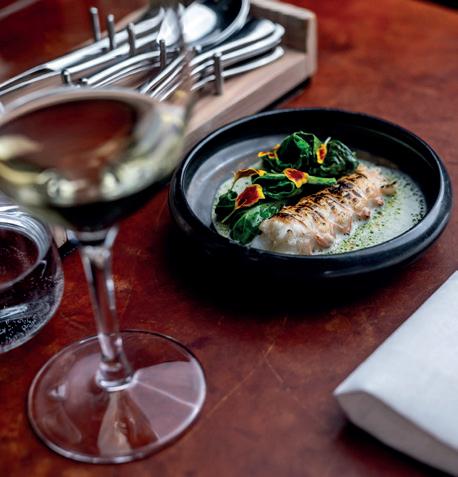
Restaurant of the Month, Sweden
Fuss-free fine dining
Koka, central Gothenburg’s acclaimed Michelin restaurant, challenges the notion that fine dining needs red meat to be exceptional. Nor does a vegan menu equal boring, and gluten free dishes produce the same explosion of flavours as any traditional plate. With a strong commitment to organic and locally sourced ingredients, backed by numerous awards and accolades, Koka has established itself as a top culinary destination for gourmet dining in Sweden.
By Nina Bressler | Photos: Koka
Koka has been part of the Gothenburg restaurant ecosystem for decades. Opened in 2000, it quickly became a celebrated location for fine dining in Sweden, voted number three of the best gourmet restaurants in the country. By the early 2010s, the people behind the success decided it was time for a new challenge and set upon the revamp that became Koka. Their dedicated focus remained on exquisite flavours, but additional frills were dropped. With less white tablecloths and cutlery-changes and a more relaxed, familiar atmosphere, they have earned the title “most price-worthy fine dining restaurant in Scandinavia” two years in a row.
While Koka has not completely ruled out red meat on its menu, it is rarely included in dishes. “We believe that putting the best produce in the spotlight creates new,
unexpected flavours that add a wow factor to every dish. Our chefs are masters in extracting the essence of a product, through combinations that celebrate inherent flavours in unexpected ways,” says Björn Persson, founder of Koka. “Our area has so much fantastic produce, and we only use local seafood, oysters, mushrooms, vegetables – organic, and without waste.”
In addition to the restaurant, the neighbouring bar, aptly named Björns Bar, is a Gothenburg institution and a watering hole for the thirsty and hungry – serving smaller gourmet dishes until late every day of the week.
While the unwavering focus remains on gourmet food, Koka’s philosophy is rather simple according to Persson: “We want people to come back, because they
believe our food is so ridiculously good.”
The awards, celebrations and the fact that one of the chefs is a finalist in the Swedish 2025 Chef of the Year, might be enough indication Koka has got it right, but as the saying goes – the proof is in the pudding. Book a table and head over there to try it for yourself.
www.restaurangkoka.se
Instagram: @restaurangkoka
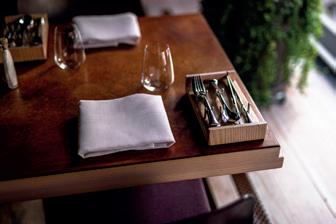
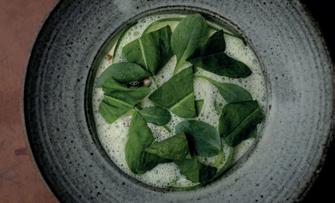
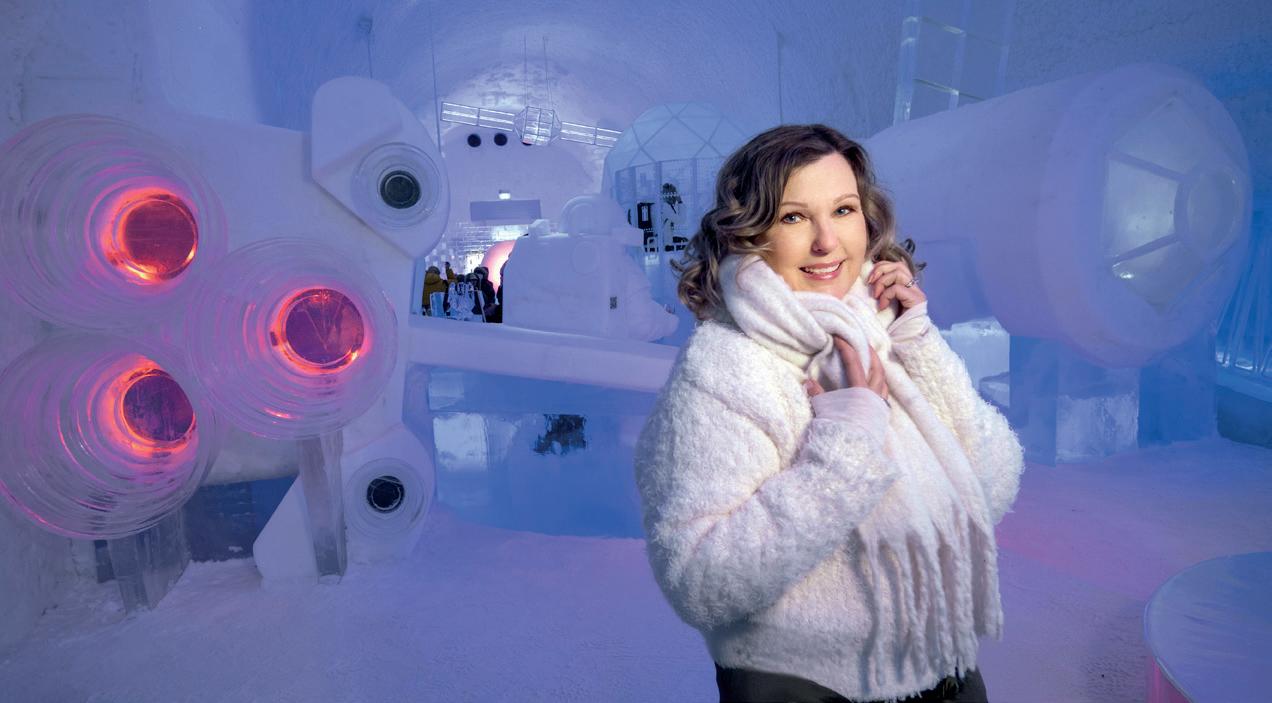
Bar of the Month, Denmark
ICEBAR by ICEHOTEL –behind Copenhagen’s new arctic gem
Have you ever wondered what happens when you combine a passionate entrepreneur with the majestic Torne River and the frozen conditions of the Swedish north? Behold; the iconic ICEHOTEL in Jukkasjärvi – a hotel completely constructed in ice, which has drawn visitors from around the world for over 35 years with its unique blend of Arctic beauty and art. Now, another awe-inspiring venture awaits – the opening of ICEBAR BY ICEHOTEL COPENHAGEN.
By Nina Bressler
Nestled in the northernmost tip of Sweden, the ICEHOTEL and its extraordinary ice design has become a global phenomenon, and 2025 marks the beginning of its expansion into Europe with the launch of ICEBAR. First up: Copenhagen.
Origin: Torne River settles in Copenhagen
On 7 November, ICEBAR BY ICEHOTEL COPENHAGEN opens in Strøget, providing a journey into the Arctic in the heart of Copenhagen. Fifty tonnes of ice blocks, sustainably transported and harvested
from Torne River, will become part of this unique experience and, similarly to ICEHOTEL, the bar will change shape every year.
“Water is the cornerstone of our existence and this year’s theme, Origin, is a tribute to the Torne River flowing freely across borders. We invite guests to step into another dimension – shaped by ice, water and imagination,” says Marie Herrey, CEO of ICEHOTEL. Guests will be welcomed into a warm reception, given a cloak and
gloves, and led through a lock introducing them to the magic of the Arctic, before stepping into the frozen bar area –promising a spectacular experience like no other.
The creation of an icon
The ICEHOTEL in Jukkasjärvi is, quite literally, the only of its kind. The idea was formed in 1989 by entrepreneur Yngve Bergqvist, who came to the area to ski but stayed for the raw beauty that defines the Swedish north. Bergqvist was enthusiastic about rafting and started a local tour business on the Torne River, a 520 kilometre stretch of water that connects Sweden with Finland. When the river froze during the winter, Bergqvist decided to sink his entrepreneurial teeth into another project by utilising the river in another – rather unexpected – way. What started as an art gallery made from
Marie Herrey, CEO of ICEHOTEL, inside ICEBAR Jukkasjärvi. Photo: Thomas Engström
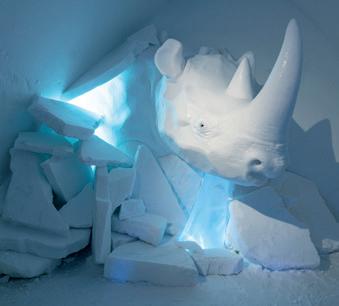
ice gave way to ICEHOTEL and fast forward to today: a global attraction that has fascinated and accommodated hundreds of thousands of guests since.
A construction of ice and snow
Building the hotel is a process unlike any other. Ice is harvested every year from the Torne River in massive blocks along with snice, a mix of snow and ice, used for building floors, walls, and ceilings. “With the hotel born from and returning to water after every season, the harvest is a tribute to our natural conditions. It’s a challenge requiring flexibility, collaboration and harmony with nature,” Herrey adds. The hotel consists of up to 55 rooms, with 12 being unique art suites – forged in ice, with exclusive sets of art that have been purpose-built that year.
In addition to the seasonal ICEHOTEL, ICEHOTEL 365 consists of 18 permanent rooms made of ice open all year round.
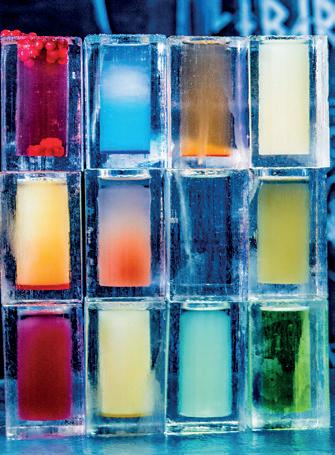

From classic art suites to luxurious deluxe suites, complete with private heated bathrooms and saunas, these rooms provide an experience beyond the ordinary. The hotel is appropriately equipped to withstand the arctic cold: snowsuits and boots, furs and saunas, along with a separate section with warm hotel rooms and cabins that ensures warmth when temperatures drop.
A
living art exhibition
The hotel is a living monument of art –objects, sculptures and design will melt away when spring arrives, reuniting with the Torne River. “Planning, designing and constructing an entirely new hotel with such a distinct identity every winter is no mean feat. Every year, a jury selects a group of artists that will create ice art installations for the next season – applying their unique vision for a brand-new exhibition space that will be available for just a few months,” says Herrey. “The art
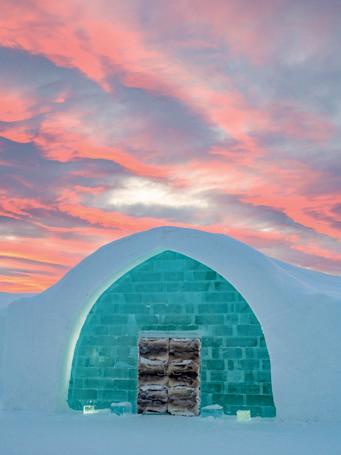
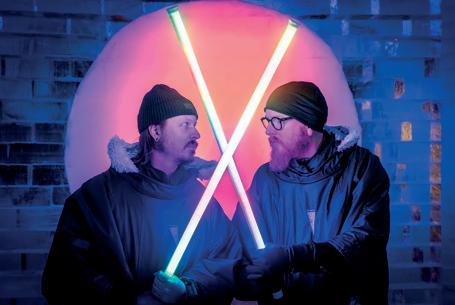
plays a vital part of what makes this experience so unique: it’s a space completely forged by creativity and craftsmanship, constructed with one of our most fundamental natural elements in a pristine location in the Swedish north. It’s a combination you don’t find anywhere else on the planet.”
Continuing the legacy
While ICEBAR BY ICEHOTEL COPENHAGEN is the first one of its kind, the concept is being brought to more locations around Europe. Herrey concludes: “ICEBAR is an extension of our fundamental relationship to nature and water. It’s about bringing the raw, pure experience of the Nordic wilderness into the world and carrying the legacy of ICEHOTEL forward – with the same pioneering spirit it was founded in.”
www.icehotel.com
Instagram: @icehotelsweden
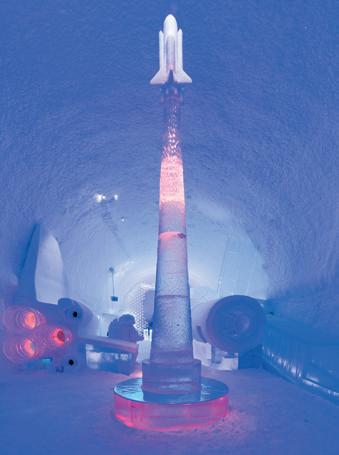
Photo: Asaf Kliger
Have a drink in ICEBAR BY ICEHOTEL COPENHAGEN – with glasses made of ice. Photo: ICEHOTEL
Photo: ICEHOTEL
The artist duo behind ICEBAR BY ICEHOTEL COPENHAGEN – Karl Johan Ekeroth and Christian Strömqvist. Photo: Asaf Kliger
WHOOPS WRONG ROOM!! by AnnaSofia Mååg. Photo: Asaf Kliger
Harvesting ice on Torne River. Photo: Asaf Kliger
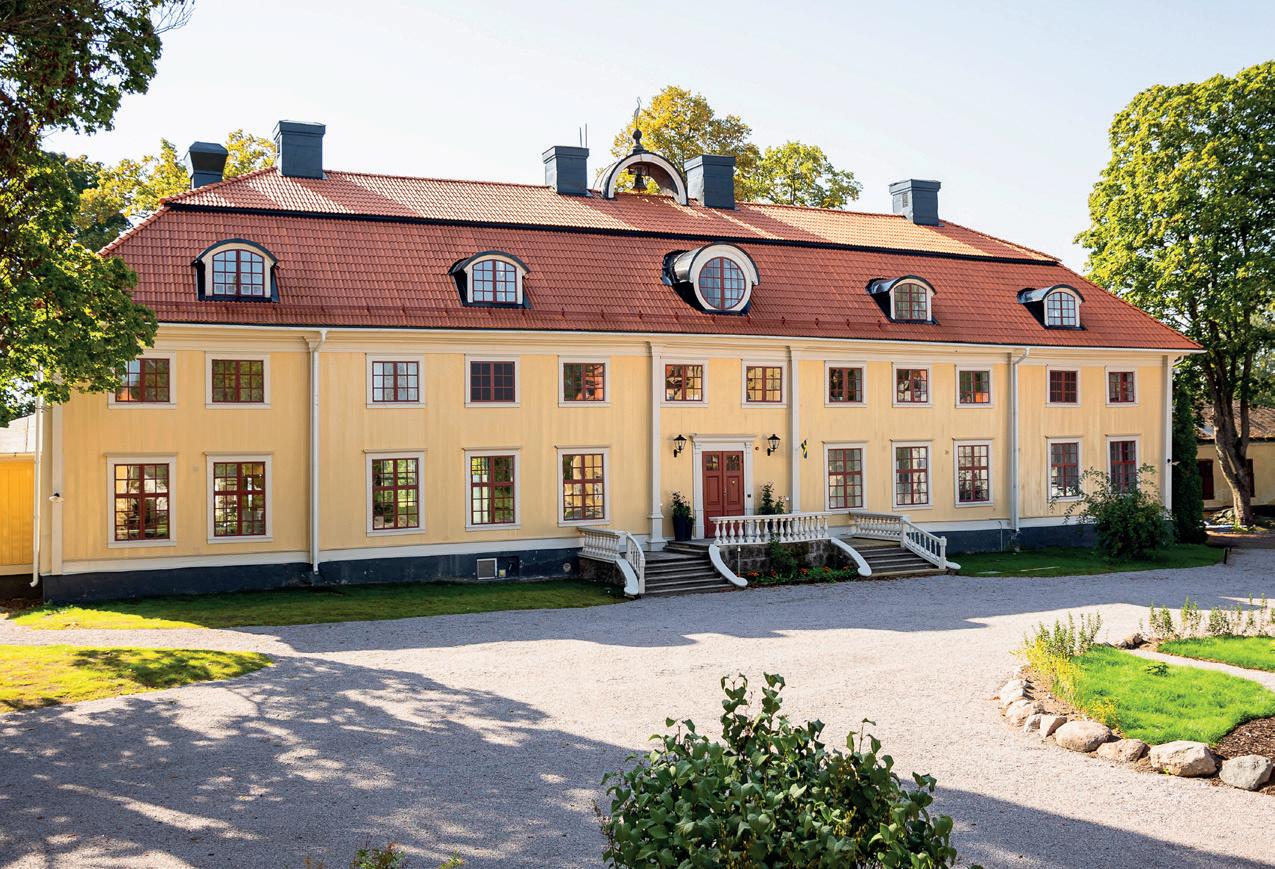
Conference of the Month, Sweden
Söderfors Herrgård: where luxury meets history
At Söderfors Herrgård, guests stay in elegant rooms with historic charm and views of the garden and the river Dalälven. Here, cultural heritage meets modern comfort – the ideal setting for a fruitful conference, a romantic weekend, or a quiet getaway.
By Malin Norman | Photos: Söderfors Herrgård
Söderfors Herrgård is a historic manor house in the heart of Uppland, built in 1690 by Claes Anckarström. The village Söderfors has a heritage as Sweden’s only anchor smithy, producing anchors for the navy since the 17th century. Over the years, the manor developed into a historic cultural centre, and today guests can experience the wings of history throughout the hotel.
Under new management and owners since 2023, the manor has undergone a gentle renovation and has been transformed into a luxurious waterfront resort with 45 guest rooms, spa and gym, restaurant and bar – everything tastefully decorated whilst keeping history alive.
“We offer exclusive accommodation in four different buildings, each with its own history and style, with preserved details from the 17th century,” says Alex Paloranta, CEO. ”On the banks of the river Daläl-
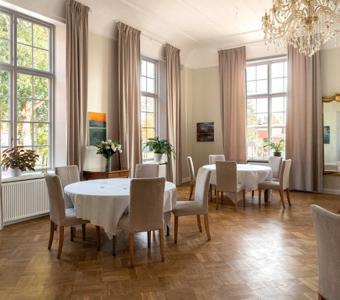
ven, we offer food, entertainment and activities all year round in a unique historic manor house environment.”
Quality, comfort and inspiration
Söderfors Herrgård provides a conference experience that combines historic charm with modern comfort. Surrounded by lush nature and stunning architecture, the manor is an inspiring and peaceful environment, where new ideas can emerge and team spirit is strengthened.
The elegant meeting rooms are equipped to meet today’s demands for productivity and technology, while the salons and scenic surroundings create a balance between work and relaxation. Choose from half-day, full-day and two-day packages, or opt for tailor-made arrangements with activities and accommodation.
“Wake up to the tranquillity of the river Dalälven and start the day with a gener-
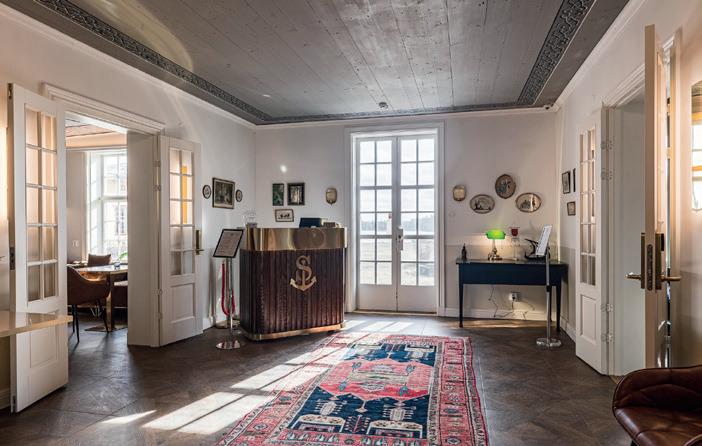
ous breakfast in our restaurant before the conference continues,” says Paloranta. “Söderfors Herrgård provides your conference or business meeting with a unique setting where history meets today’s demands for quality, comfort and inspiration.”
Relaxing spa and sauna boat
Comfortable overnight accommodation awaits in the main building and the beautiful wings. Each building has its own character and offers different amenities, perfect for both relaxation and adventure, and ideal for festive events and weddings.
The manor also tempts with a relaxing spa that features Jacuzzi, saunas and massage treatments. As a hotel guest or a member, you have access to the newly opened and fully equipped gym for strength, fitness and mobility training –it has everything you need for a great workout.
“Guests can also relax in our wood-fired sauna boat,” says the CEO. “Up to 12 people can enjoy the warmth of the sauna and the tranquillity of the river Dalälven. Combine with dinner and an overnight stay at the manor – for ultimate relaxation.”
Söderfors Herrgård encourages guests to explore the unique halls, try activities such as tennis and lawn games, and discover the garden and its surroundings during their stay. Within 30 minutes’ drive,
you will also find golf courses, castles, and sites with Viking history.
Top-notch food and events
The dining room, with original hand-painted ceilings from 1690, serves classic dishes with a modern twist. The restaurant offers lunch, dinner and seasonal menus all year round, with a focus on sustainability, quality and taste – with vegetables, meat, fish and poultry from the region taking centre stage. “Our chefs create top-notch dishes based on produce from the rich variety of farms in Uppland,” says Paloranta.
The classic Christmas culinary experience, Julbord, kicks off on 28 November.
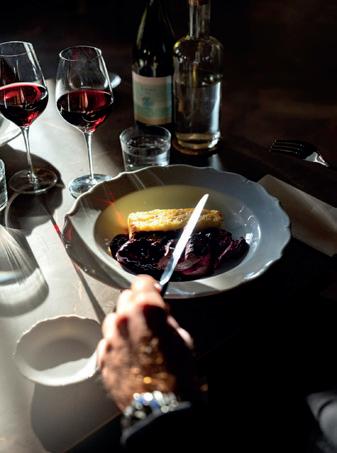
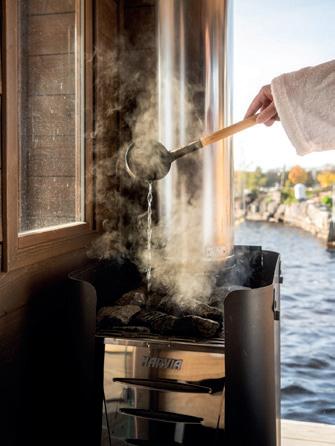
“Last year, we had around 1,500 guests enjoying our Christmas smorgasbord, and we’re hoping for even more this year. On 6 and 13 December, you can also visit our popular Christmas market.”
Experience memorable events at Söderfors Herrgård, from music quizzes, live music and theme dinners to seasonal parties and special evenings. Whether planning a romantic weekend, a wedding or a professional business event, Söderfors is an exceptional environment where history, tranquillity and quality are at the core.
www.soderforsherrgard.se
Facebook: Söderfors Herrgård
Instagram: @soderforsherrgard
This autumn sees a range of activities and events at Söderfors Herrgård, including:
3 October, Live music with Crossing Borders Band & DJ
11 October, Murder theatre and threecourse dinner
18 October, Stand-up comedy, an evening of laughter & food
25 October, Oktoberfest: food, music, beer
28 November to 21 December, Classic Christmas smorgasbord (Julbord)
6 and 13 December, Christmas market
31 December, New Year’s Eve supper and party!
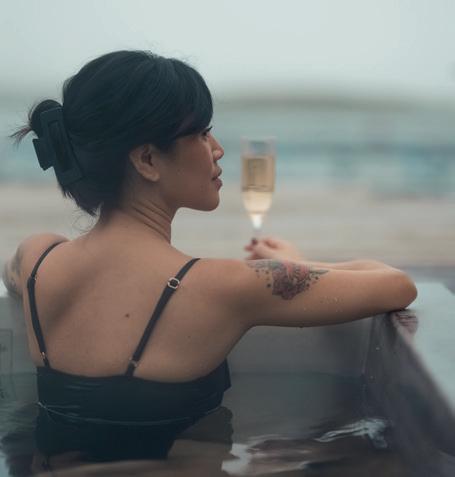
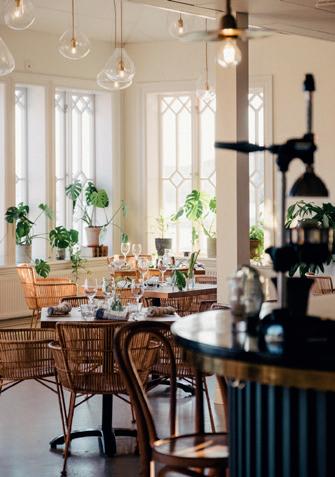

Conference of the Month, Sweden
Sea, serenity and scenic inspiration
Strana, a picturesque destination in the Bohuslän archipelago, distils seaside life into a boutique experience. Its newly opened Ocean Spa and diverse range of activities make it ideal for large and small groups. As summer visitors depart, the hotel shifts gears for a busy autumn – with the perfect backdrop for inspiration, growth and relaxation.
By Nina Bressler | Photos: Strana
Strana opened five years ago and quickly became a prime spot for an idyllic stay on the island of Orust. While Bohuslän might be a popular destination in summer, a visit is just as highly recommended during autumn. Though the sun might be in shorter supply, the change of the seasons provides a calmer experience, more closely connected with the surrounding nature. Plus, an even better excuse to enjoy the spa.
”Strana Ocean Spa is a completely new space, designed for relaxation. We created it in the same boutique spirit as the hotel with small, intimate spaces for elevated harmony and calm, by incorporating natural materials into the design. Guests can enjoy everything from hot baths and treatments to saunas and lounge areas in a truly exclusive and serene environment,” says Isabelle Carlund, CEO and co-founder of Strana.
The hotel provides excellent conditions for conferences and can accommodate groups from eight to 30 – or up to 100 with an exclusive Strana Takeover. Twelve hotel rooms of varying sizes and eight seaside houses provide comfortable sleeping arrangements. The Ocean Hut provides a unique glamping experience on the water.
Numerous activities can be arranged depending on needs and interests: from RIB boat tours, to yoga classes, wine tasting, kayaking, and more. While the restaurant serves local delicacies from sea and land, cooked with care and expertise, Bassotto Pizza, a stone’s throw away from Strana, provides wood-fired pizzas.
The hotel offers a classic, tailored experience, with an emphasis connecting guests with the surrounding landscape. ”Bohuslän has a very distinct identity, and Strana is designed in the same spirit,
with a modern twist,” says Carlund, and concludes: ”We have a sense of calm during the autumn season, and Strana is the perfect spot to reconnect – as teams and individuals.”
www.hotelstrana.com
Instagram: @hotelstrana
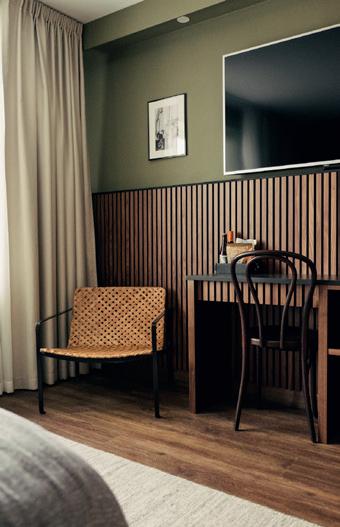
Boutique hotel rooms.
Strana Ocean Spa.
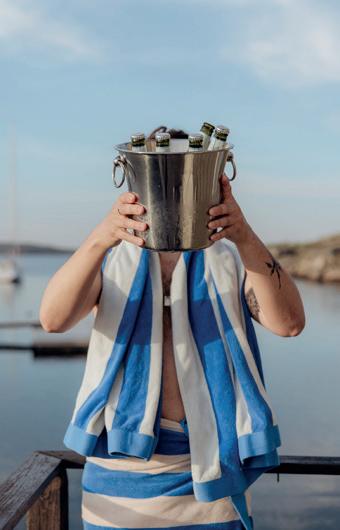
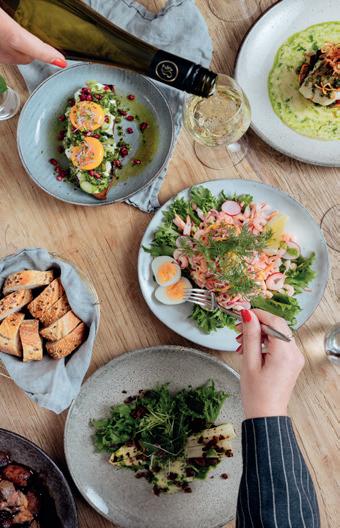
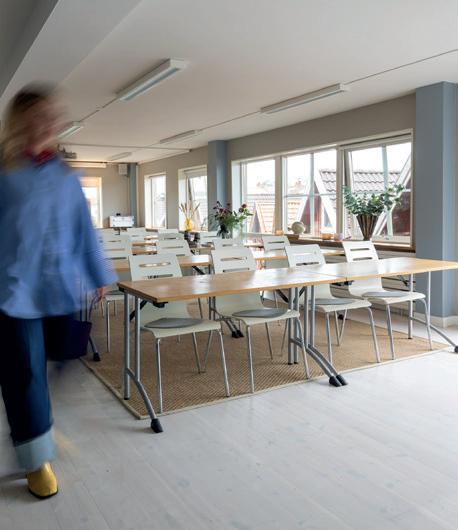
Conference of the Month, Sweden
A hidden gem on the West
Coast of Sweden
Like its sister destination, Strana, Björholmen Hotel & Restaurant sits in the Bohuslän archipelago, on the neighbouring island of Tjörn. The hotel is a gem for tourists and locals, known for its welcoming atmosphere and close connections with entrepreneurs and businesses around the island. With a restaurant focusing on local delicacies and a wood-fired sauna overlooking the neighbouring sea, it is a perfect getaway for small and large parties alike.
By Nina Bressler | Photos: Björholmen Hotel & Restaurant
Björholmen is an old fishing village in a secluded part of Tjörn, with deep roots within the fishing community – still a prominent feature of the area to this day. Its picture-perfect location right next to the sea and harbour, embedded into the rocks and cliffs, makes this a rare haven for visitors looking for a tranquil spot steeped in nature.
“Björholmen’s proximity to undisturbed nature is unique, and the business is rooted in our connection with the landscape and the people around us. Our primary focus is to provide a friendly, genuine service: to make our guests feel at home, whether it’s a small group or a conference,” says Ida Standar, area manager at Björholmens Marina.
The hotel has 24 rooms overlooking the sea and the Bohuslän cliffs, and can accommodate everything from small reservations to bookings of up to 100 people. The sauna, built on the cliffs by the sea,
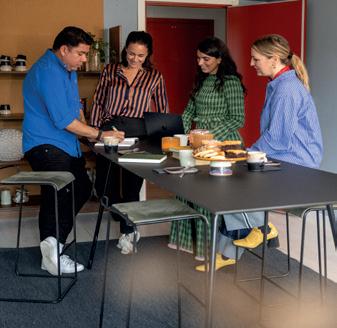
provides ideal conditions to relax and soak up the beauty. The restaurant focuses on seasonal dishes that are commonly found in the area: from freshly caught fish, mussels, seafood and vegetables, to meat, dairy and cheeses from nearby farms.
“We’re utilising local produce and craftsmanship as much as we can. Our location and collaboration with local entrepreneurs give us a rare flexibility to tailor the bookings completely to our guests’ demands, and we can provide experiences distinctive to this area,” says Standar. Think seal safaris, paintball on your own island, RIB boat tours, nature tours with a local guide, cooking classes with freshly caught seafood, lobster fishing – only the imagination sets the limit.
“Björholmen is a magical spot and as seasons change, our aim remains the same: to give our guests a lasting impression of hospitality, warmth and unforgettable memories,” Standar concludes.
www.bjorholmensmarina.se
Instagram: @bjorholmensmarina
The woodfired sauna with view over the sea and cliffs.
Björholmen provide a perfect place for small and large groups.
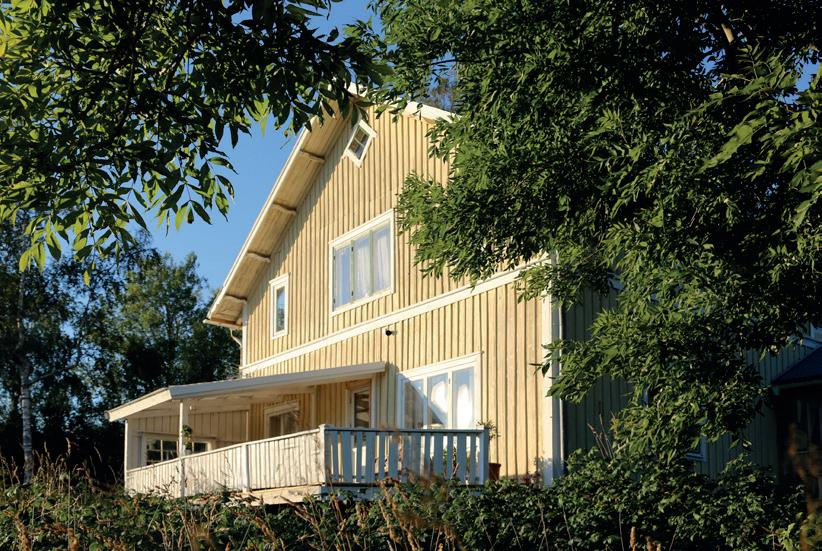
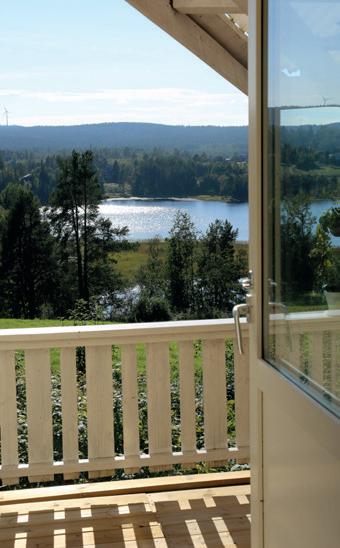
Conference
of the Month, Sweden
A tranquil destination for creativity and focus
For the perfect workation, small-scale conference, course or kick-off, head to Näs Gård. Tucked away on a large lakeside property along the beautiful High Coast in Sweden, this is the ideal place to find creativity and focus – at your own pace.
By Malin Norman | Photos: Näs Gård
The picturesque Näs Gård offers a different kind of experience. With its quiet setting and cosy ambiance, the 120-yearold homestead has everything you need – and heaps of rustic charm. The two cottages, Storstugan and Lillstugan, exude a warm character and a peaceful soul. In addition to eight bedrooms, Näs Gård features a conference room, an office, two lounges, two fully-equipped kitchens, bathrooms, a sauna, and terraces with a view of the lake.
“Whether you’re organising a small-scale conference, a business meeting for making important decisions, a team building activity or a course, or perhaps a workation for yourself, we have everything for you here,” says Madeleine Person, who runs Näs Gård. “We can rearrange the rooms, including our versatile loft space, depending on the setup you need.”
At your own pace, explore the surroundings or just enjoy the privacy. As part
of the property is a trail leading up to a viewpoint. By the lake, you can swim, or try activities such as canoeing or fishing, just a hundred metres from the cottages.
“The silence in this setting also works really well for people involved in creative projects, such as filmmakers, authors and musicians,” adds the owner. “The peace and quiet does something to you, it boosts the creativity.”
In summer and fall, the area is ideal for excursions with its bright summer nights and lush, varied, and inviting
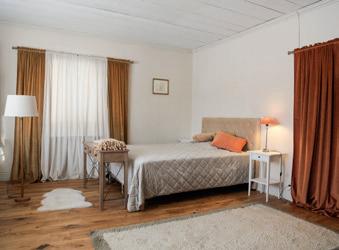
nature. Home to more than 100 nature reserves and a renowned national park, the High Coast’s unique geology earned World Heritage Site status in 2000. The 135-kilometre High Coast Trail is considered one of Sweden’s signature hiking trails and offers accessible routes for all.
Not far from Näs Gård, local culinary experiences and entertainment at Hotell Höga Kusten and Björkuddens Hotell & Restaurang await. Also, among other things, you can take part in tastings at the award-winning Hernö Gin and High Coast Whisky – both with renowned restaurants.
“The High Coast is a fantastic destination all year round,” adds Person. “Winter is guaranteed to be white, with the perfect average temperature for outdoor activities, and there are excellent winter sport facilities without queues in less than an hour’s drive. During the long, dark winter evenings, cosy up by the crackling wood stove. This is a relaxing and sustainable alternative to the Swedish Alps.”
nasgard.se
Family adventures in the heart of Lapland
Tucked between Ivalo and Saariselkä, Ilonka offers more than just huskies and snowy trails: it is a place where families reconnect, children lead husky teams, and lifelong memories are made.
Photos: Ilonka Farm and Cafe
Ilonka is a family-run husky farm and adventure company that specialises in immersive, nature-based experiences tailored to travellers of all ages. Founded by Lilli Nurmi, Ilonka was born from a dream to share Lapland’s wild beauty and rich cultural heritage through meaningful, sustainable travel. “We want our guests to feel like they’ve stepped into another world, one filled with nature, animals, stories and wonder,” she says.
From winter husky sledding, where even children may take the reins under expert supervision, to guided husky walks under the midnight sun – every season offers new ways to explore. In autumn, nature’s golden palette sets the scene for foraging and cosy moments by the fire -
place. Come winter, the snow-covered landscape becomes a playground for little adventurers and a haven for grown-ups seeking quiet wonder.
Ilonka’s adventures include familyfriendly, interactive farm visits, kids and family husky sledding, husky walks, Northern Lights excursions, dog sledding tours into the wilderness, hiking tours, foraging, handicrafts and traditional sauna experiences. The connection with nature and animals is always central, sparking joy and curiosity in kids while grounding adults in the rhythms of the wilderness.
With small group sizes and a warm, personal approach, Ilonka invites each guest –young or old – to slow down, breathe in the crisp air, and feel the wonder of Lapland
from the eyes of a child. Because here, the adventure is not just in the landscape: it is in the shared stories, laughter and moments that families carry home forever.
www.ilonka.fi/en
Facebook: ilonkalapland
Instagram: @ilonka_lapland
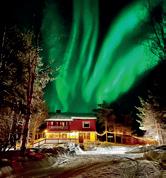
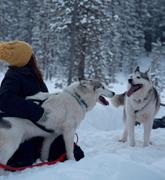

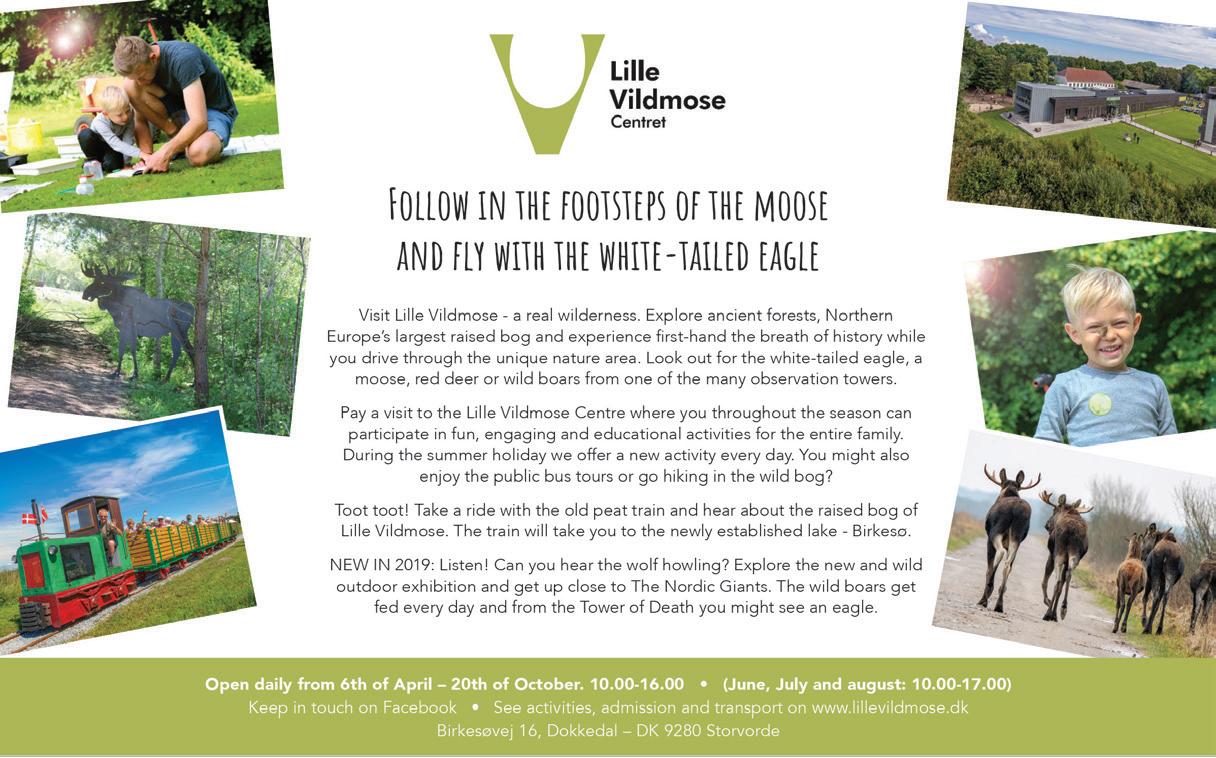
New Scandipop sounds
A selection of new Nordic pop to push play on.
Songwriter to the superstars Ina Wroldsen is writing for herself again, and she’s back with not one but two top-tier pop offerings. The ‘double a-side’ single is a yin and yang approach. On the one side, we have Stay; the hard-hitting story of a toxic relationship told from the perspective of a person who hasn’t yet realised that they can get out of it. And on the other side, we’ve got Happy Ever After; delving into the lighter and fluffier side of relationship woes, but given from the perspective of a person who is seemingly threatening to get out of it on a daily basis!
The former sounds like it could have been a Kygo collab, with the latter coming across as a lost ABBA classic. Both showcase why Norway’s Ina Wroldsen is just as vital to pop music as an artist as she is as a songwriter.
BATHSHEBA has teamed up with her fellow icons of the Danish music scene Safri
Duo for a song that presents another pairing for your ears – a chill-house and dancehall hybrid! Baya (Take Me Away) is a tropically warm blanket of sound to be enjoyed the second you press play.
Sweden’s Omar Rudberg has delivered a vocal performance for the ages on his brand-new single. Dying initially brings to mind classic Queen in its melody, before fully doubling down on those Queen references as the production starts to fully blossom. But with that vocal, Omar unmistakably ensures that listeners know that it’s his song. A theatrical ballad with bags of personality.
Norwegian artist Anna of the North has long mastered the Nordic craft of turning heartache into hit-potential pop of epic proportions. And she’s got another example of it to immerse yourself in. Her new single Waiting For Love is three minutes of elec-
By Karl Batterbee
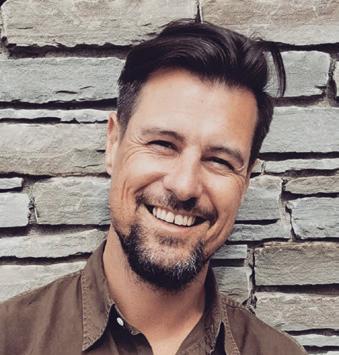
tronic existential euphoria, followed by an extended outro of a robot trying its hardest to hold on to hope. Poetic, really.
www.scandipop.co.uk
Monthly Illustration On the pros and cons of the Scandi footbrake
By Gabi Froden
My children have now reached the age where they can jump on bikes and simply ride away, without me holding on or helping them at all. They seem to absolutely love the freedom, and I remember the feeling from my own childhood. I would cycle everywhere: to my pals, to school, to the library. Admittedly, Sweden is better set up for the cycling lifestyle. Where I live now, in Glasgow, there is one cycling path into town, but nothing around the neighbourhood, and the cars believe they have the right of way absolutely everywhere. So, my kiddos won’t be cycling around freely anytime soon, that’s for sure.
But when we were back in Sweden over the summer, they swooshed around the place on wheels, wind in their hair, happy shrieks. However, there is one big difference between cycling in Sweden and cycling in the UK. Apart from the obvious and already mentioned attitude to cycling. Namely, the brakes!
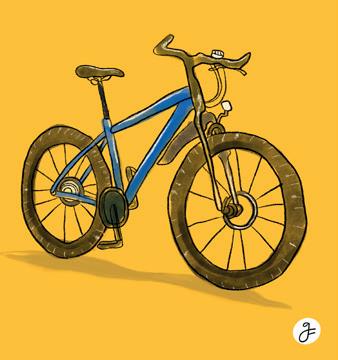
In the UK, you can let your pedals spin backwards as much as you want, and you use the handbrakes for stopping or slowing down. But in Sweden, many bikes have a brake built into the pedalling machinery. You brake by going backwards on the ped-
als. This causes a lot of confusion and frustration for those who learned to cycle in the UK. My husband once fell off a bike in Sweden and proclaimed it was broken. Turned out, he couldn’t work the footbrake.
My kids are happy to be back on their British bikes, but I can’t help wondering: in a place where cyclists have to be prepared to quickly get out of the way of a car, wouldn’t an extra break be helpful? Should we start importing Scandi bikes?
Gabi Froden is a Swedish illustrator and writer, living in Glasgow with her husband and two children. Her children’s and YA books are published in Sweden by Bonnier Carlsen and Natur&Kultur. www.gabifroden.com
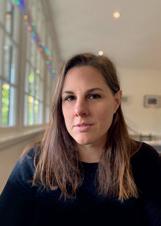
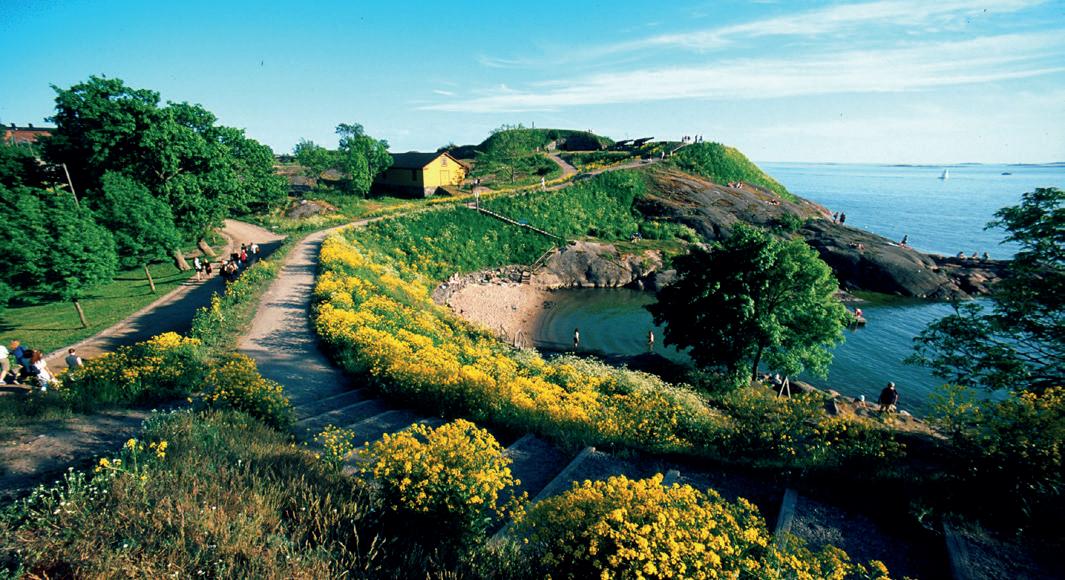
Nordic countries push sustainability in film and TV
This month, we explore the Nordic countries’ leadership in imbedding sustainability in the film and TV sector.
In September, Nordic collaboration on sustainability took another step forward with the Nordic Ecological Standard (NES), a joint standard for sustainability. According to the stakeholders behind the new standard, the aim is for the Nordic film and TV industry to reduce its climate footprints.
The Danish Film Institute developed the standard with its Nordic counterparts and the Nordisk Film & TV Fund; it builds on existing, tested standards in Germany and Austria. A large coalition –including producers, broadcasters and Nordic funds – has signed on. The signatories have pledged to adopt the standard within a few years.
Collaboration – a core Nordic value, which led to the establishment of NES –will also be the key to its success. Commenting on the launch of NES, head of
the Danish Film Institute, Tine Fischer, says: “We all know that no one can solve the climate crisis on their own, but with joint standards and a will to cooperate, we can create the right conditions that make it easier to act responsibly.”
Incorporating sustainability practices into the film and TV industry overall has seen an increased focus in recent years, due to the industry’s significant and growing carbon footprint across all industry areas: development and pre-production, production, post-production, distribution, and exhibition.
The NES standard covers all types of audiovisual production and covers six core areas: generic requirements, transport of people and equipment, energy usage, accommodation and catering, content usage, and biodiversity.
By Anders Lorenzen
It’s another example of the strong spirit of collaboration between the Nordic film and TV sectors.
Even before NES, the Nordic countries were already leading the way in incorporating sustainability into productions, either through reduced emissions or through the storyline.
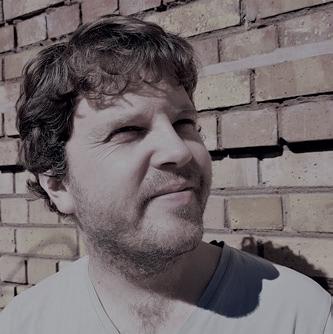
Anders Lorenzen is a Danish blogger and film and TV enthusiast living in London.
Photo: Det Danske Filminstitut

Scandinavian Culture Calendar: October 2025
From a festival of jazz in Stockholm and a festival of liquorice in Helsinki, to pop divas, disco queens and Finnish rockers… The Nordics have plenty to entice audiences with throughout October and beyond. Here is Scan Magazine’s pick of the bunch.
By Karl Batterbee
The British singer Sophie Ellis-Bextor will visit Denmark, Sweden and Norway in October as part of her Europe and North America tour. Press image
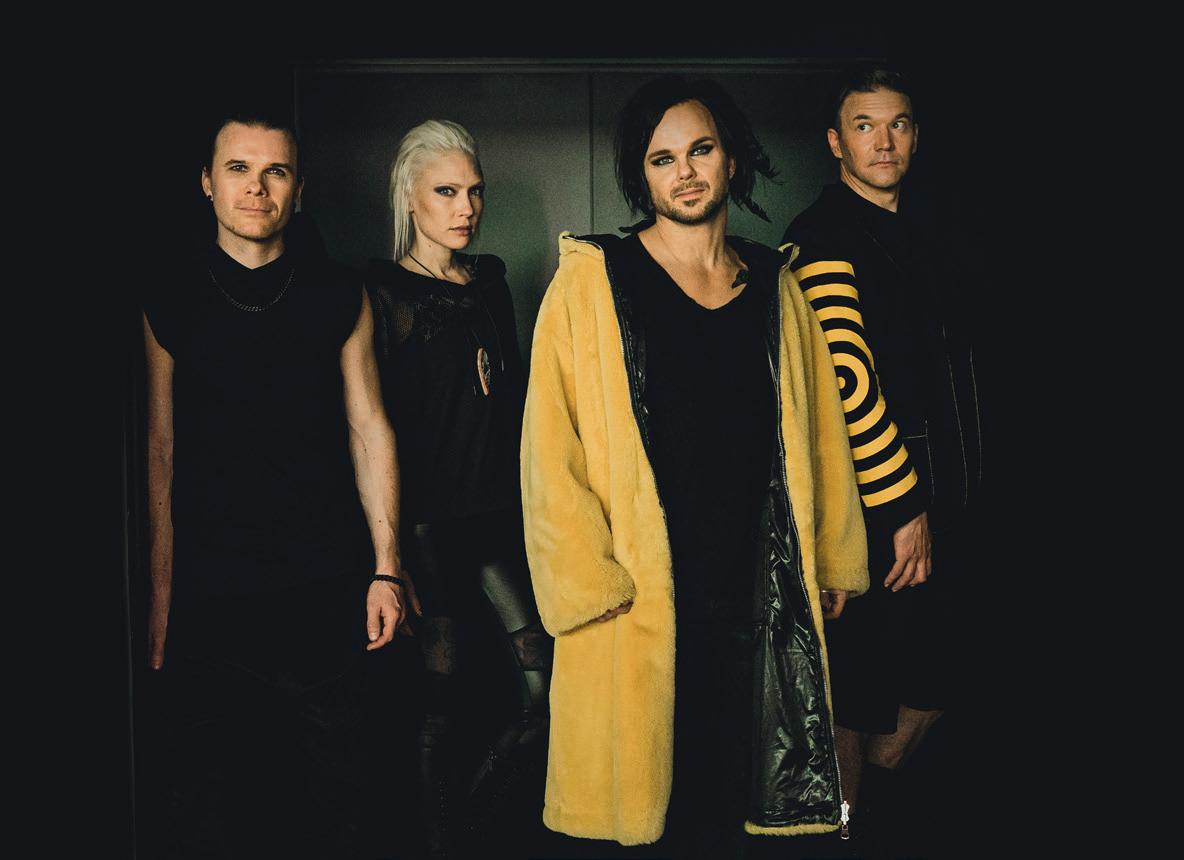
The Rasmus (3 – 18 October)
From Lahti to Helsinki, The Rasmus will spend October finishing off their tour of Finland before heading out on a string of dates across Europe, the Middle East, South America and Australia. The Finnish rockers are calling it the Weirdo Tour and it’s to celebrate their 30th anniversary. If you’ve listened to any of their albums, you’ll know to expect a kaleidoscopic collage of heavy guitars set against futuristic electronics, as well as pop hooks that find their way into the heart of any music fan. It’s no surprise that they’ve become one of Finland’s biggest music exports, selling millions of records worldwide and winning award after award. You can find the full tour schedule on the band’s website. Various dates throughout Finland www.therasmus.com
Sophie Ellis-Bextor (3, 4 and 5 October)
With her mix of glittering disco, pop and ‘80s synth sounds, Sophie Ellis-Bextor became a global name in the early 2000s – and she’s continued to reinvent herself ever since. Her Kitchen Disco live streams were a light relief during the lockdown era of COVID, and they led to her securing a regular disco show on BBC Radio 2. An appearance of her signature hit Murder on the Dancefloor during the iconic final scene of the film Saltburn led to the classic becoming a chart smash all over again, over two decades on from its original release. Now, she’s capitalising on her resurgence in popularity and heading out on tour across Europe and North America, with three Scandinavian dates in October.
Copenhagen (3 October), Stockholm (4 October), Oslo (5 October) www.sophieellisbextor.net
Stockholm Jazz Festival 2025 (10 – 18 October)
Stockholm Jazz Festival is one of Sweden’s largest and longest-running festivals – a living testament to the breadth, power and unifying spirit of jazz. Each year, the festival brings together over 30,000 visitors during a week filled with concerts, encounters and musical discoveries – as jazz rhythms seep into every corner of the city. Since 2012, the festival has taken the shape of an indoor city-wide celebration, letting jazz resonate across more than 70 venues – from concert halls to basements, museums, bookstores,
One of Finland’s biggest music exports of all time, The Rasmus are touring across Finland in October before heading out across the rest of the world.
Photo: Venla Shalin

bars and cultural centres. The programme features around 300 acts from around the world, showcasing everything from international legends to the next generation of voices. If you’re in the Swedish capital this October, allow yourself to become immersed in jazz!.
Stockholm, Sweden www.stockholmjazz.se
Culture Night (10 October)
Copenhagen’s annual Culture Night offers children and adults hundreds of cultural events in just one night. People are invited to experience Copenhagen in a different light and see places they would not normally get access to, when museums, churches, exhibition halls, art galleries, humanitarian organisations, political and cultural institutions open their doors to their secret rooms, basements, towers and special events on this one night only. And even if you simply wish to take a stroll around the city’s streets, Culture Night puts Copenhagen in a beautiful light. There are hundreds of events for all ages, so you can bring the whole family along.
Copenhagen, Denmark www.kulturnatten.dk

Opera for Children: Sleeping Awake (11 October – 9 November)
A popular opera event in a unique format, Kungliga Operan’s Unga Operan has been introducing young audiences to the genre for some time now. Their latest cultural
offering for the kiddies has been called a musical combination of Tchaikovsky and Tom & Jerry! Sleeping Awake (Sova Vaken) is the story of Gun, her cat Majs and what happens when Gun’s parents suddenly decide to separate. It’s a story of divorce told from the child’s point of view, the production is all about feeling alone and afraid of the unknown, but finding unexpected comfort in a singing cat. The show is recommended for children above the age of six..
Stockholm, Sweden www.operan.se
Erika Vikman (12 October – 12 December)
Finnish pop superstar Erika Vikman has taken Europe by storm following her participation in the Eurovision Song Contest in May. With the smash hit ICH KOMME, she hasn’t just conquered the charts – she has also secured her place as one of the Nordic region’s biggest and most exciting pop artists right now. This autumn, she’s embarking on her first solo European tour, and Stockholm is on the agenda in October. She’ll follow that by commencing an extensive tour of her native Finland
Immanuel Wilkins.
Photo: Leo Ahmed
Before an extensive tour of her native Finland, Erika Vikman is heading out on a European leg, with a stop in Stockholm.
Photo: Alma-Bengtsson / EBU
throughout November and December…
Think of it as a victory lap, of sorts! Stockholm (12 October), Finland (November / December) www.warnermusiclive.fi
Licorice Festival 2025 (25 – 26 October)
You’ve probably got a pretty good idea of what you can expect at the Liquorice Festival! However, visitors will discover ways to experience liquorice they might never have imagined. Sweet, salty, with chocolate and used as a spice in cooking or baking, this fair is all about offering, tasting, learning and discovering. It’s called ‘the black gold’ for a reason, and here you’ll be amazed at just how versatile it is, as you discover new favourite recipes and flavour combinations. Many of the top producers of liquorice will be in attendance and serving up samples of their newest creations… You certainly won’t be leaving here hungry! .
Helsinki, Finland www.lakritsifestivaalit.fi
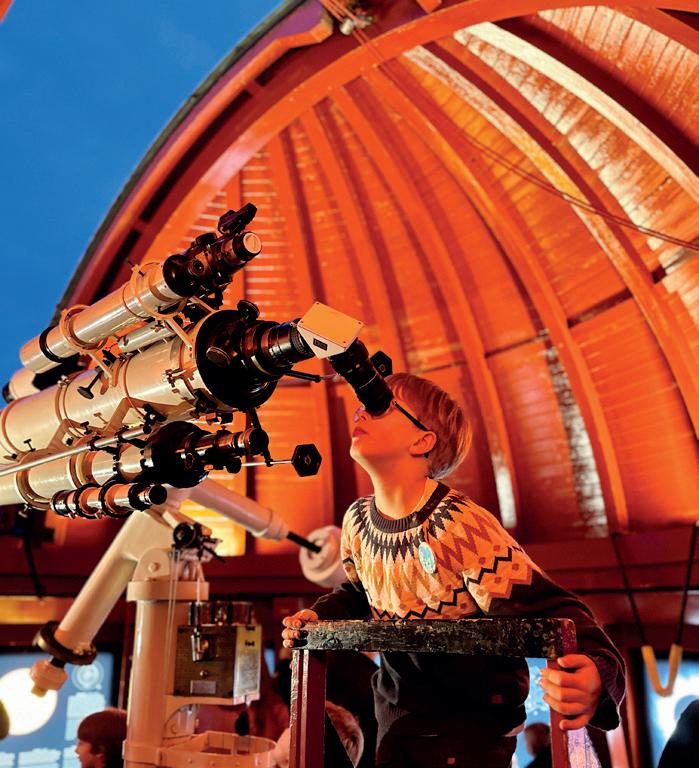

Children aged six and above are invited to enjoy opera stories told in a unique way, until early November. Photo: Kungliga Operan / Annelie Carlström
See Copenhagen like never before, in an access-all-areas fashion, during Culture Night. Photo: Maria Sattrup
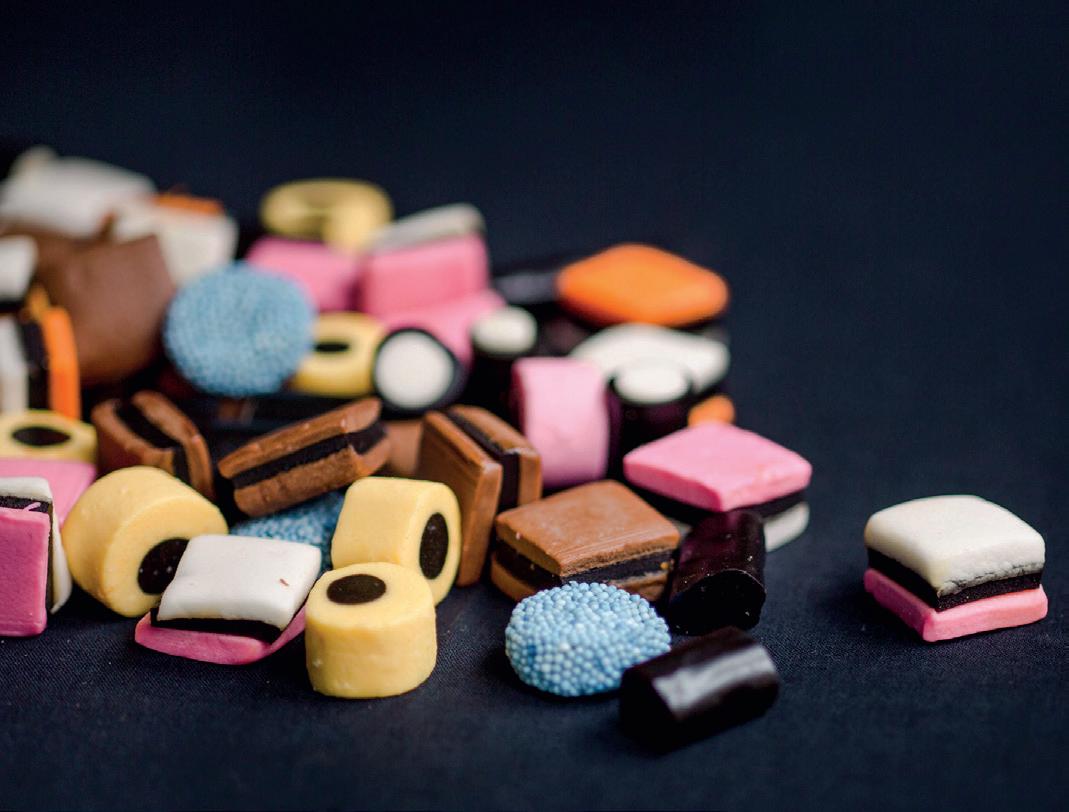
Scan Magazine Issue 183 October 2025
Published 10.2025 ISSN 1757-9589
Published by Scan Client Publishing
Stibo Complete
Executive Editor
Thomas Winther
Creative Director
Mads E. Petersen
Editor
Signe Hansen
Copy-editor
Malin Norman
Graphic Designer
Mercedes Moulia
Cover Photo
Eleazar Cuadros
Contributors
Anders Lorenzen
Celina Tran
Gabi Froden
Heidi Kokborg
Karl Batterbee
Malin Norman
Molly Mcpharlin
Ndéla Faye
Nina Bressler
Signe Hansen
Sofia Nordgren
Xander Brett
Sales & Key Account Managers
Emma Fabritius Nørregaard
Evelina Duned
Mette Tonnessen
Advertising marketing@scanmagazine.co.uk
To Subscribe scanmagazine.co.uk/subscribe
Scan Magazine Ltd
3rd floor, News Building, 3 London Bridge Street, London SE1 9SG, United Kingdom www.scanclientpublishing.com info@scanmagazine.co.uk www.scanmagazine.co.uk
© All rights reserved. Material contained in this publication may not be reproduced, in whole or in part, without prior permission of Scan Magazine Ltd.
Scan Magazine® is a registered trademark of Scan Magazine Ltd.
This magazine contains advertorials/promotional articles
You know exactly what you can expect from the 2025 edition of the Licorice Festival, happening in late October.
Photo: Licorice and Salmiakki Festival

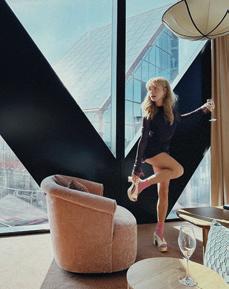

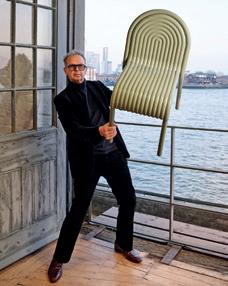
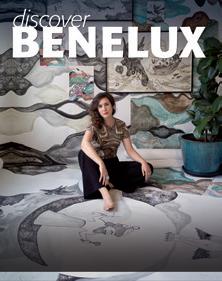
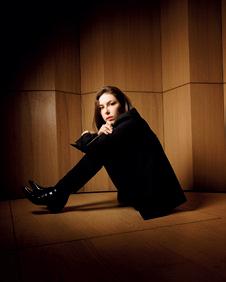
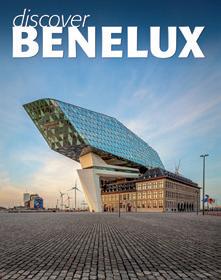

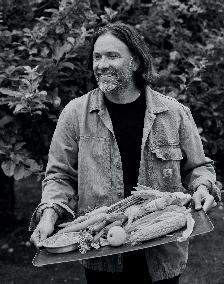

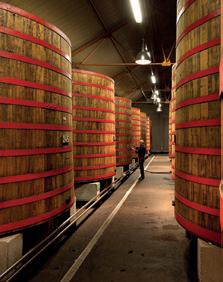

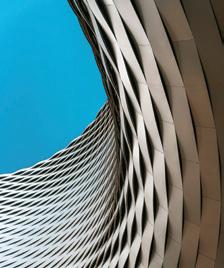

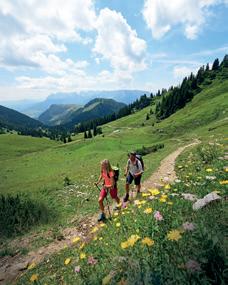
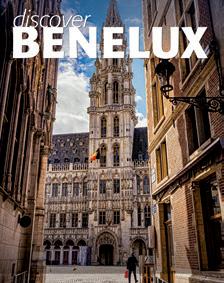

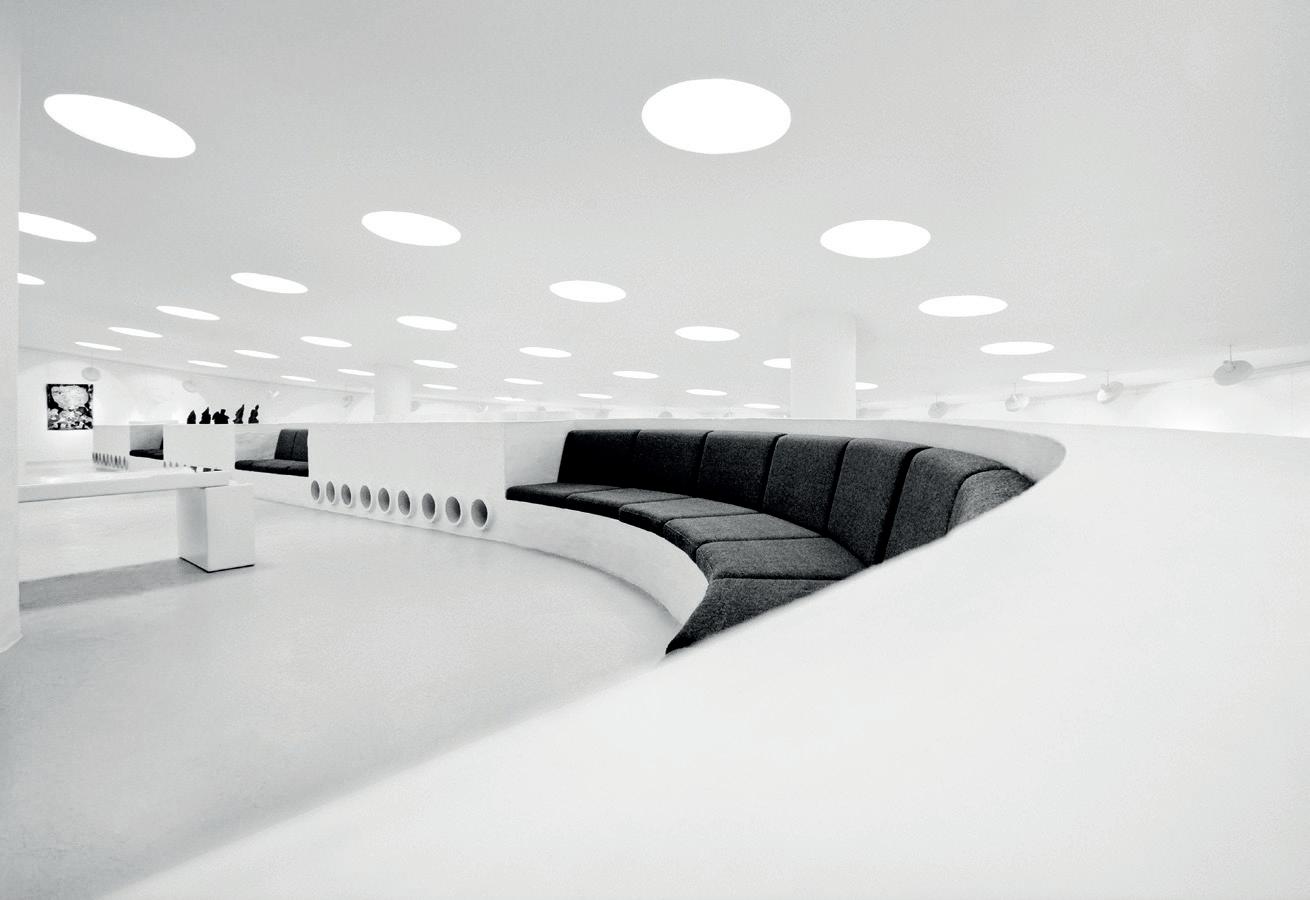
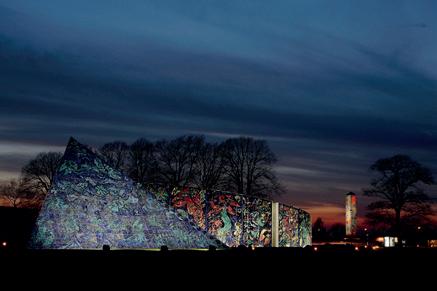
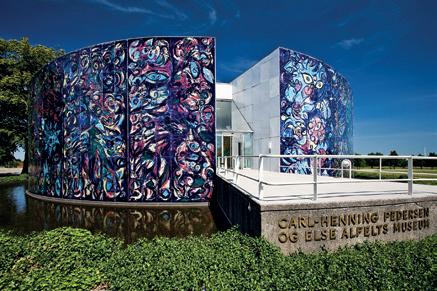
Carl-Henning Pedersen & Else Alfelts Museum is one of a small number of artist museums in Denmark. The iconic museum building opened in 1976 and was designed by the renowned C. F. Møller Architects.
The circular main building blends harmoniously into the area’s geometric landscape laid out by the landscape architect C. Th. Sørensen.
C.F. Møller Architects has overseen several expansions of the museum since it opened –most recently in 2015, when the museum was linked to the circular “Angli” building, originally built in 1965 as a textile factory by the same practice.
Carl-Henning Pedersen & Else Alfelts Museum www.chpeamuseum.dk
